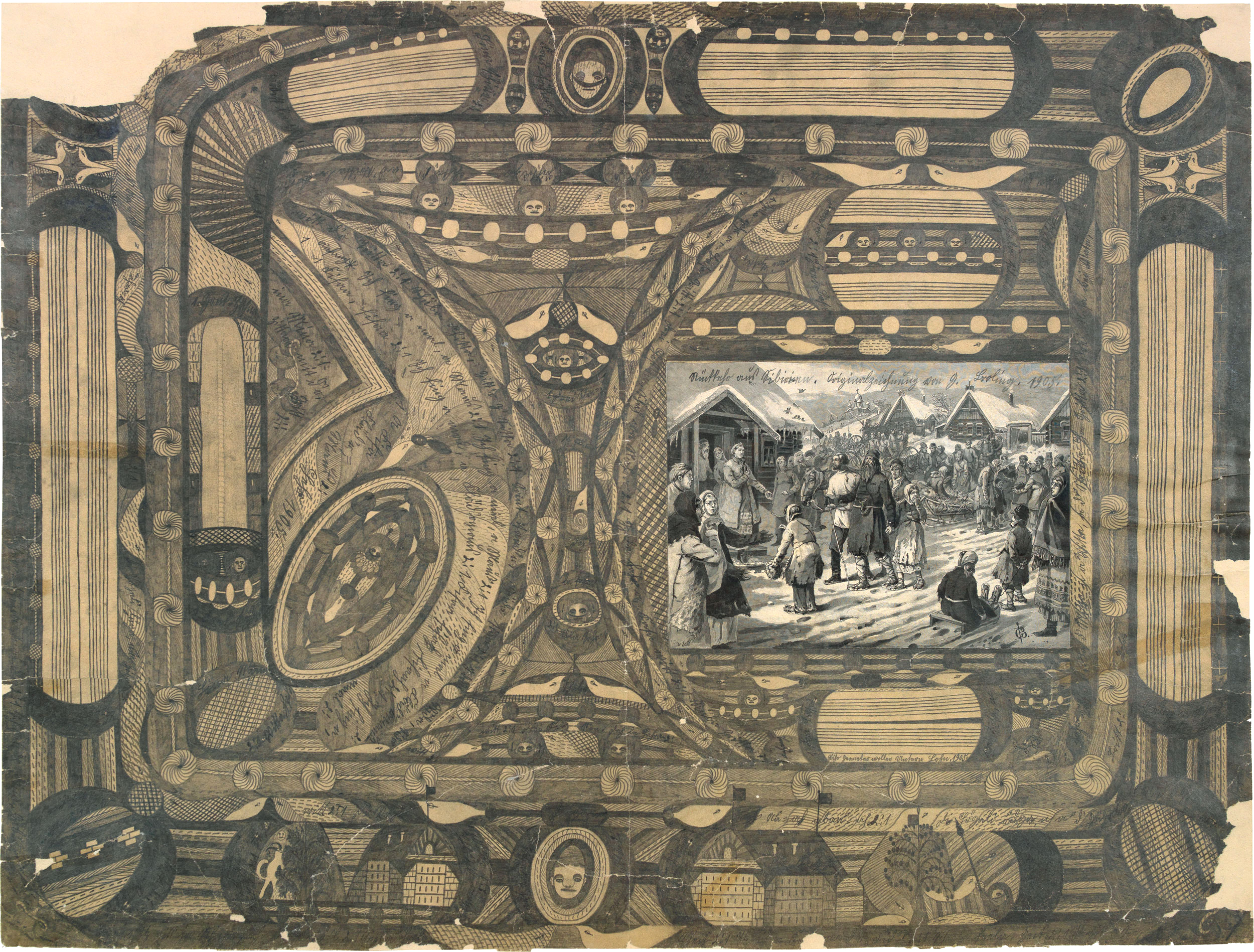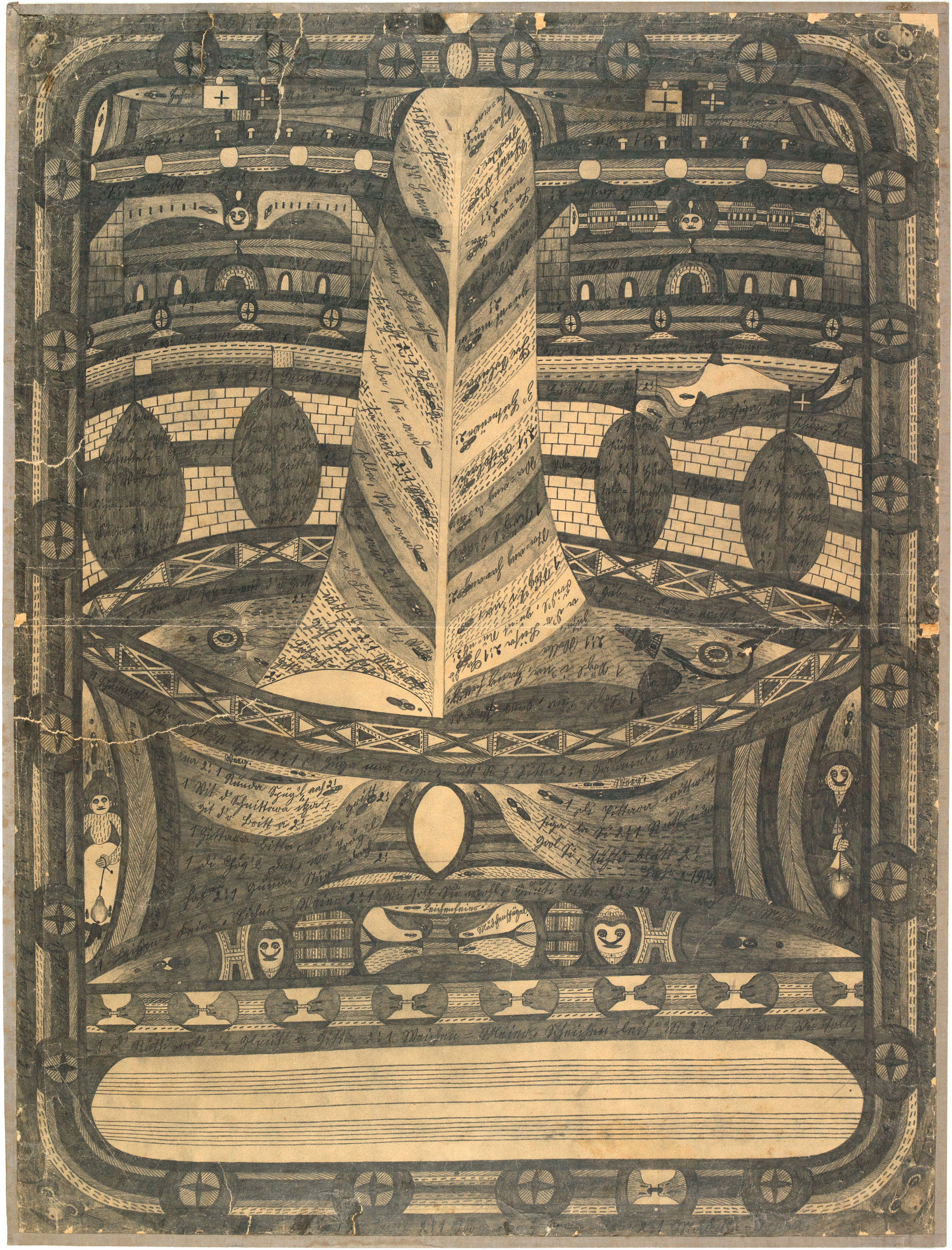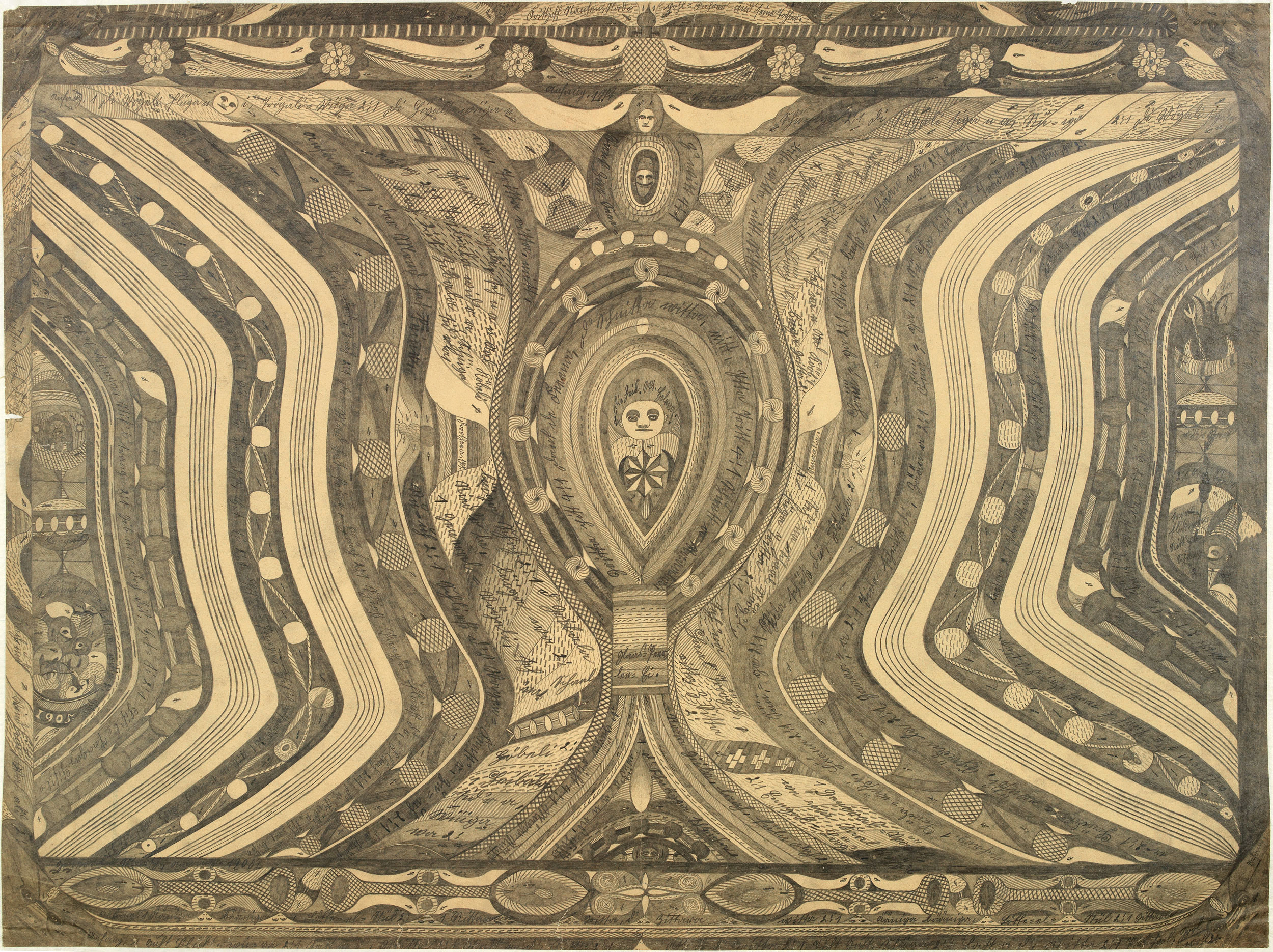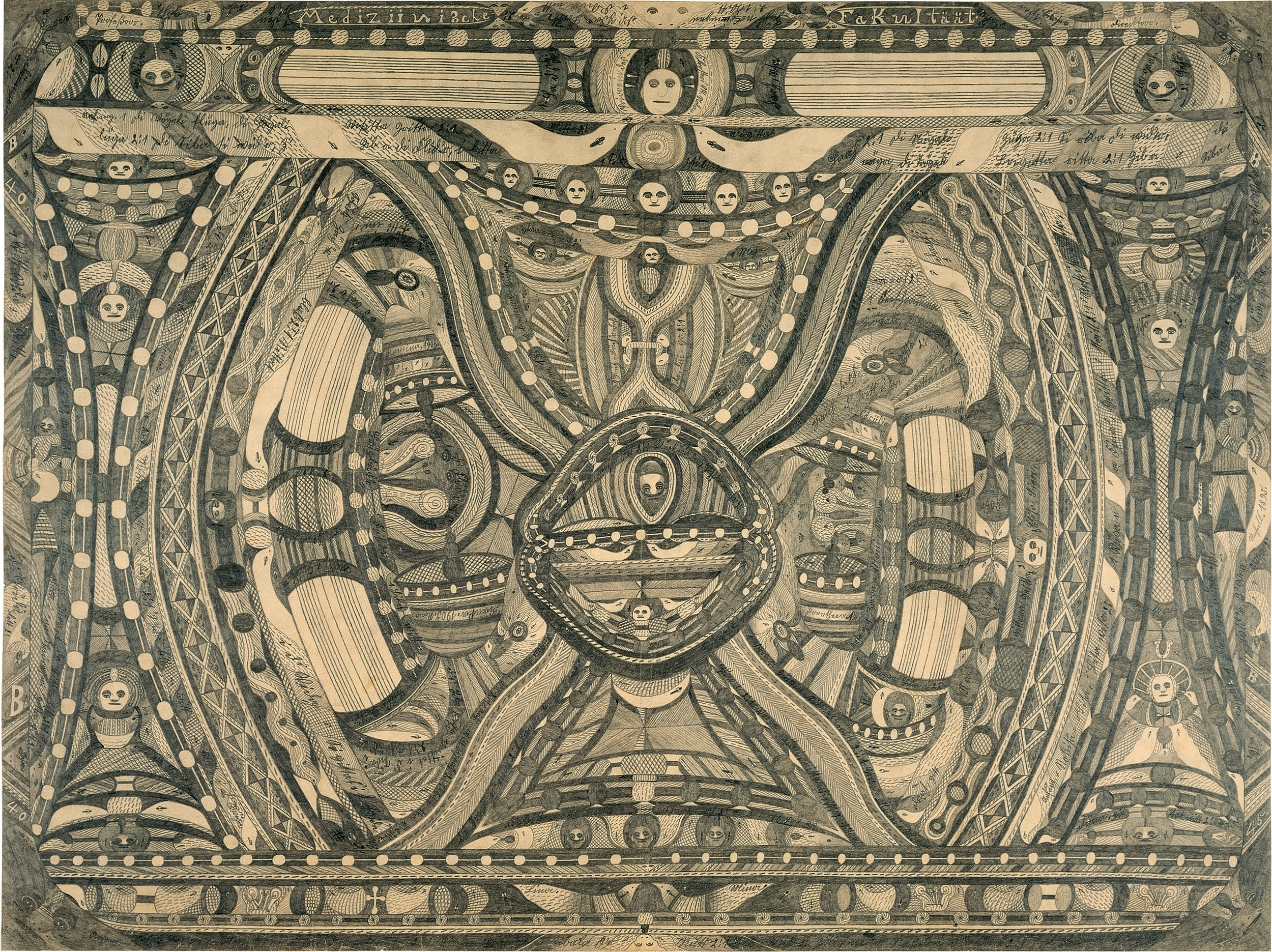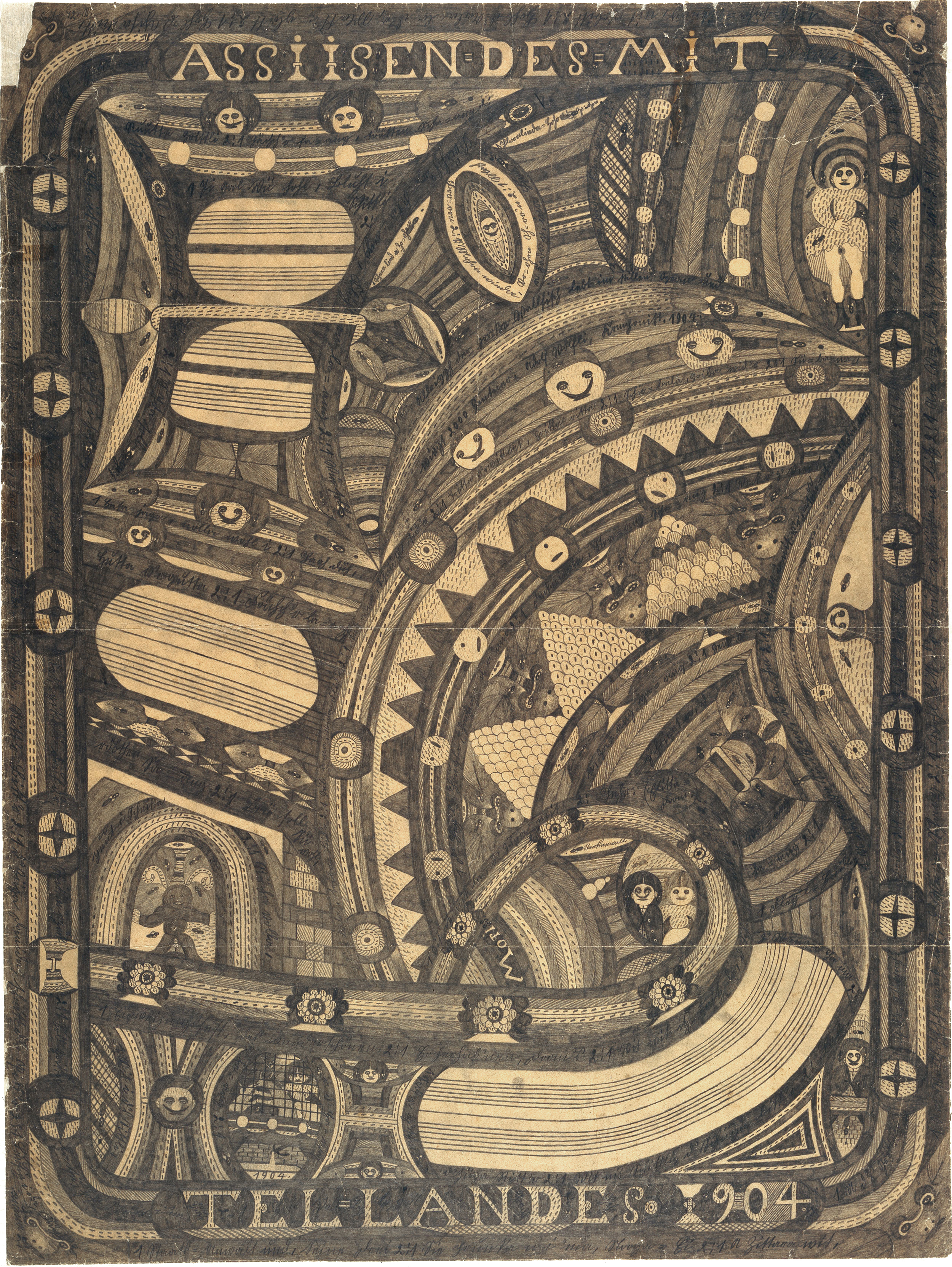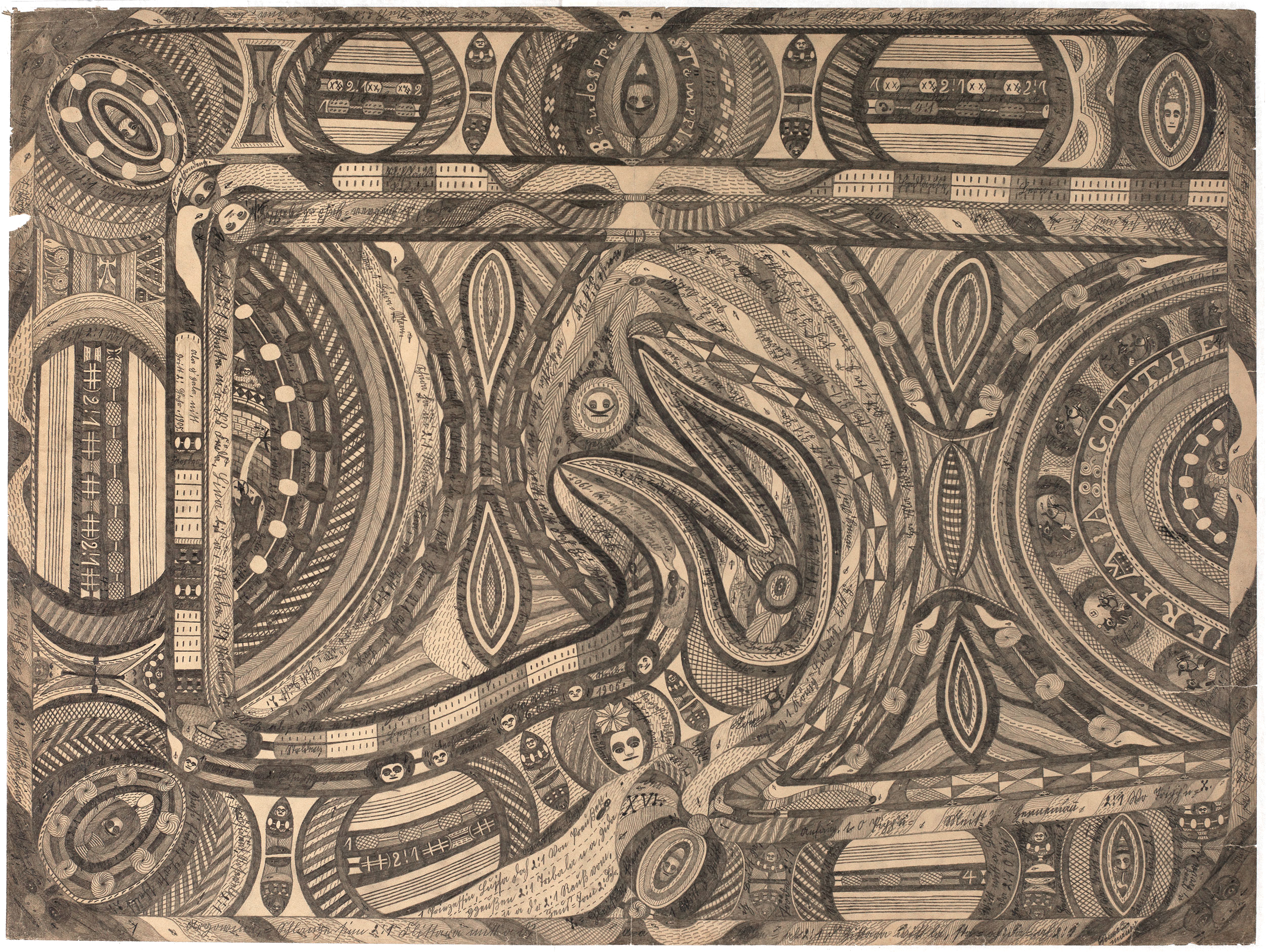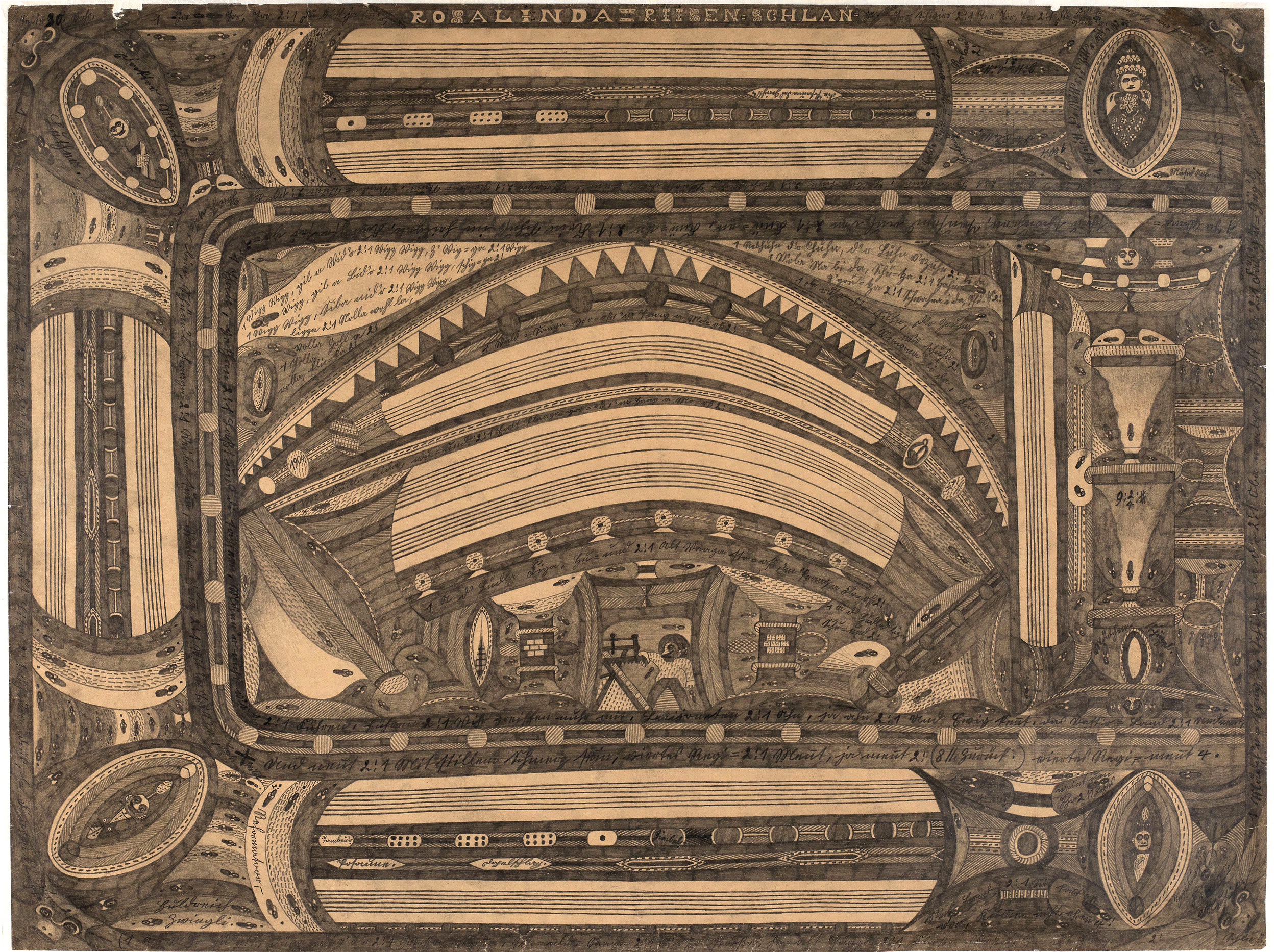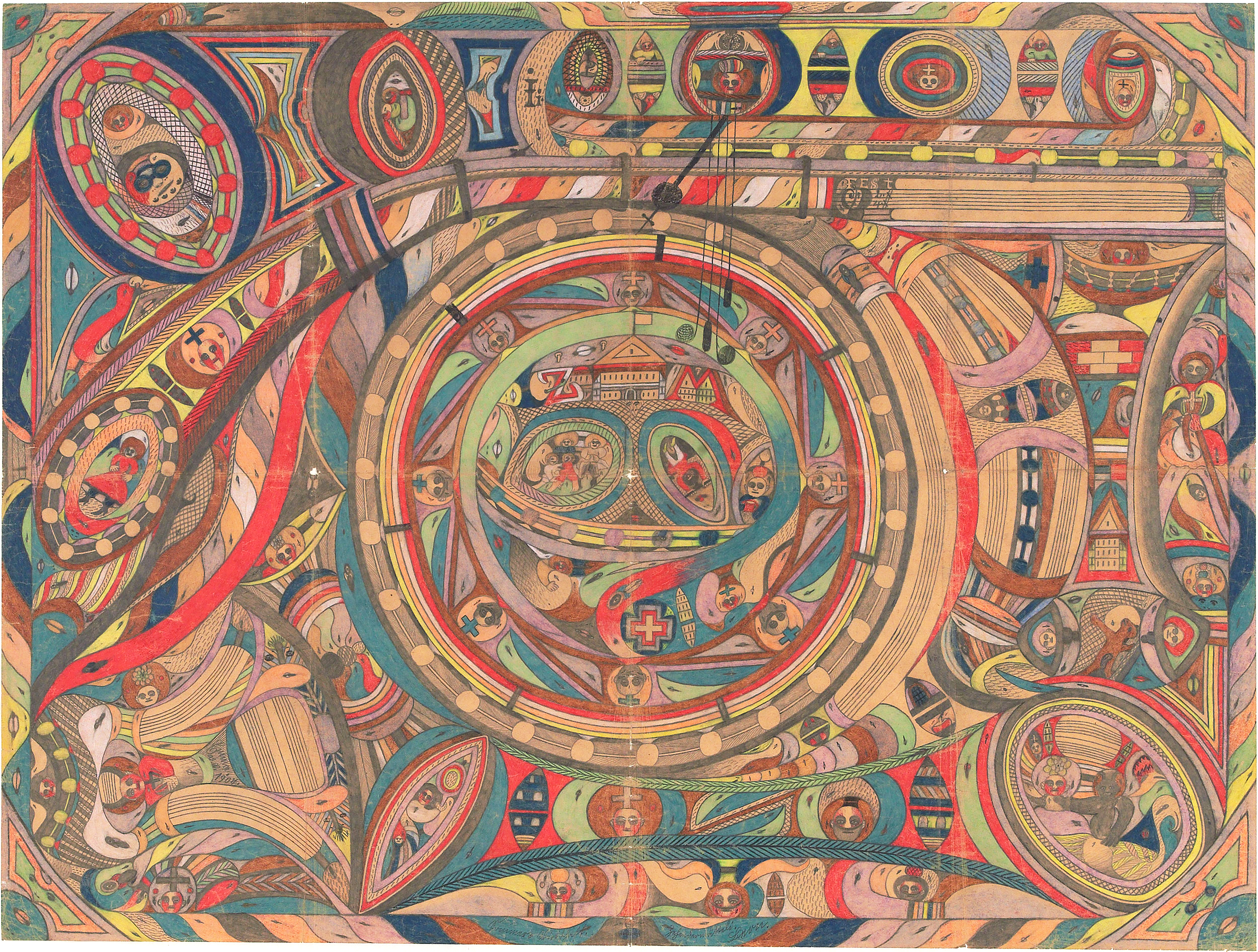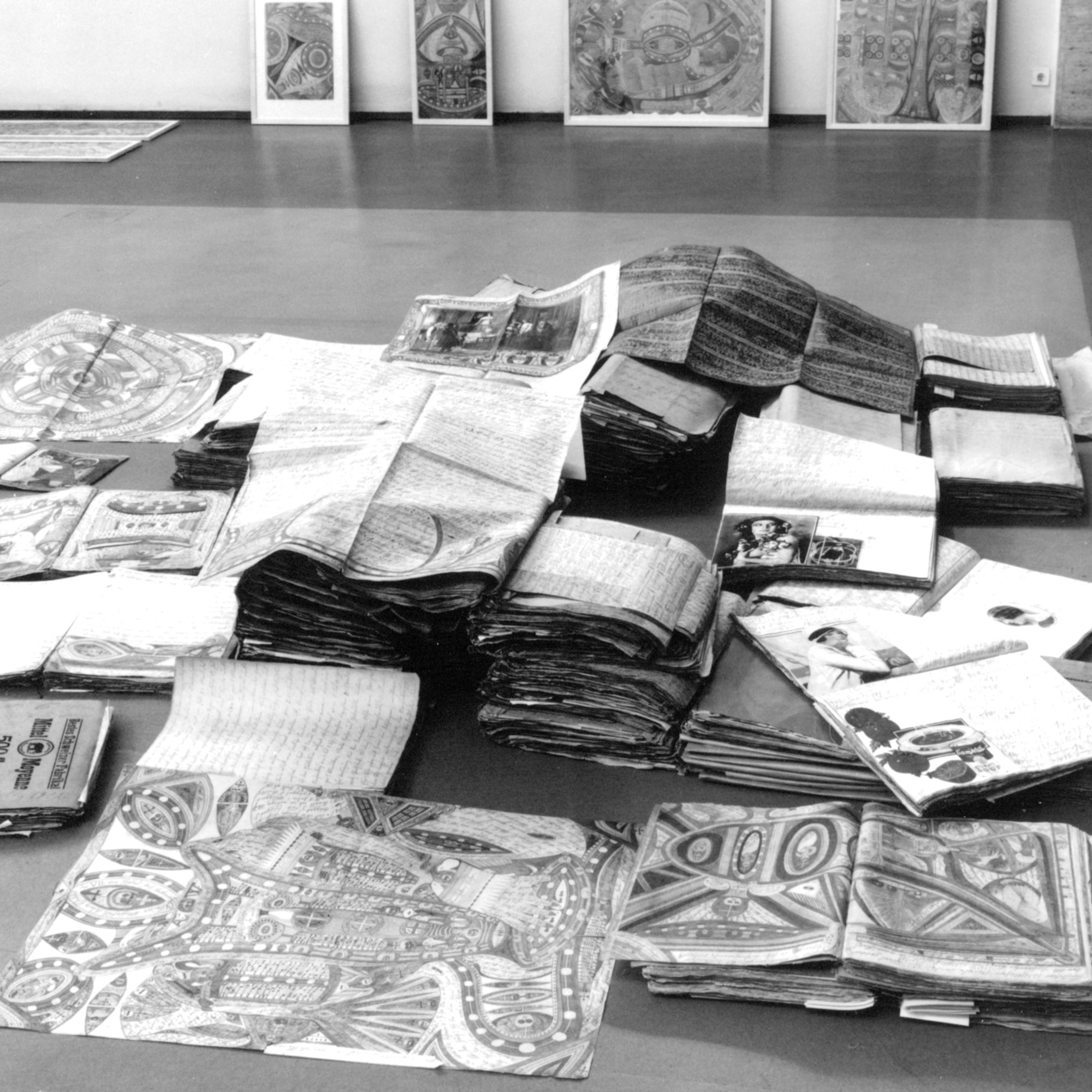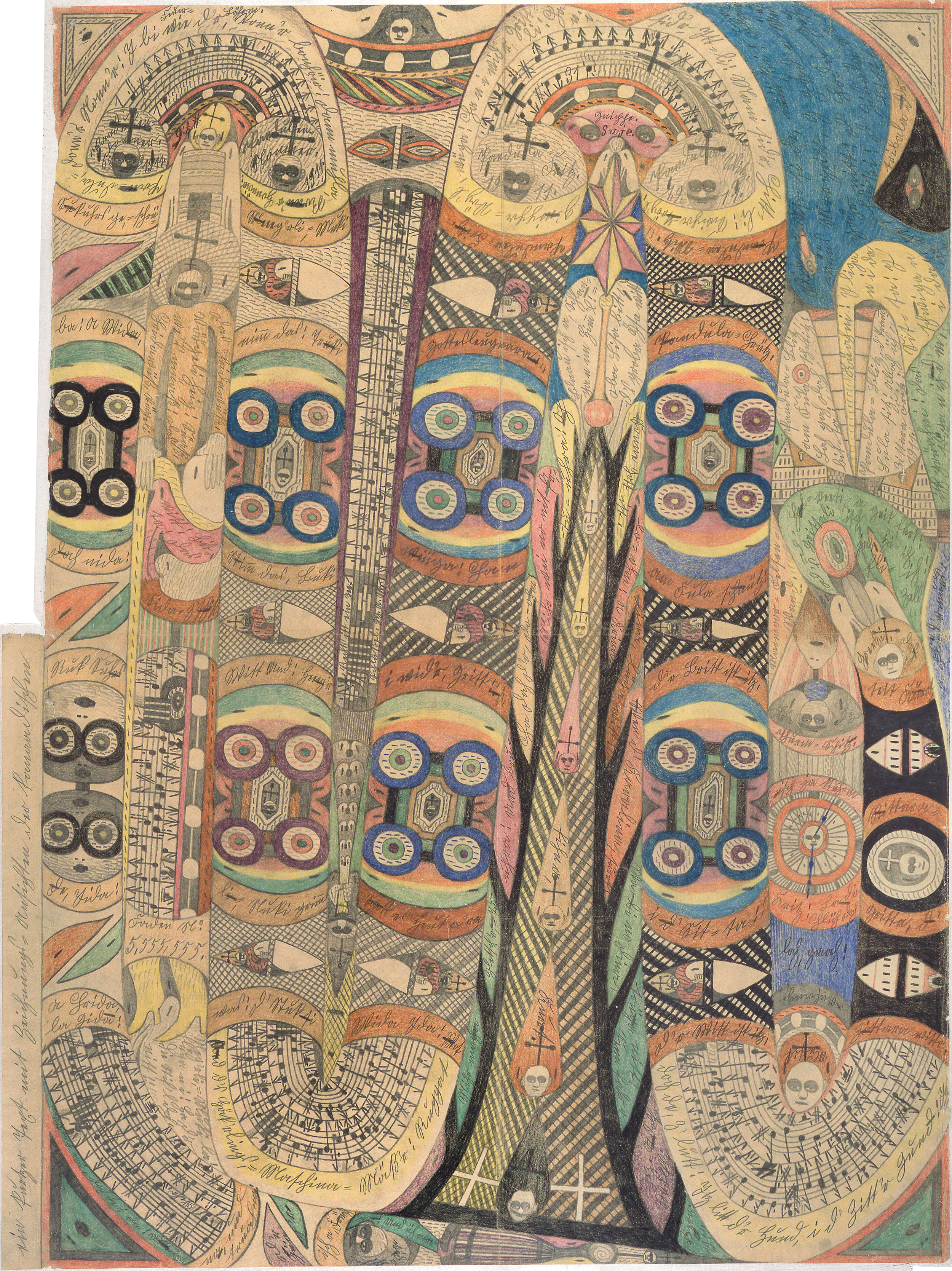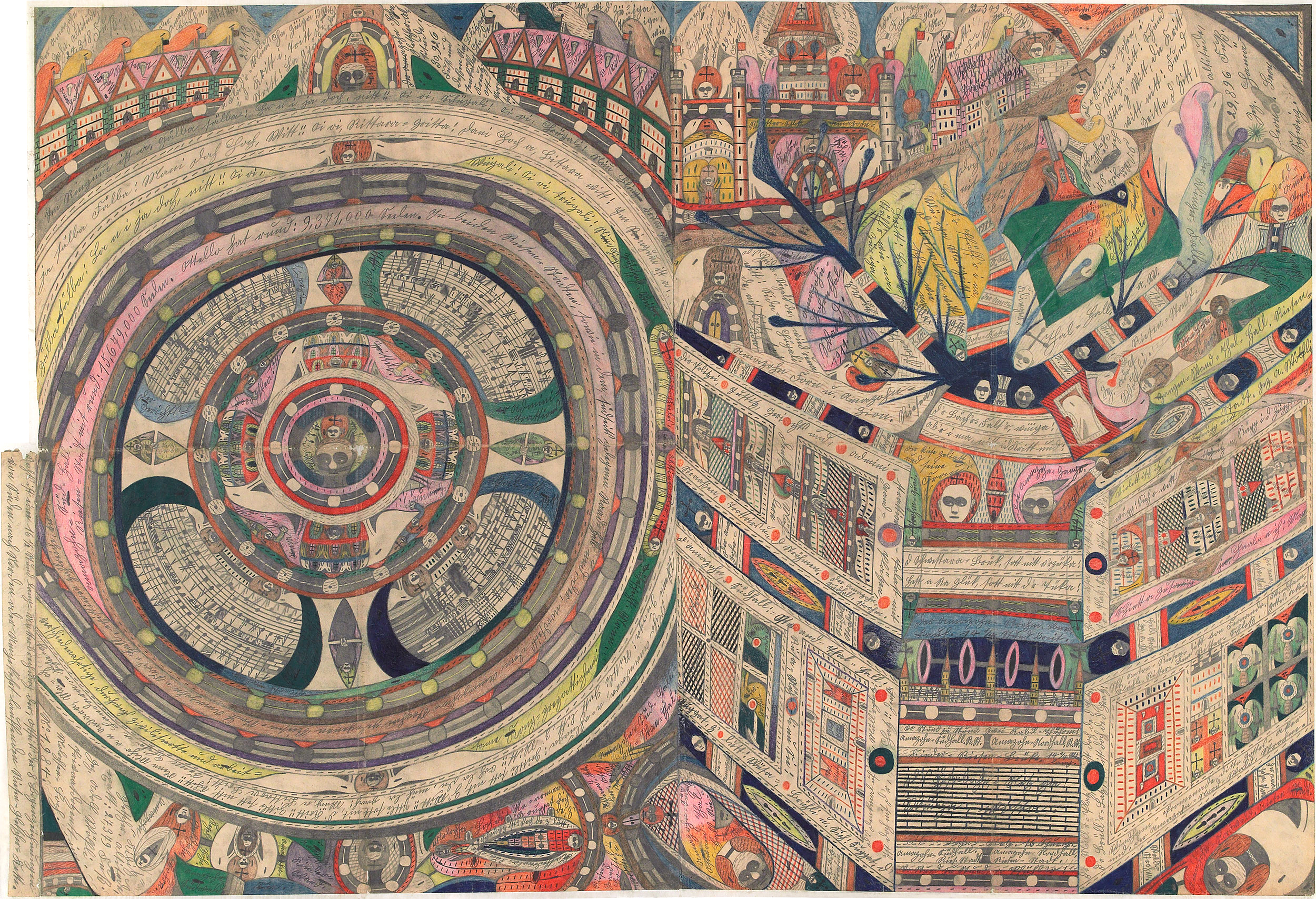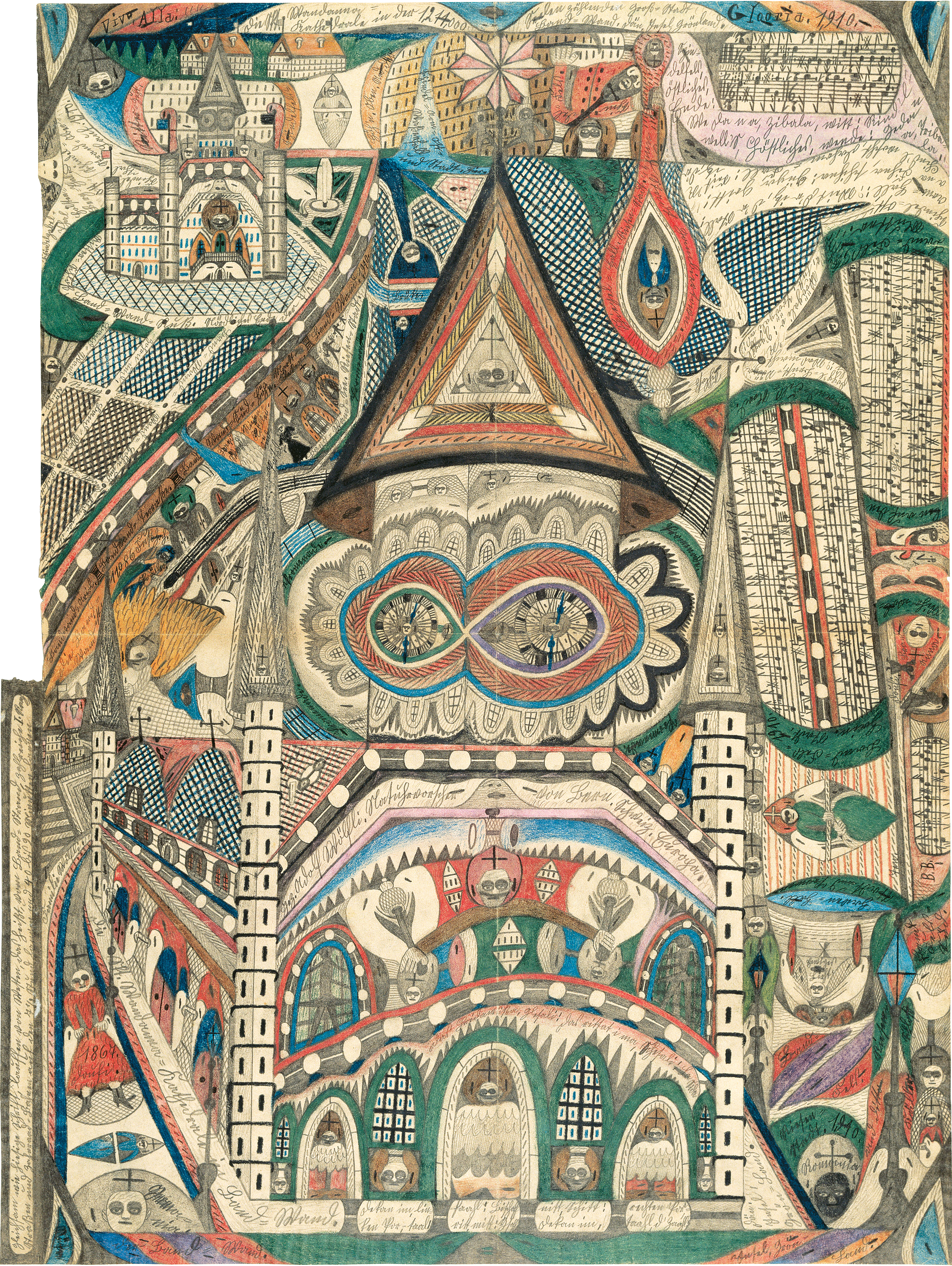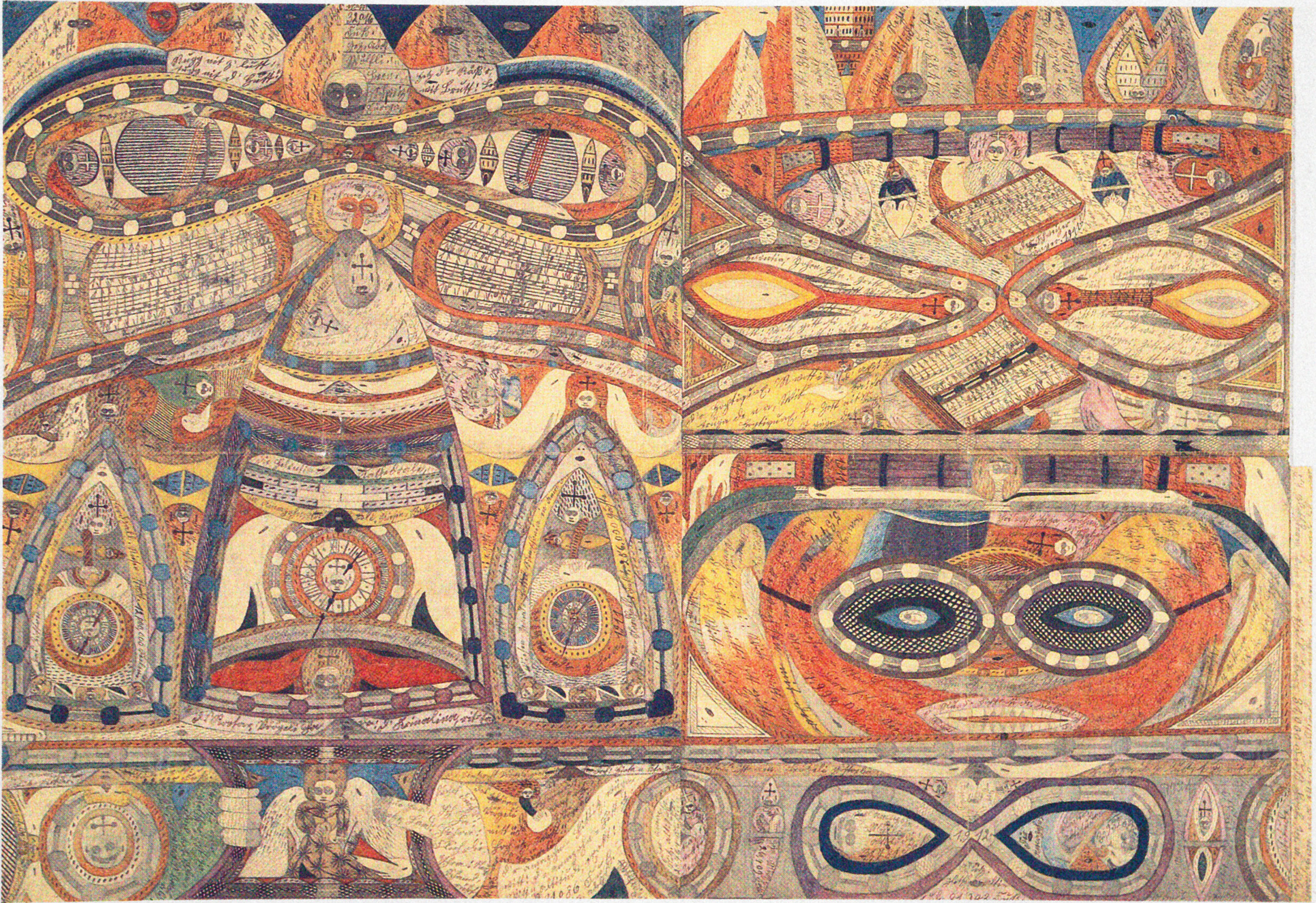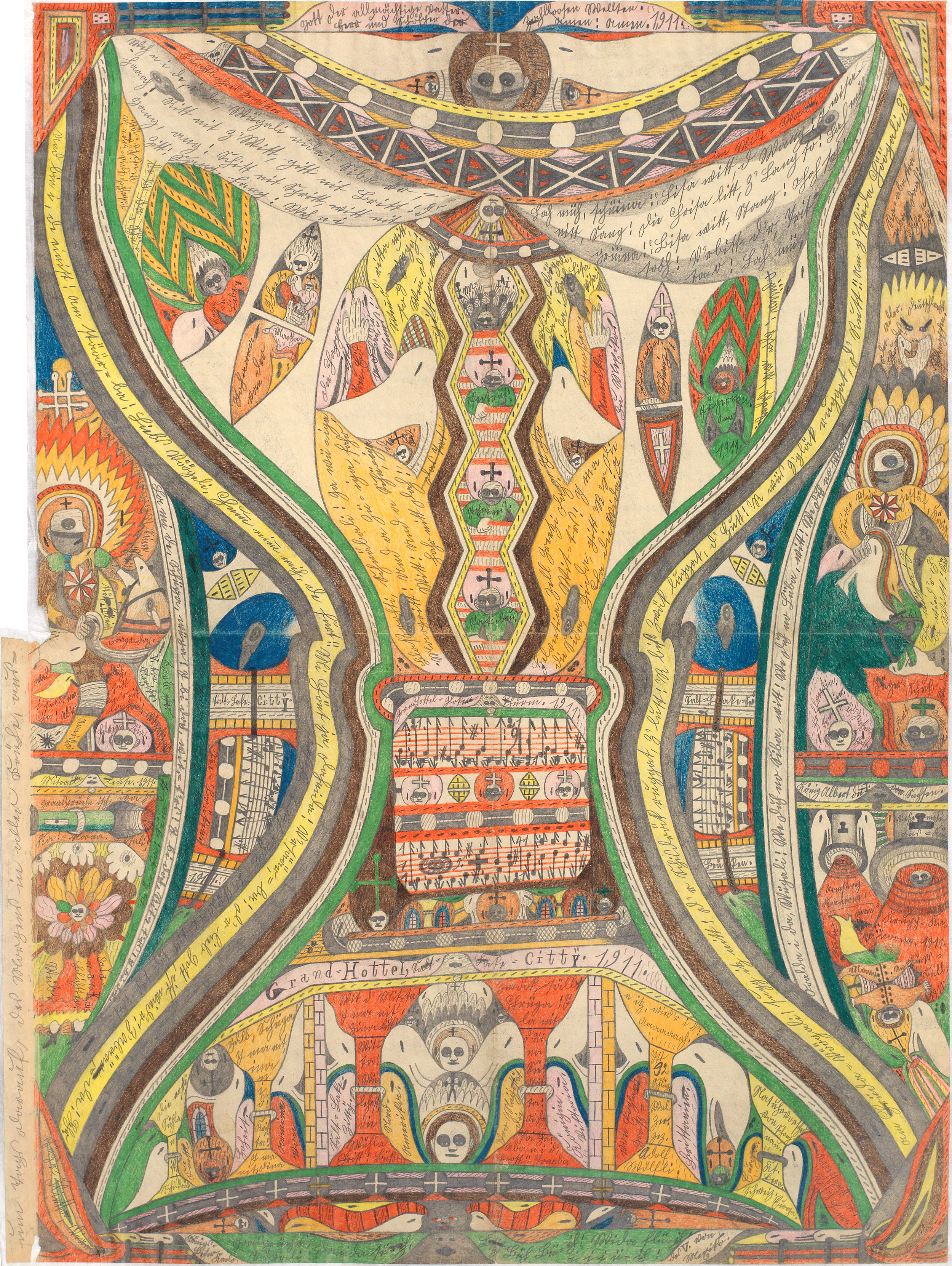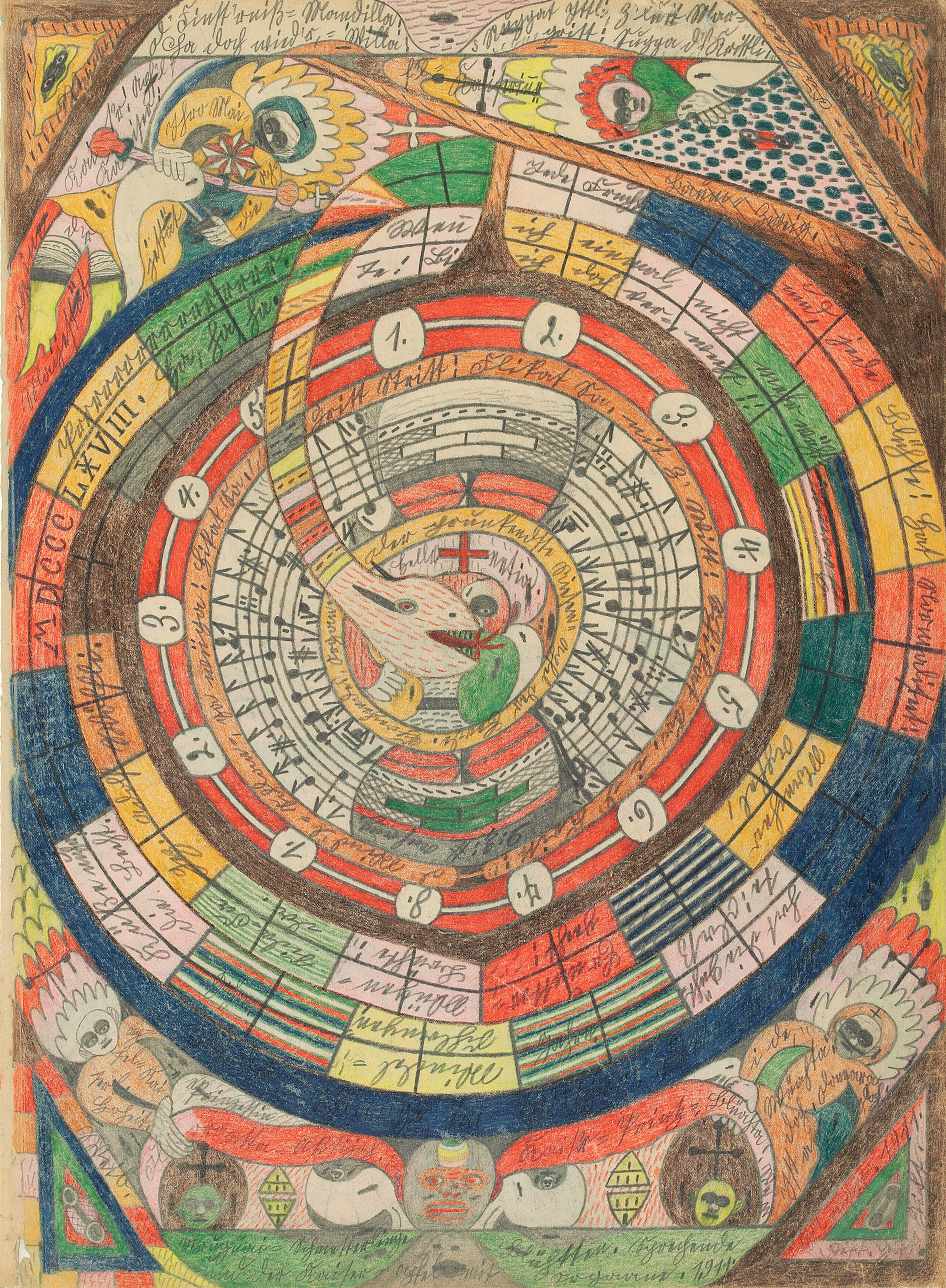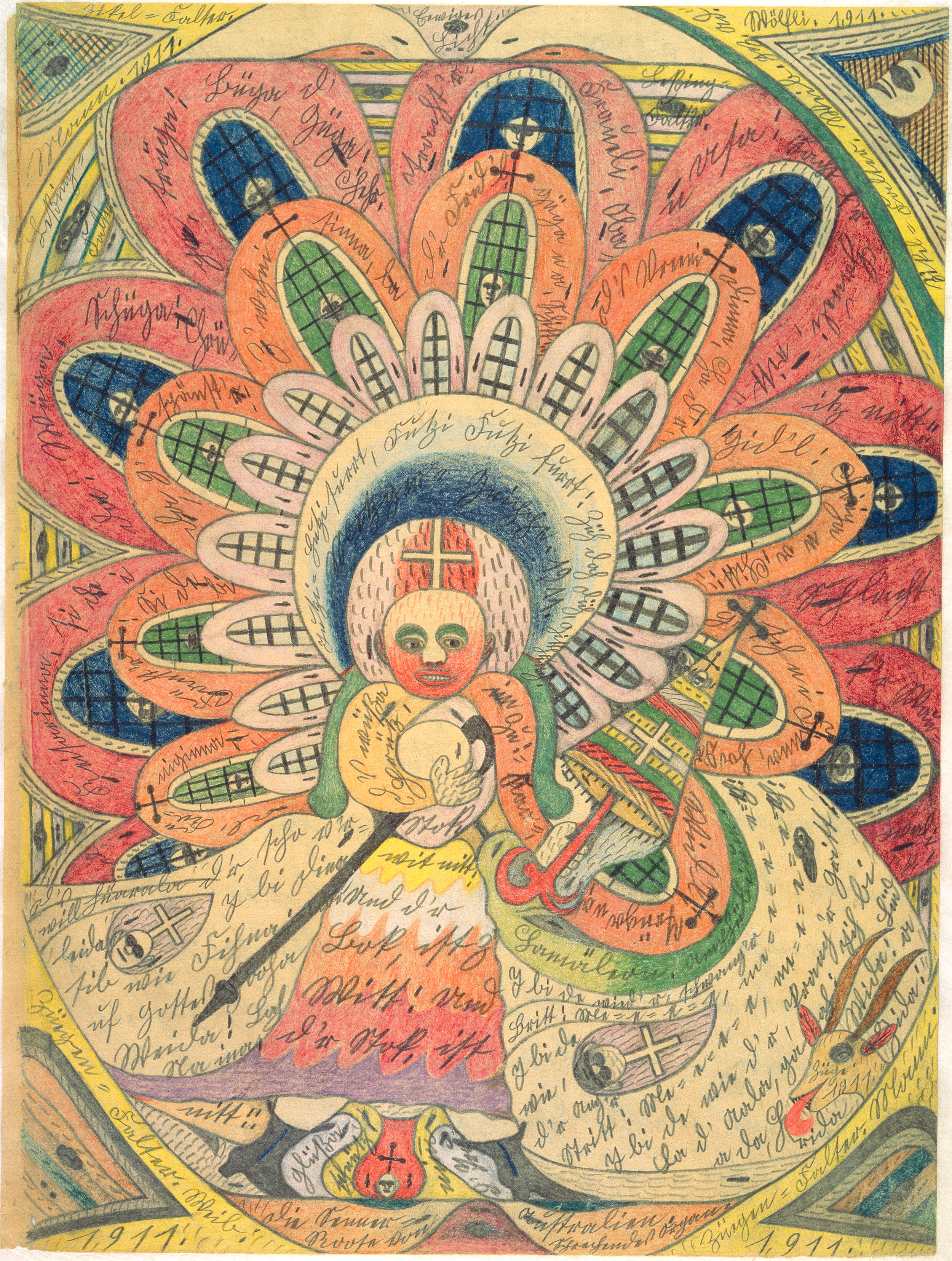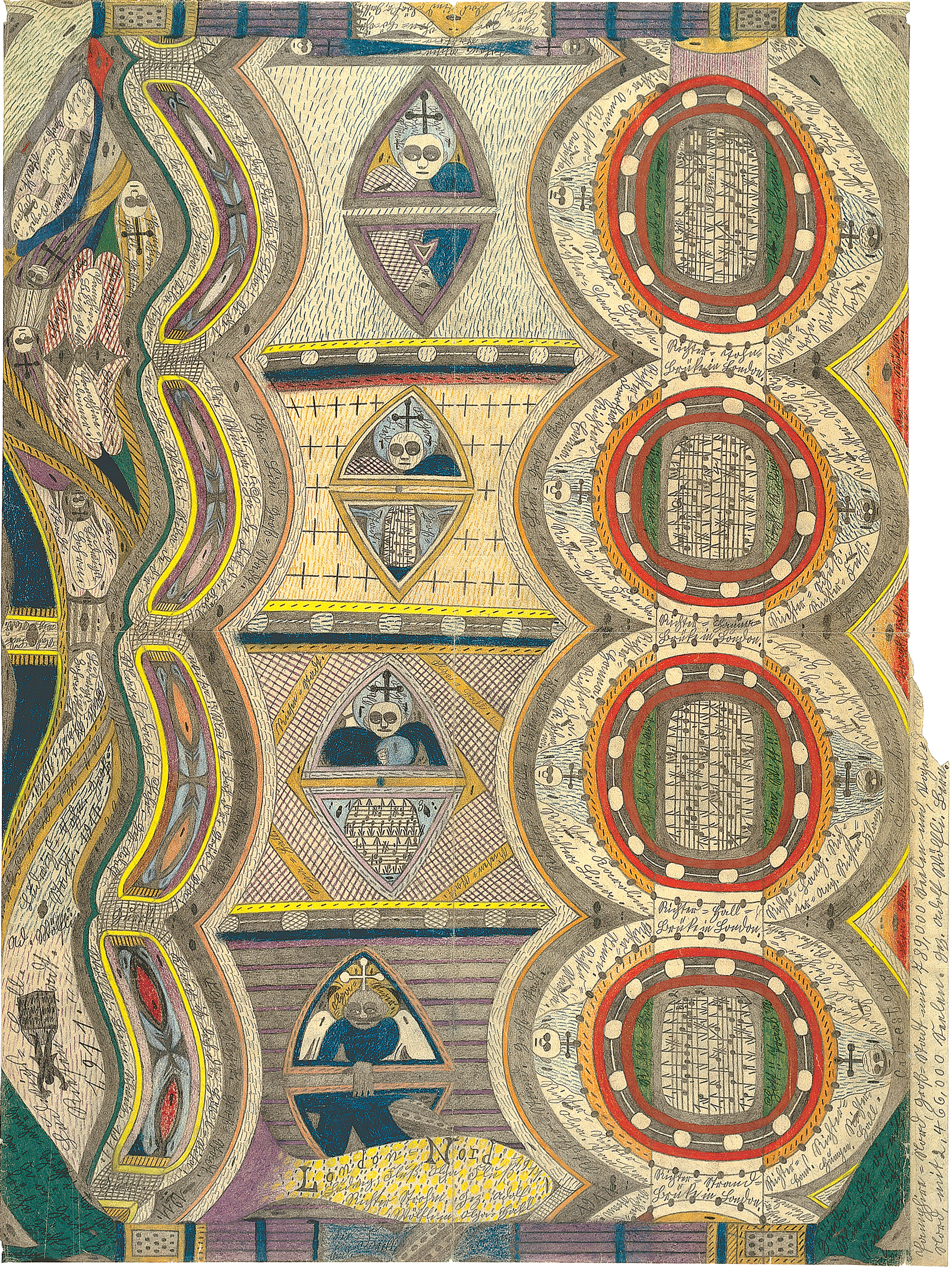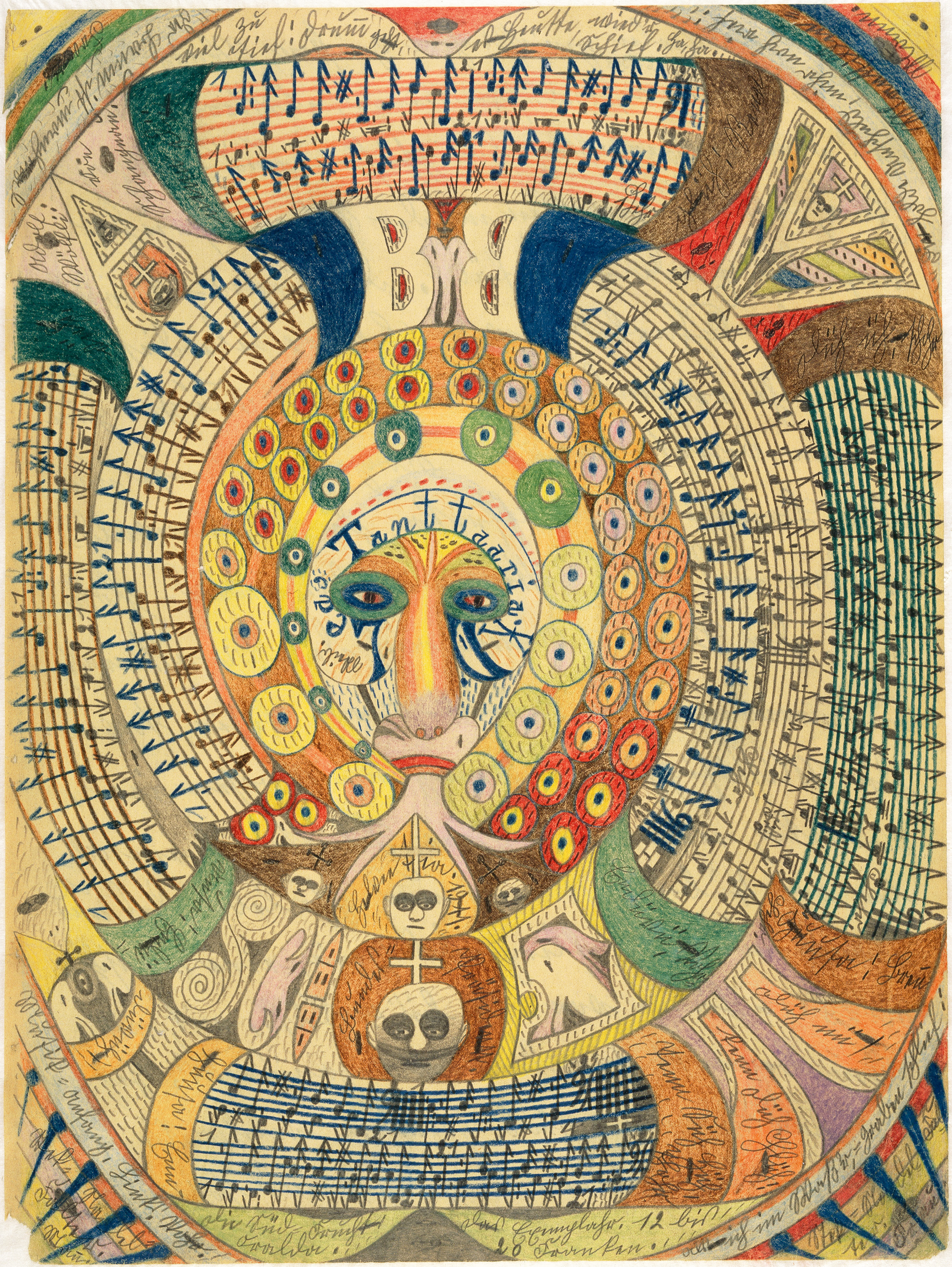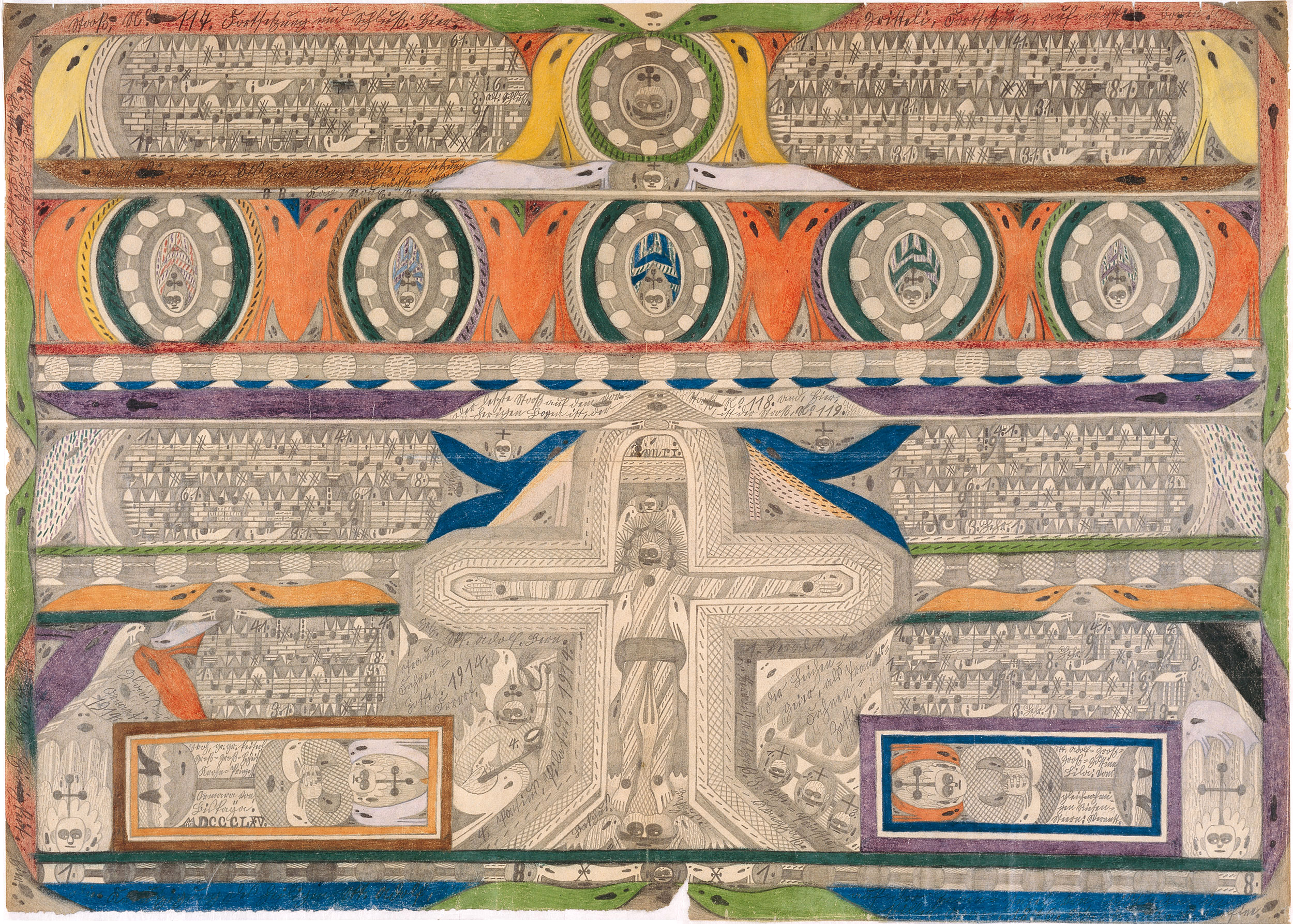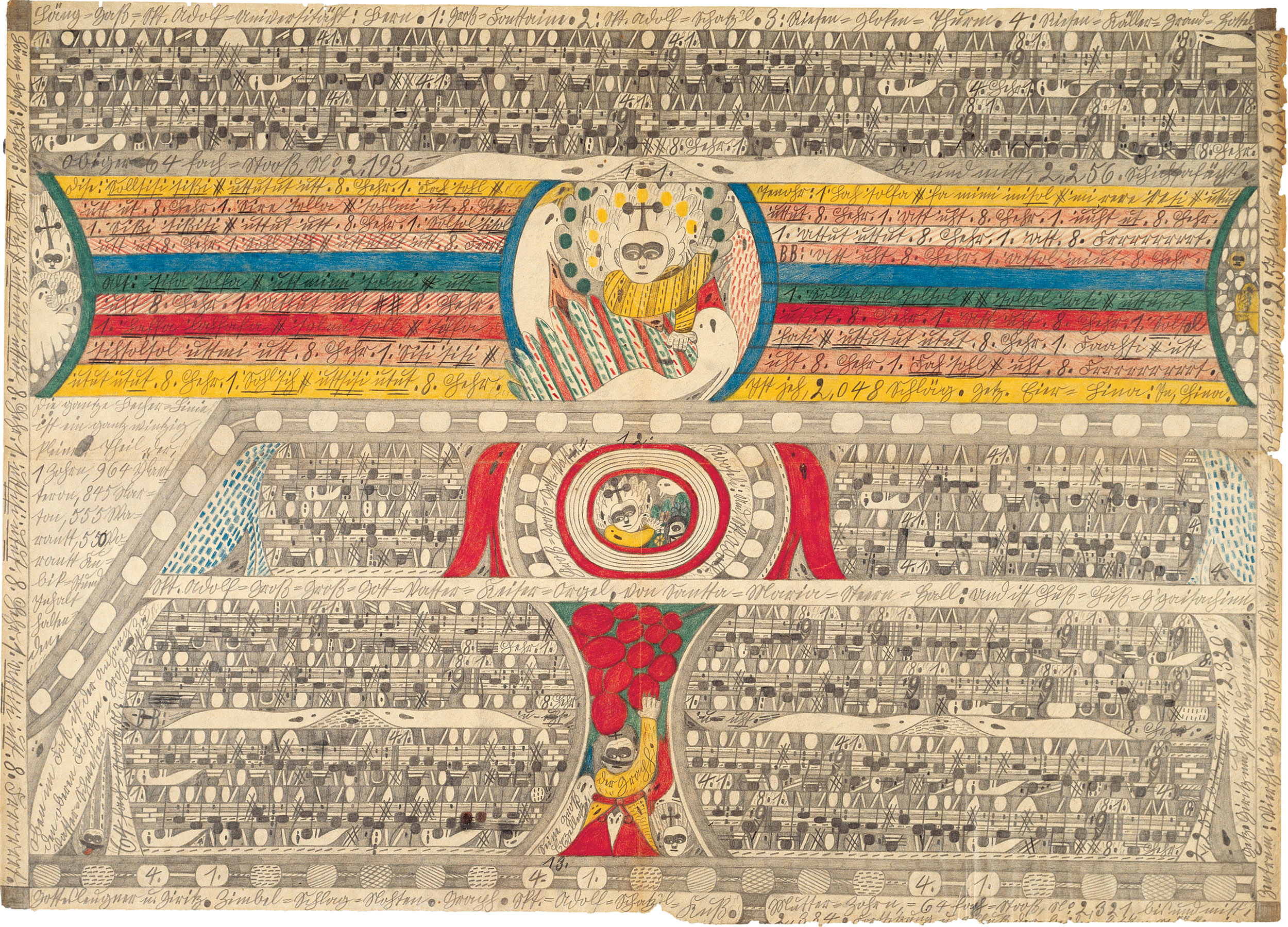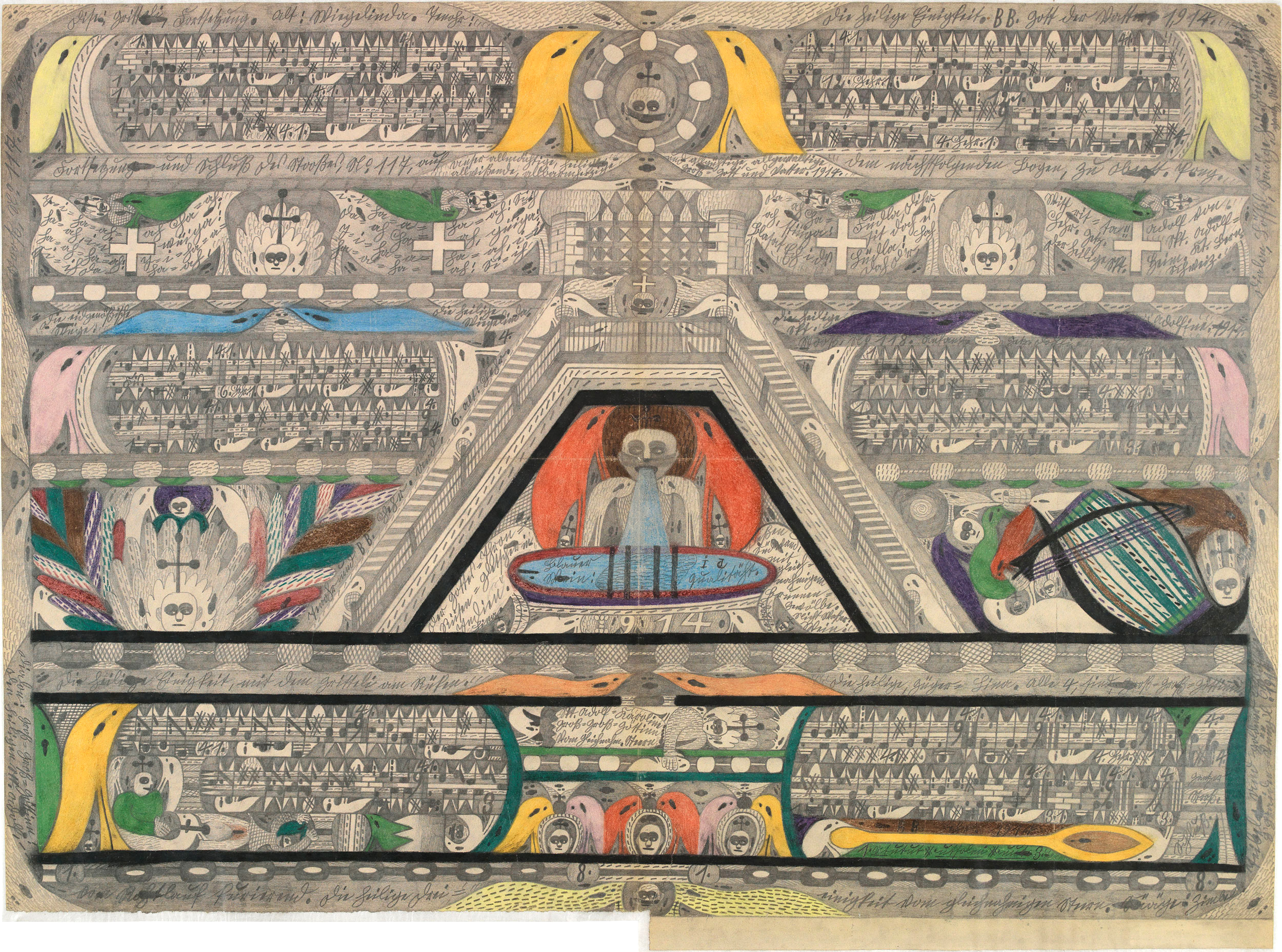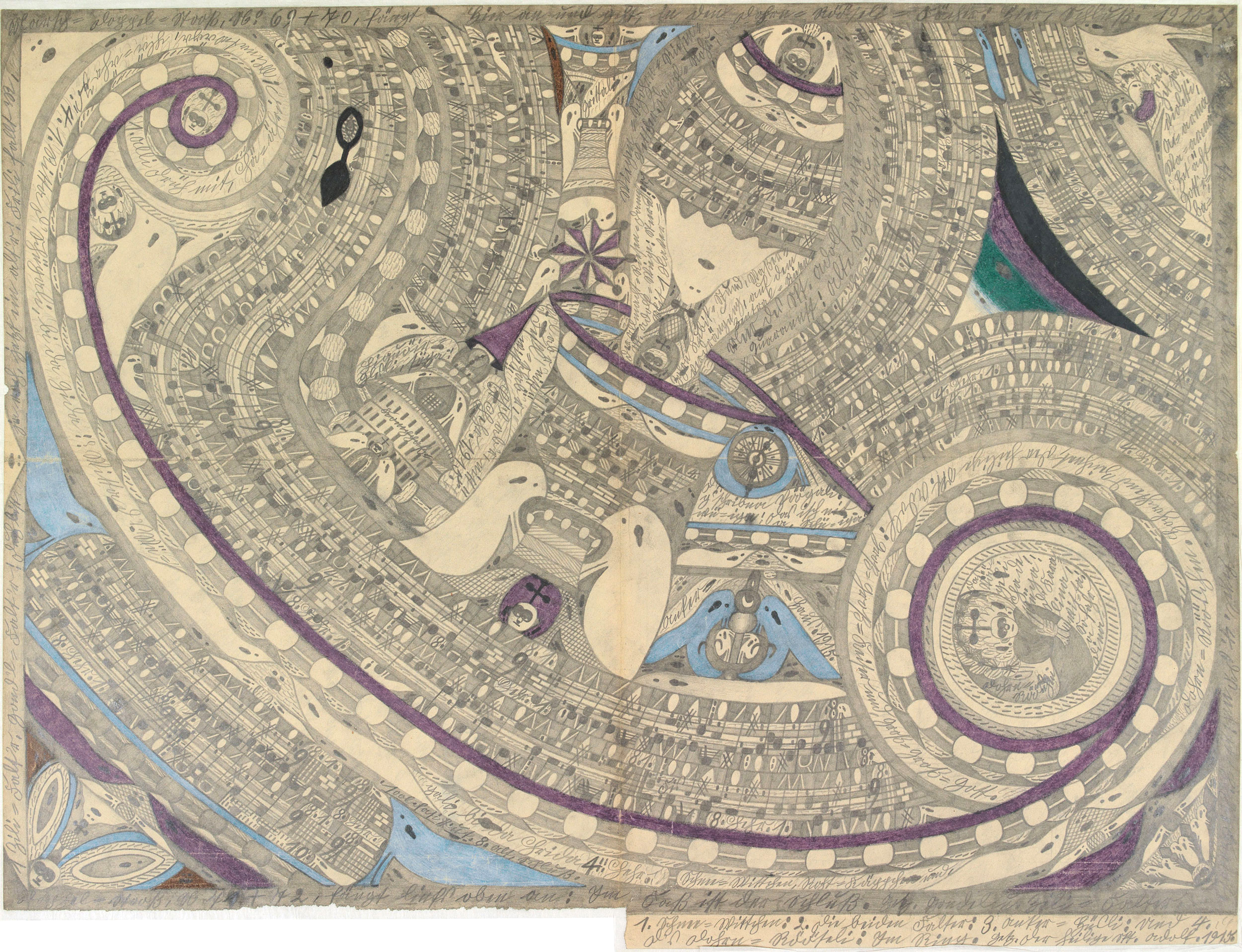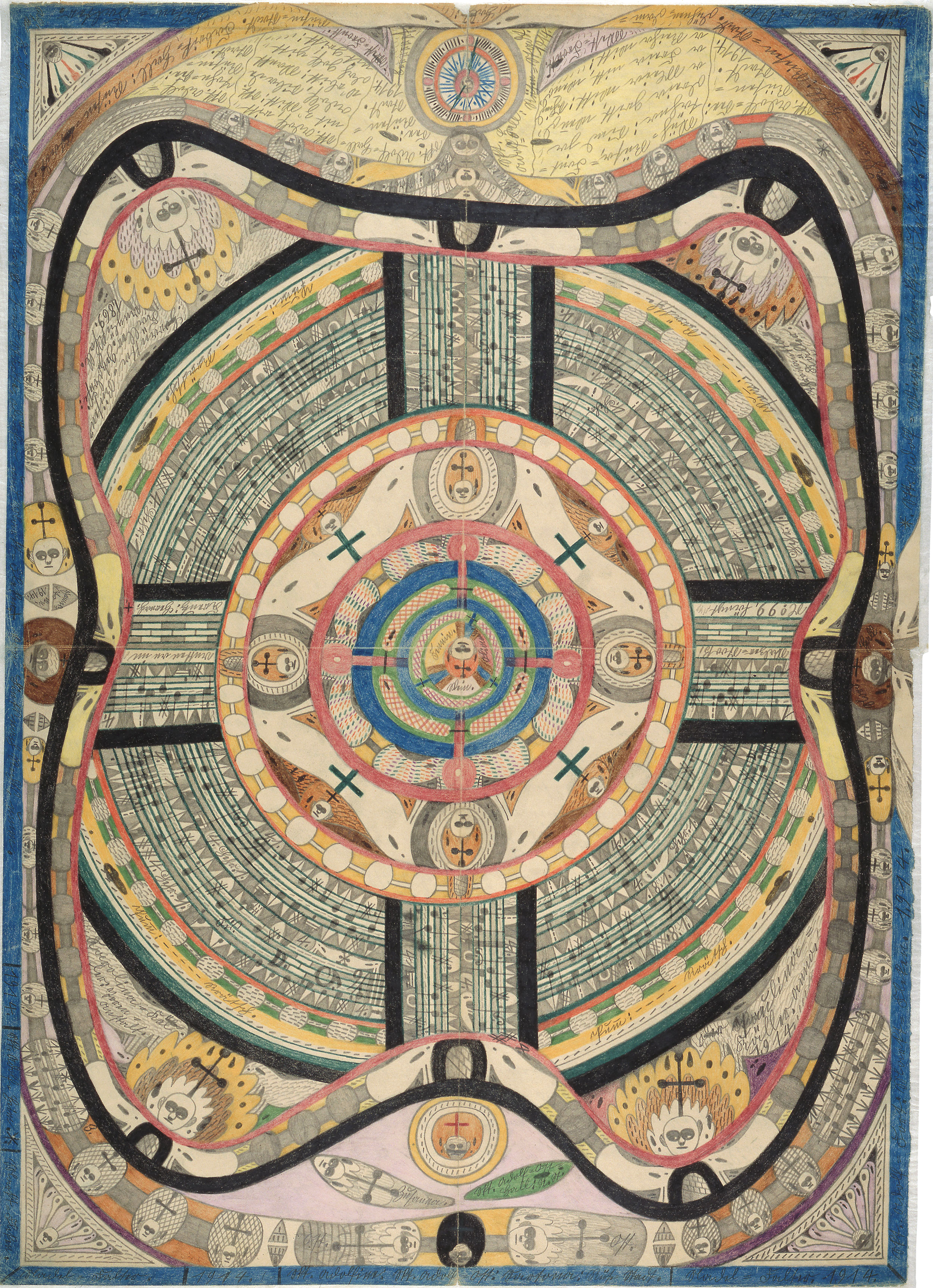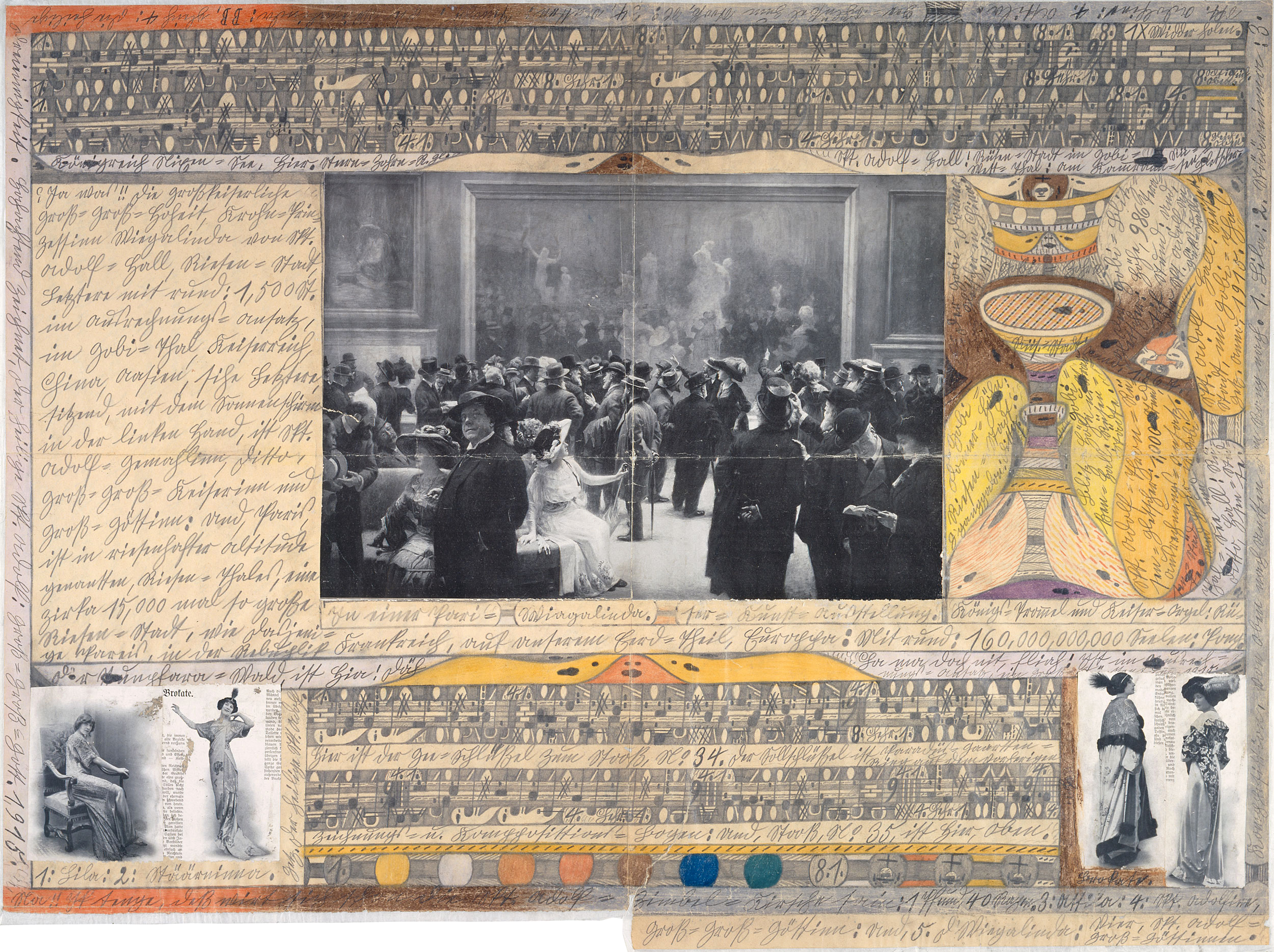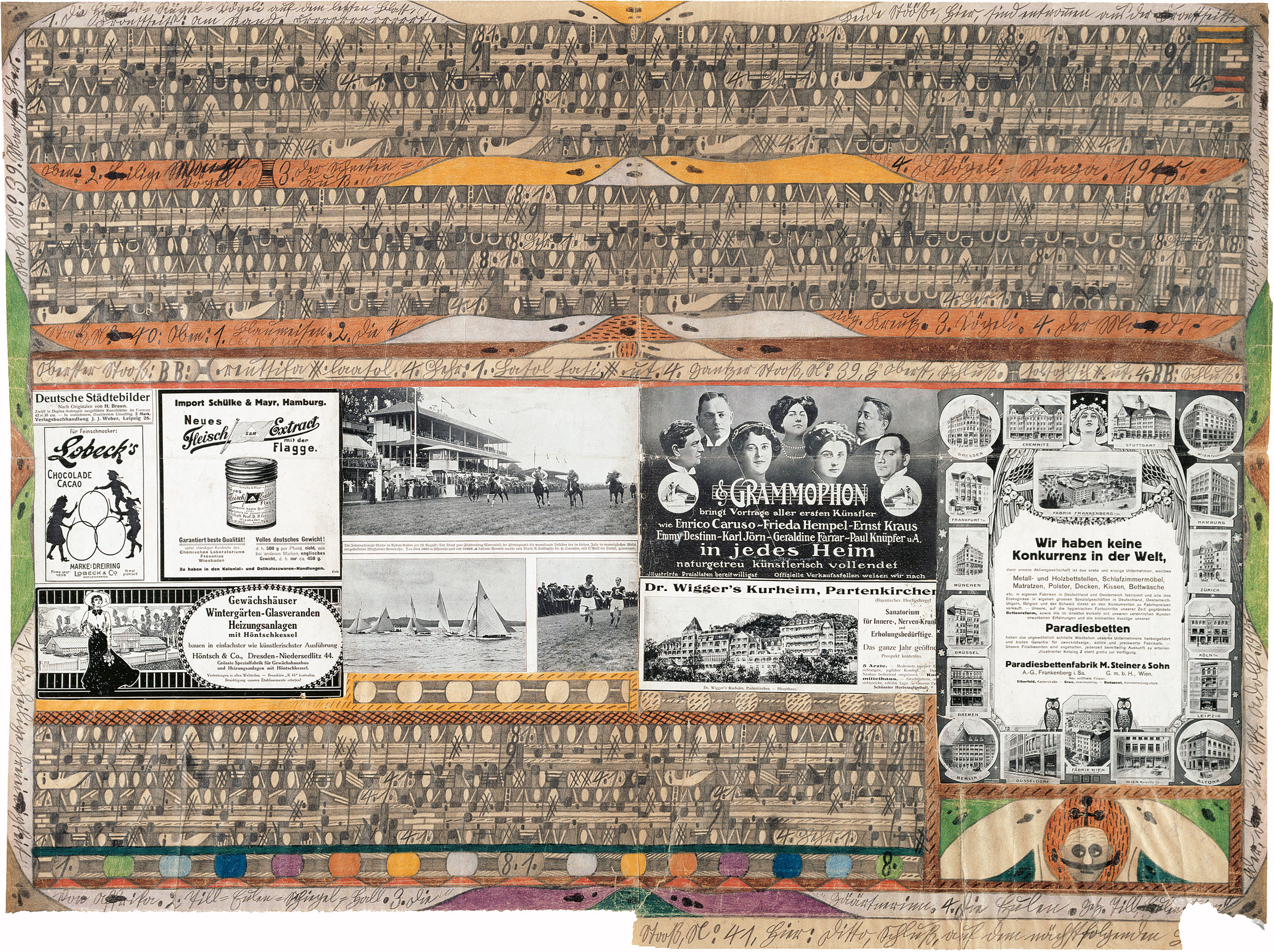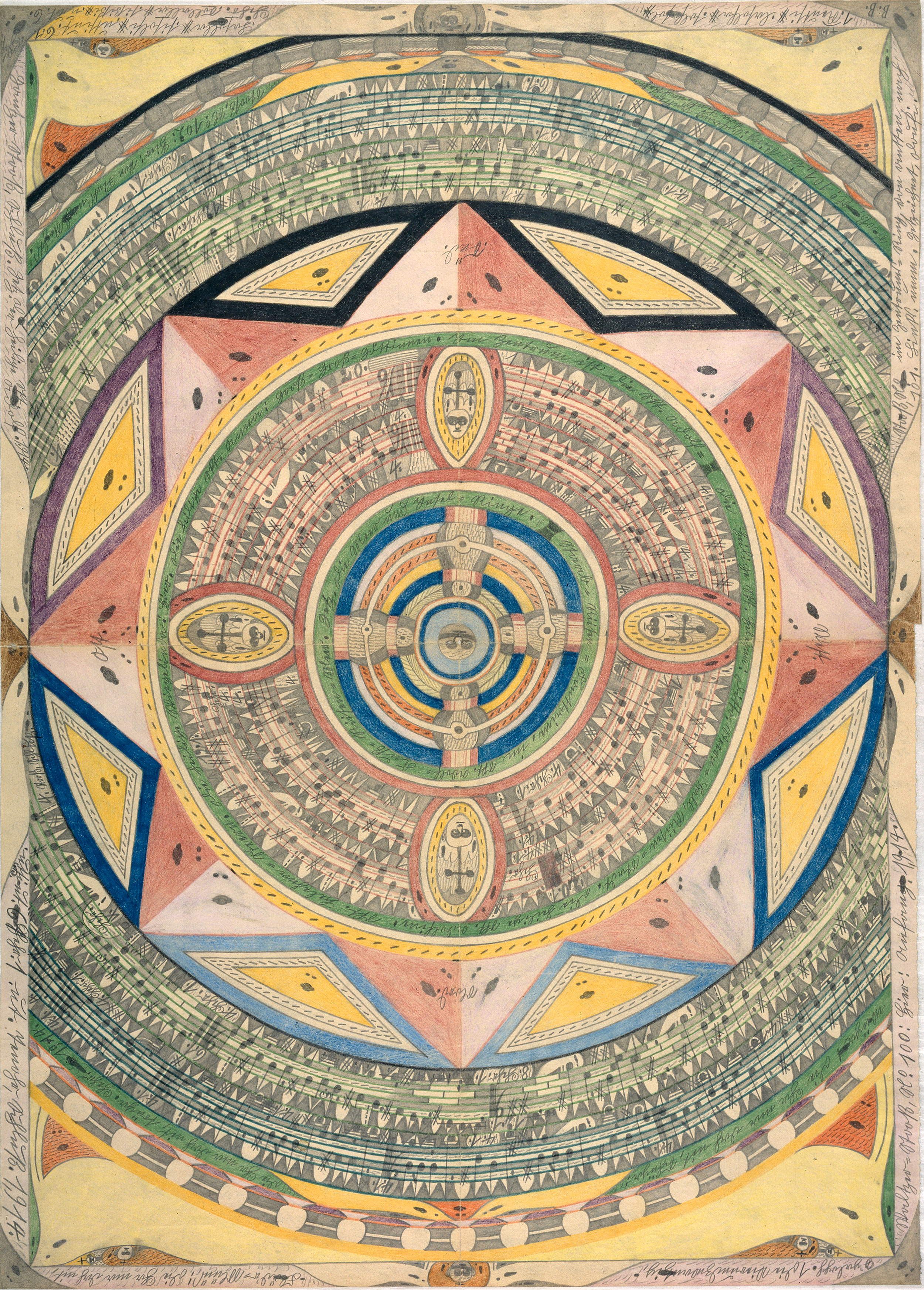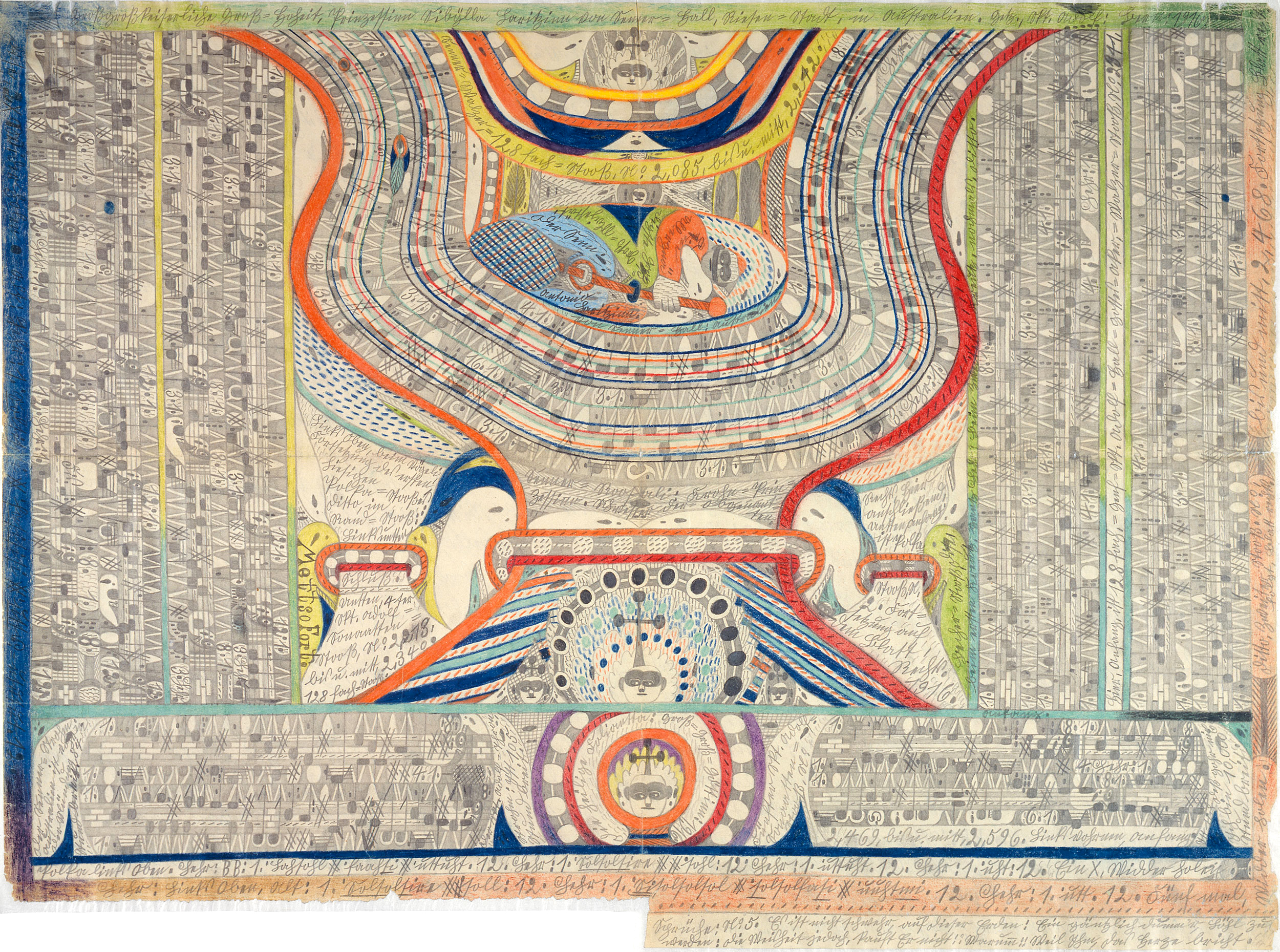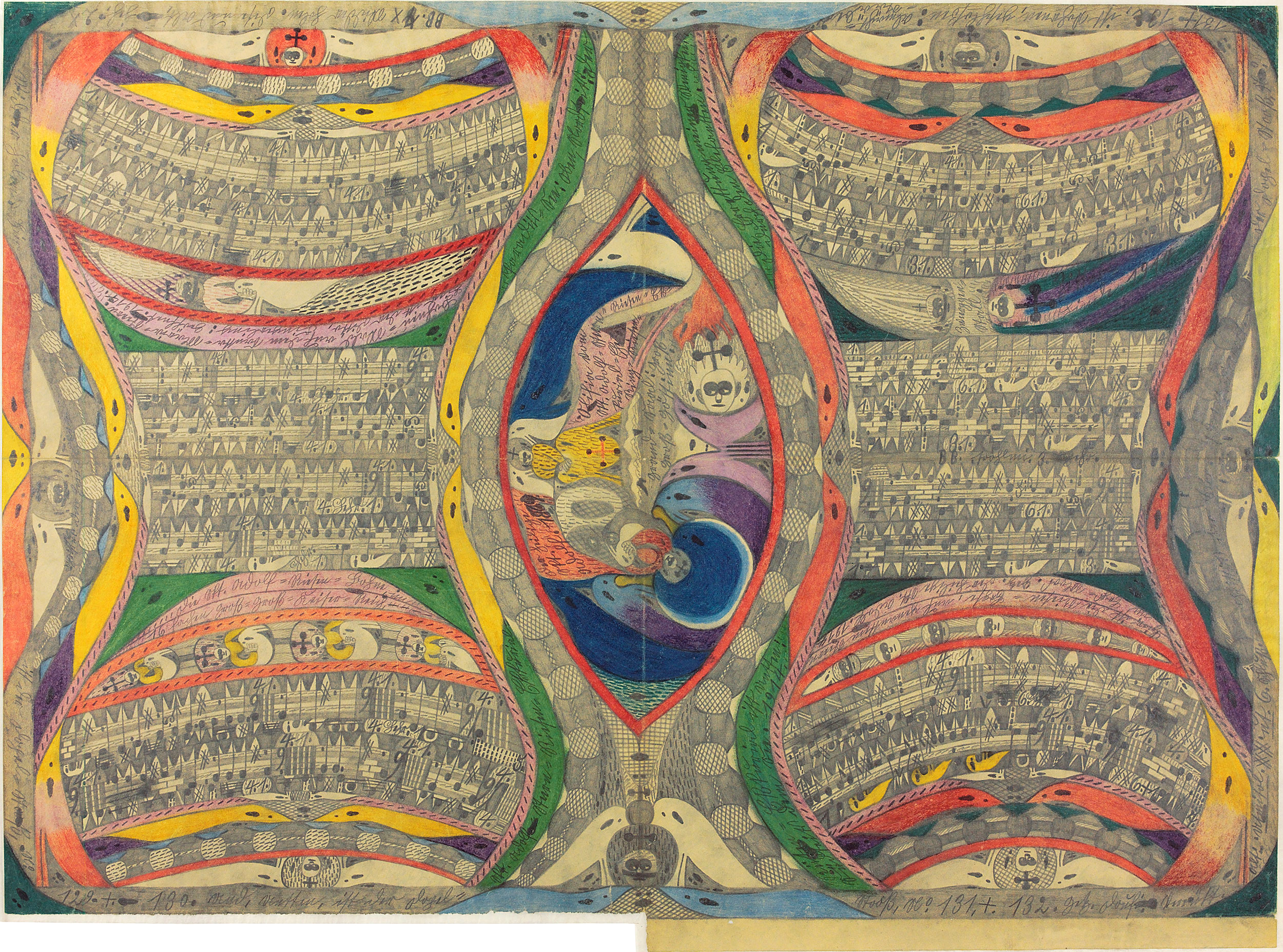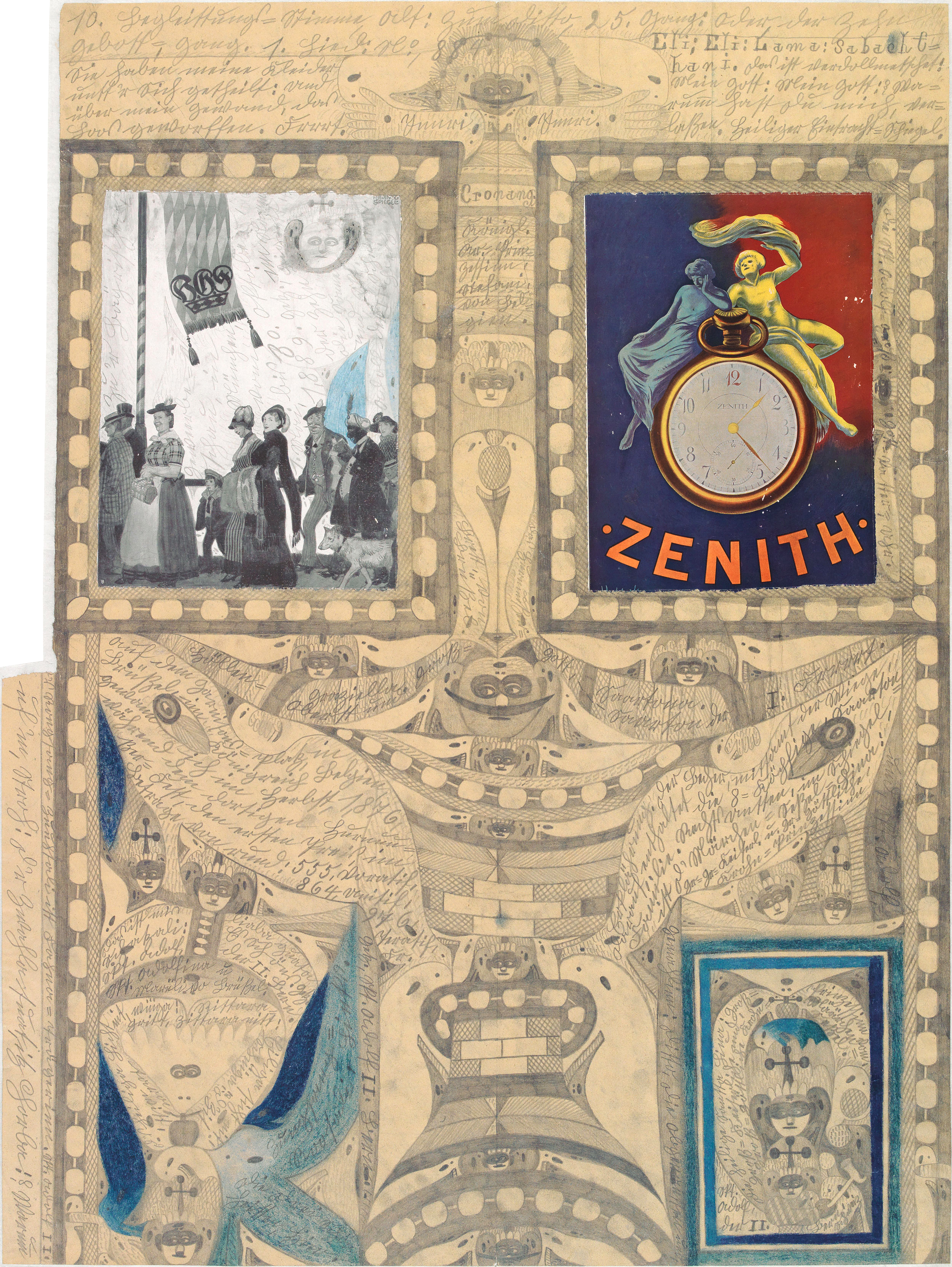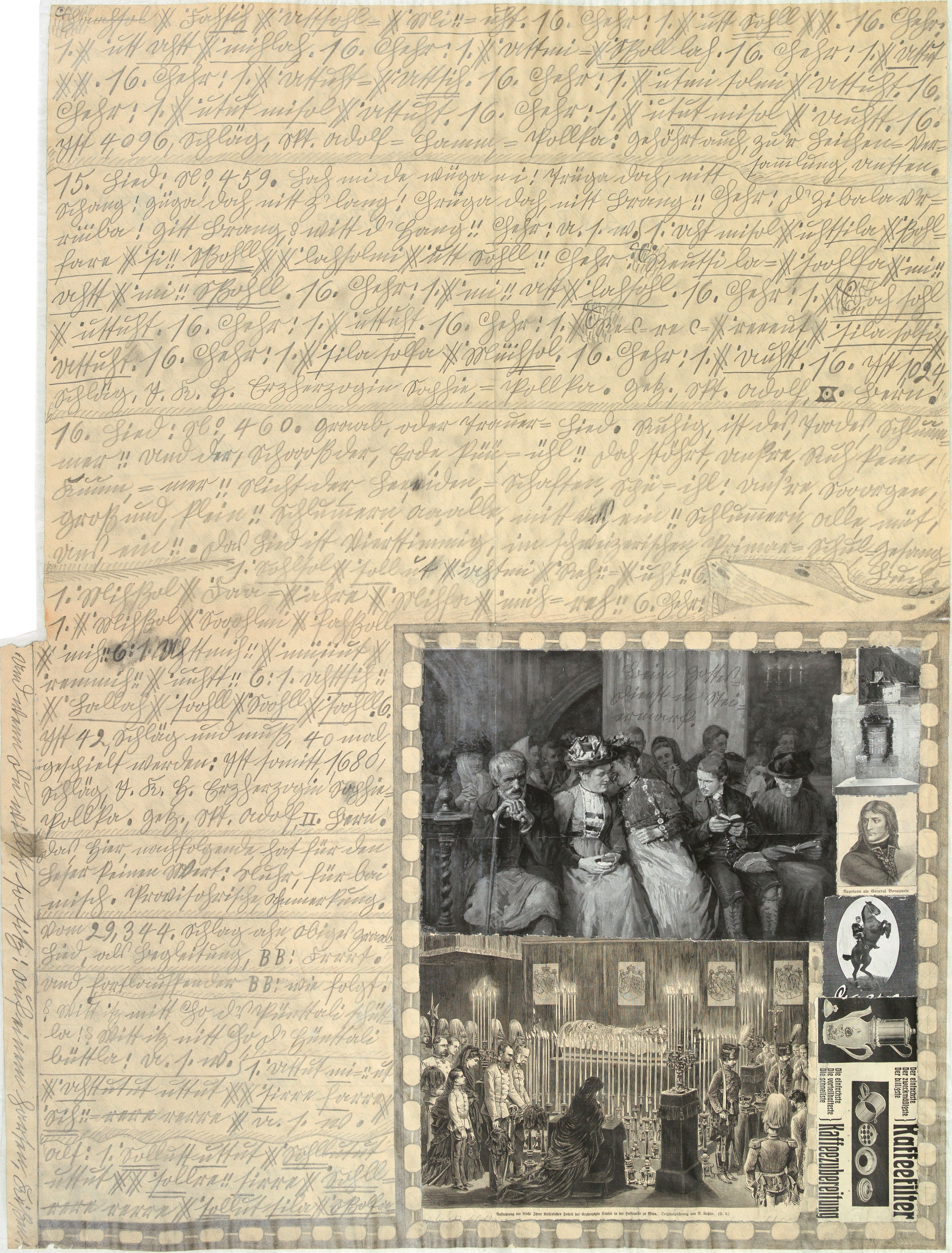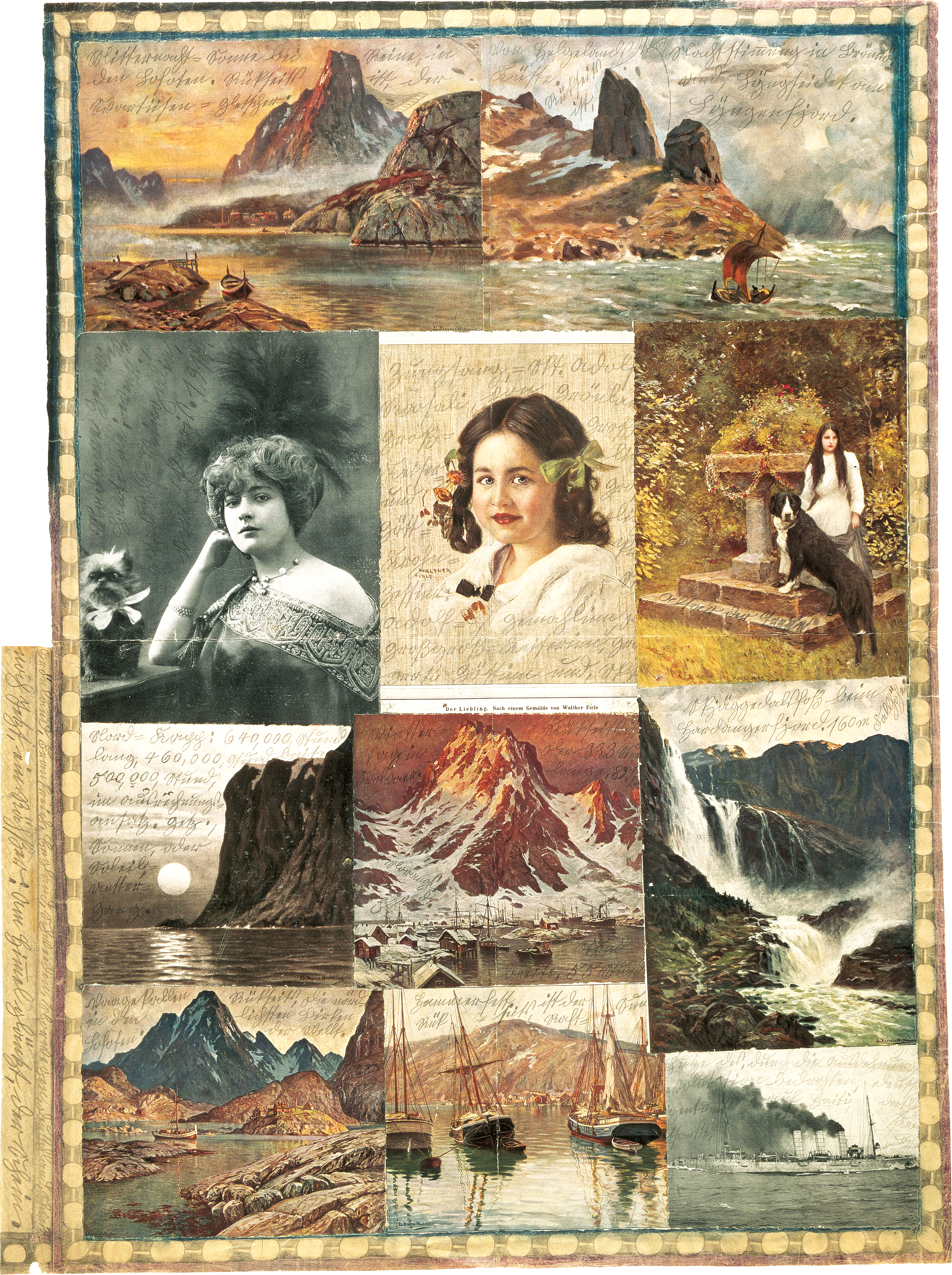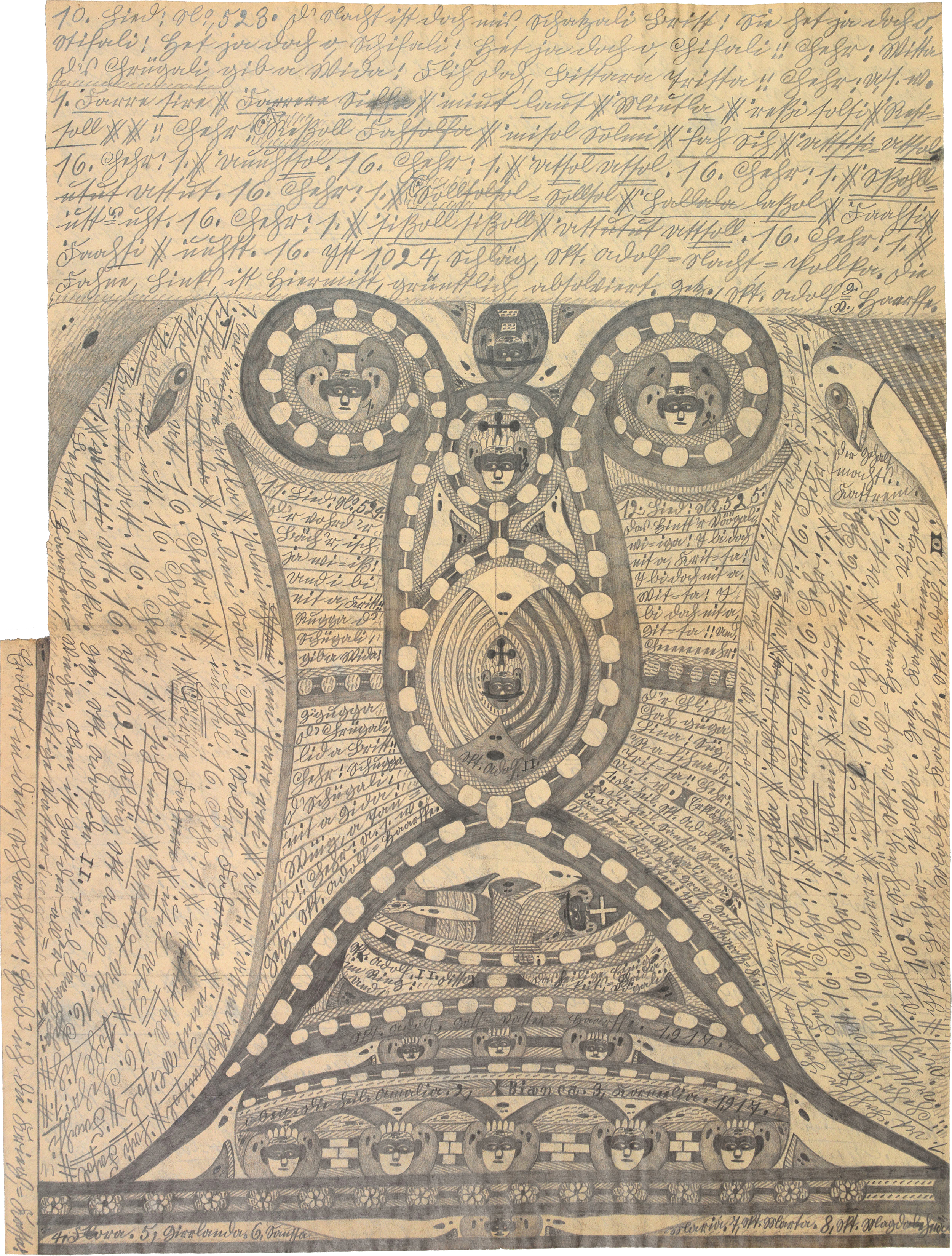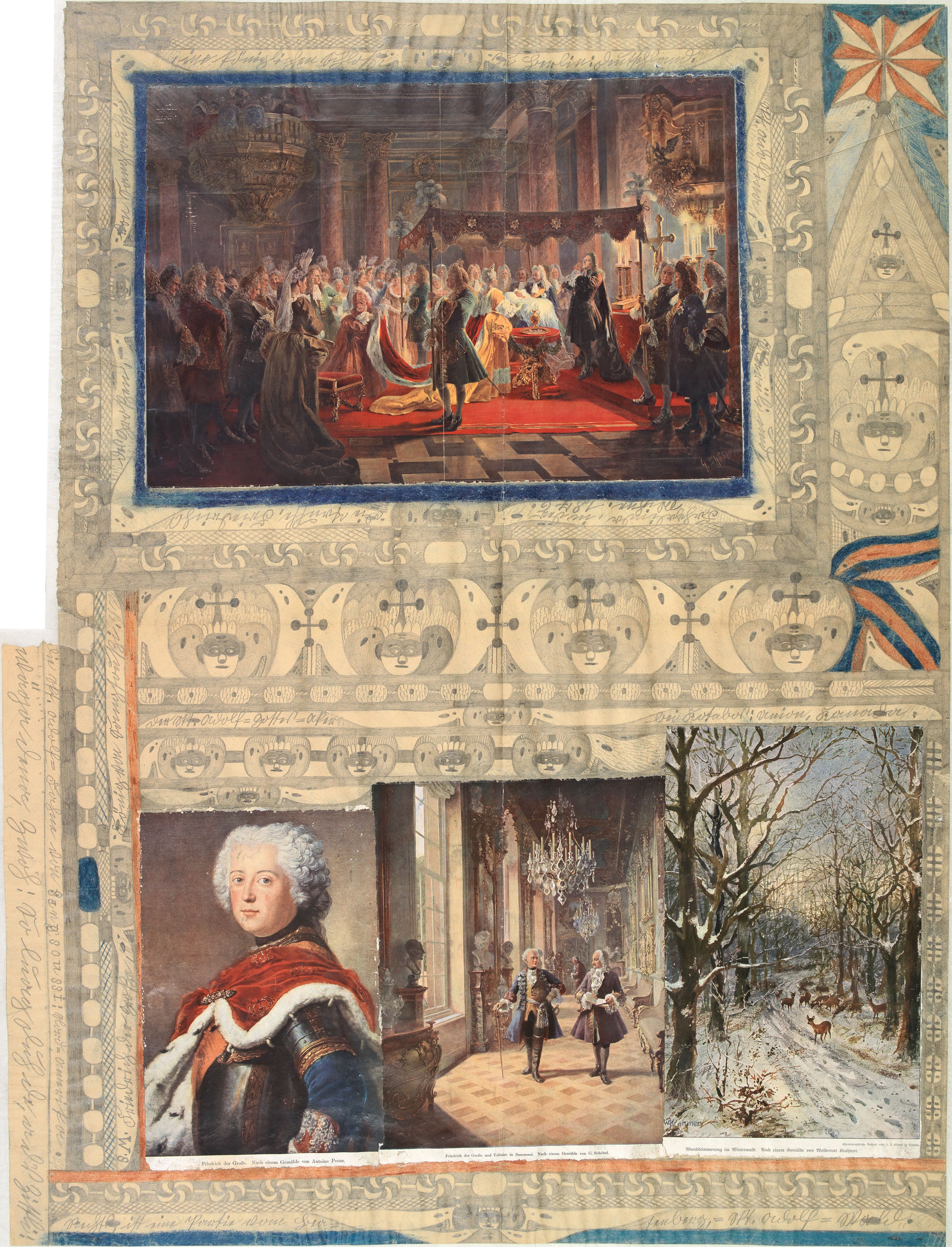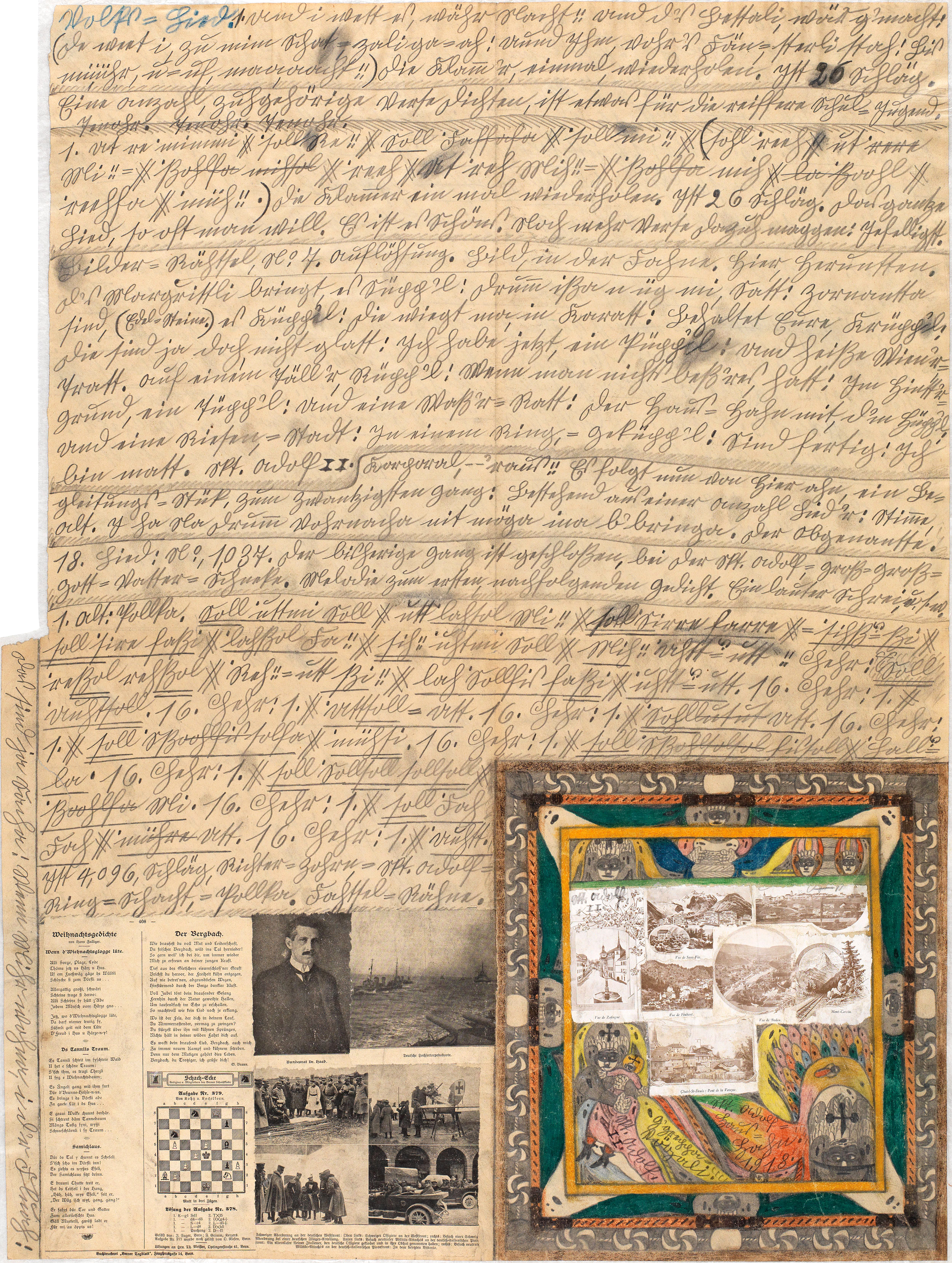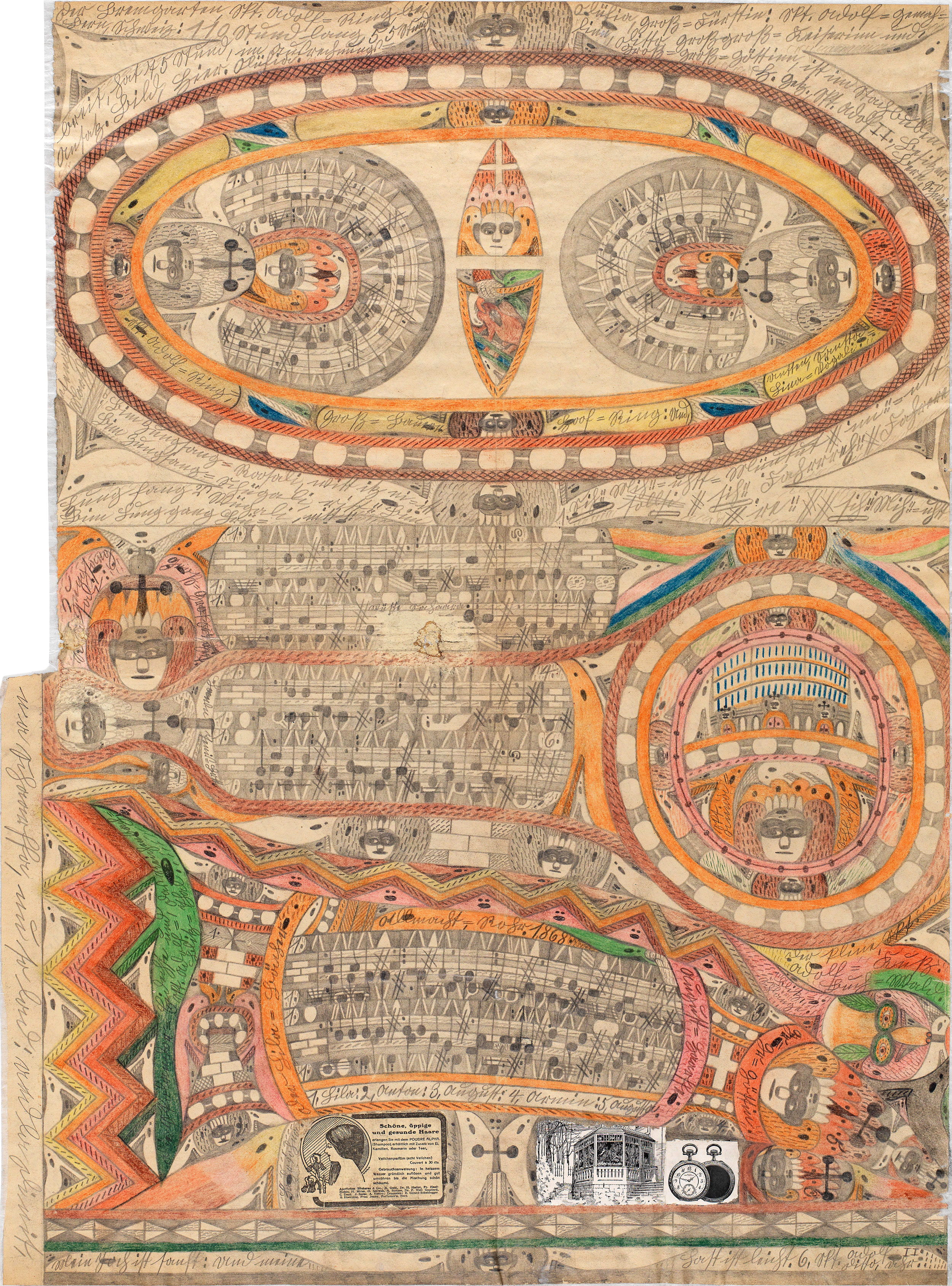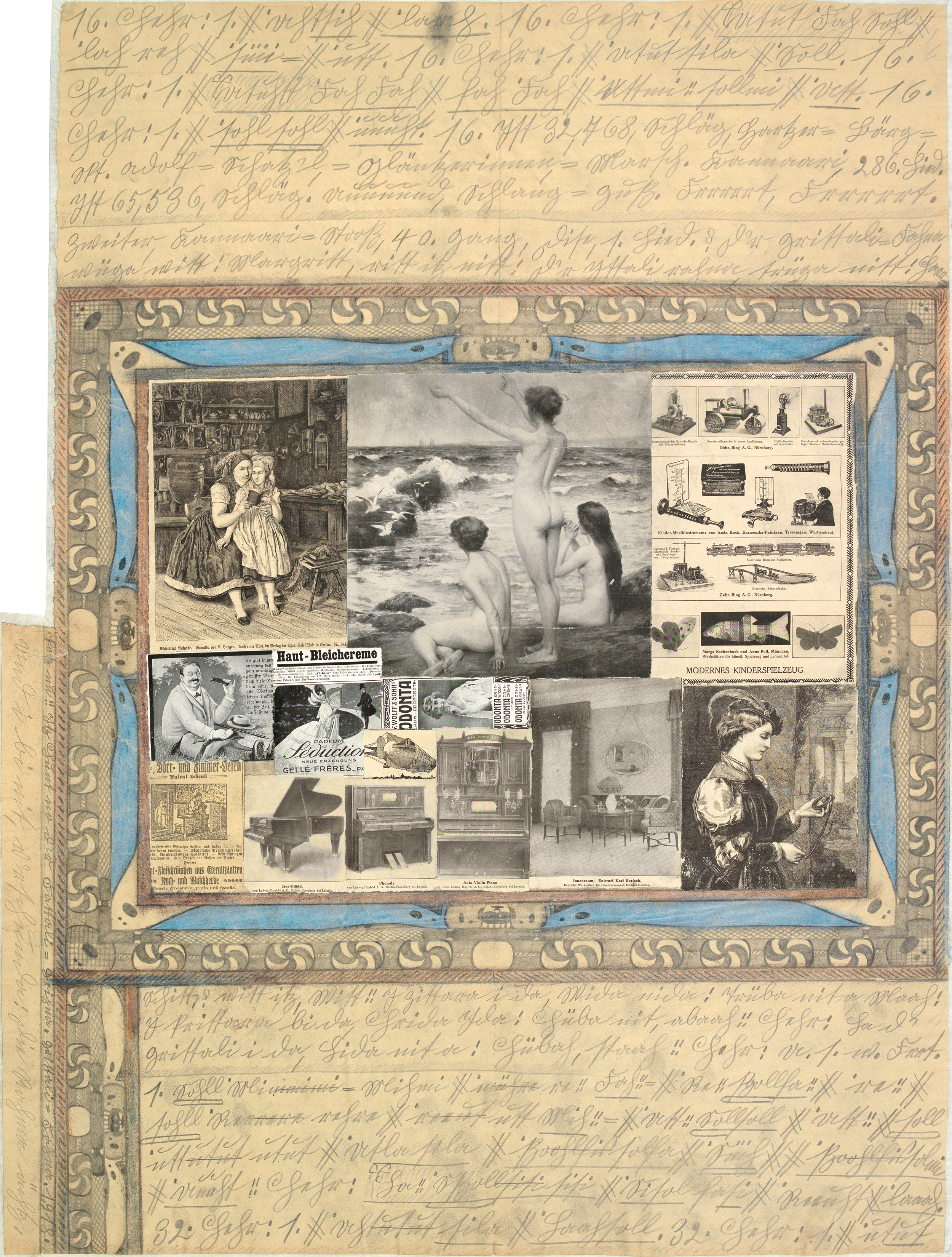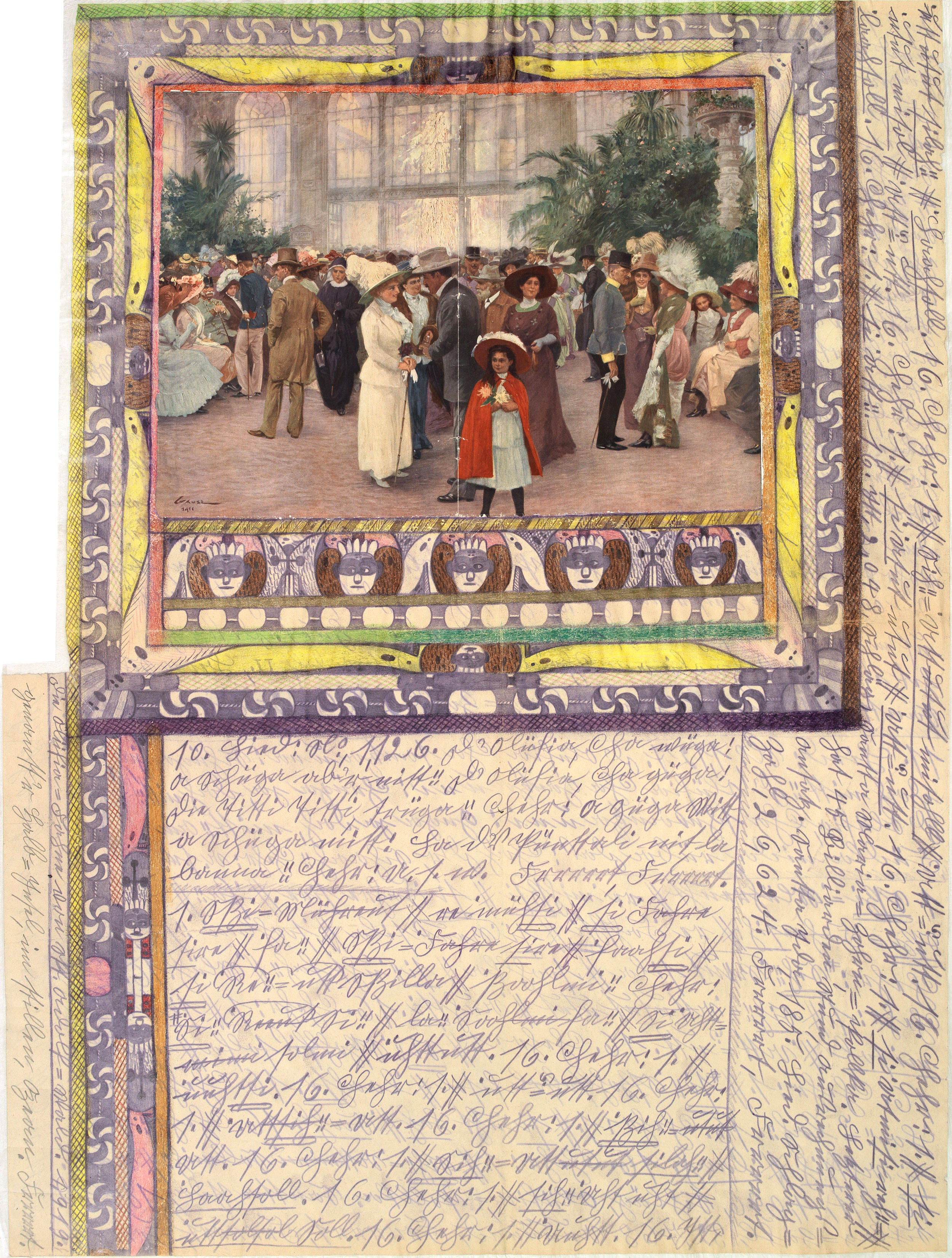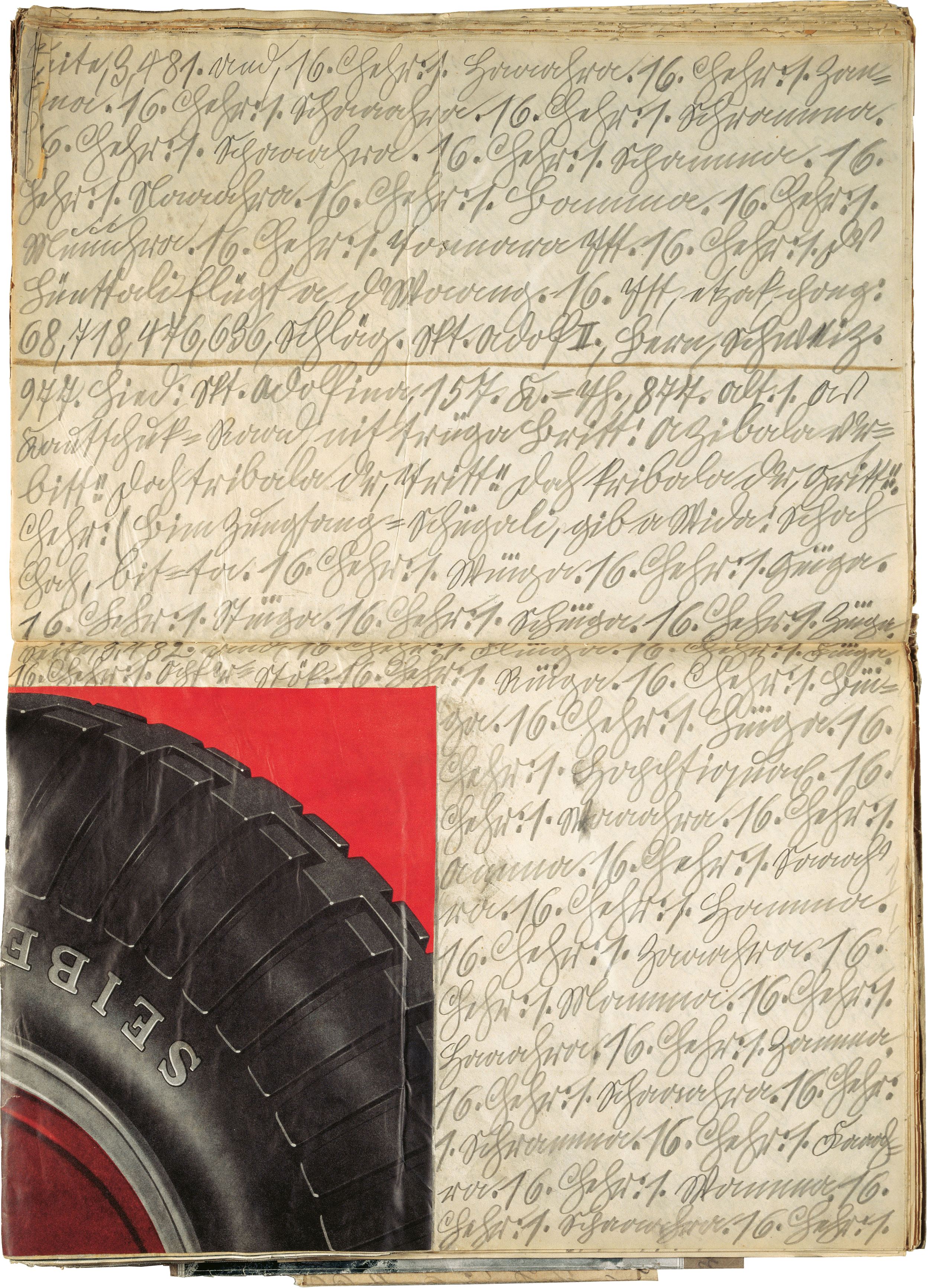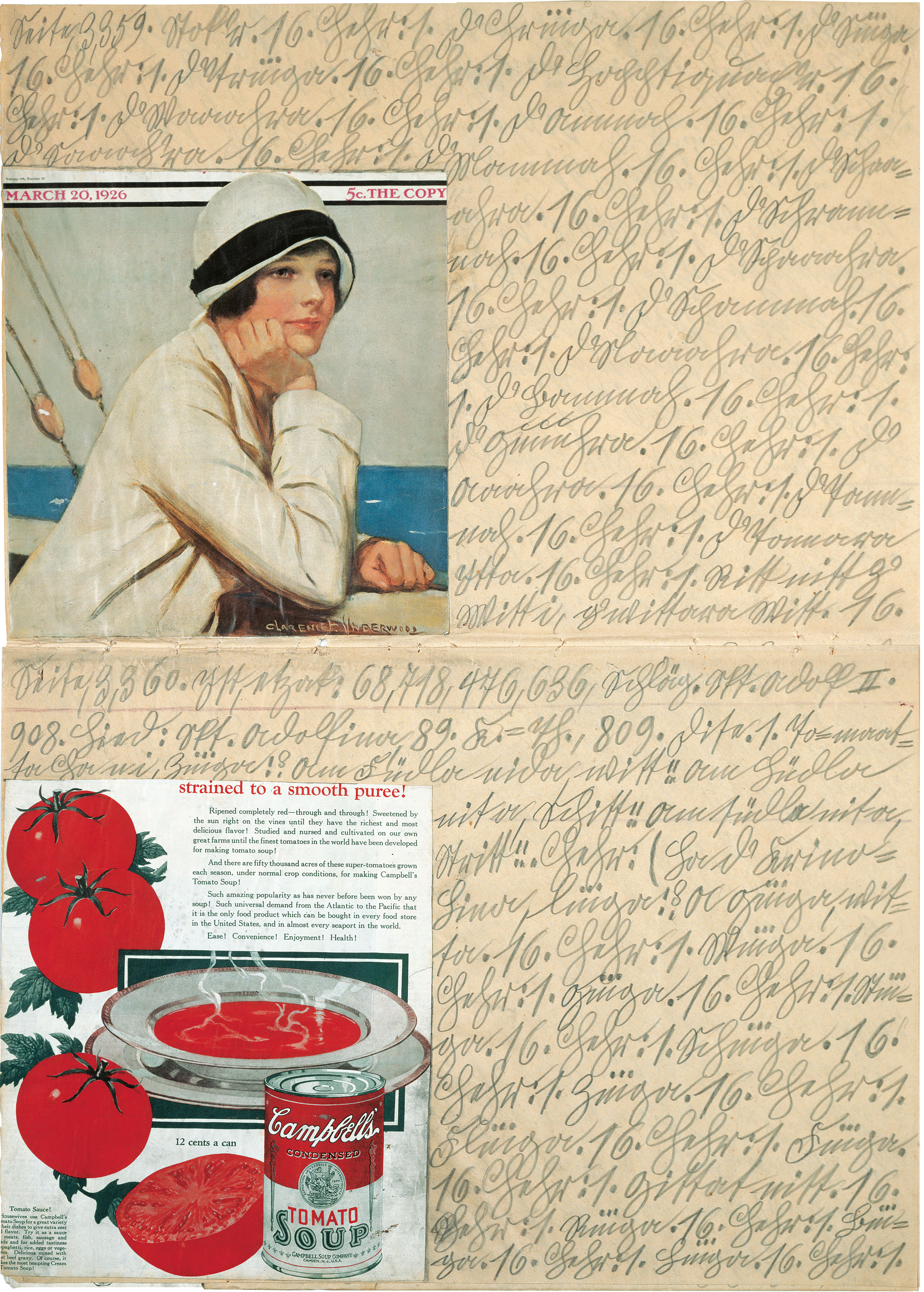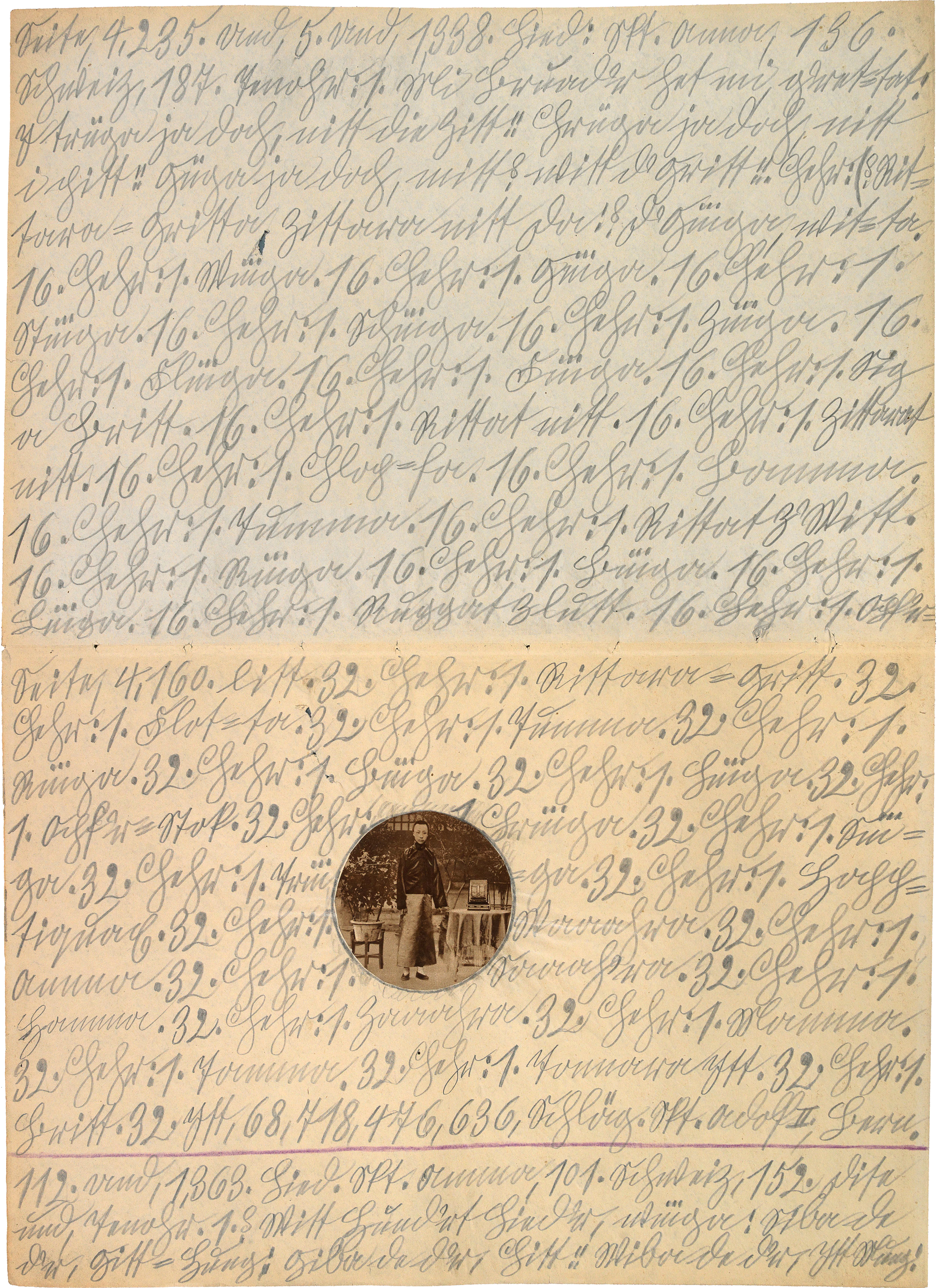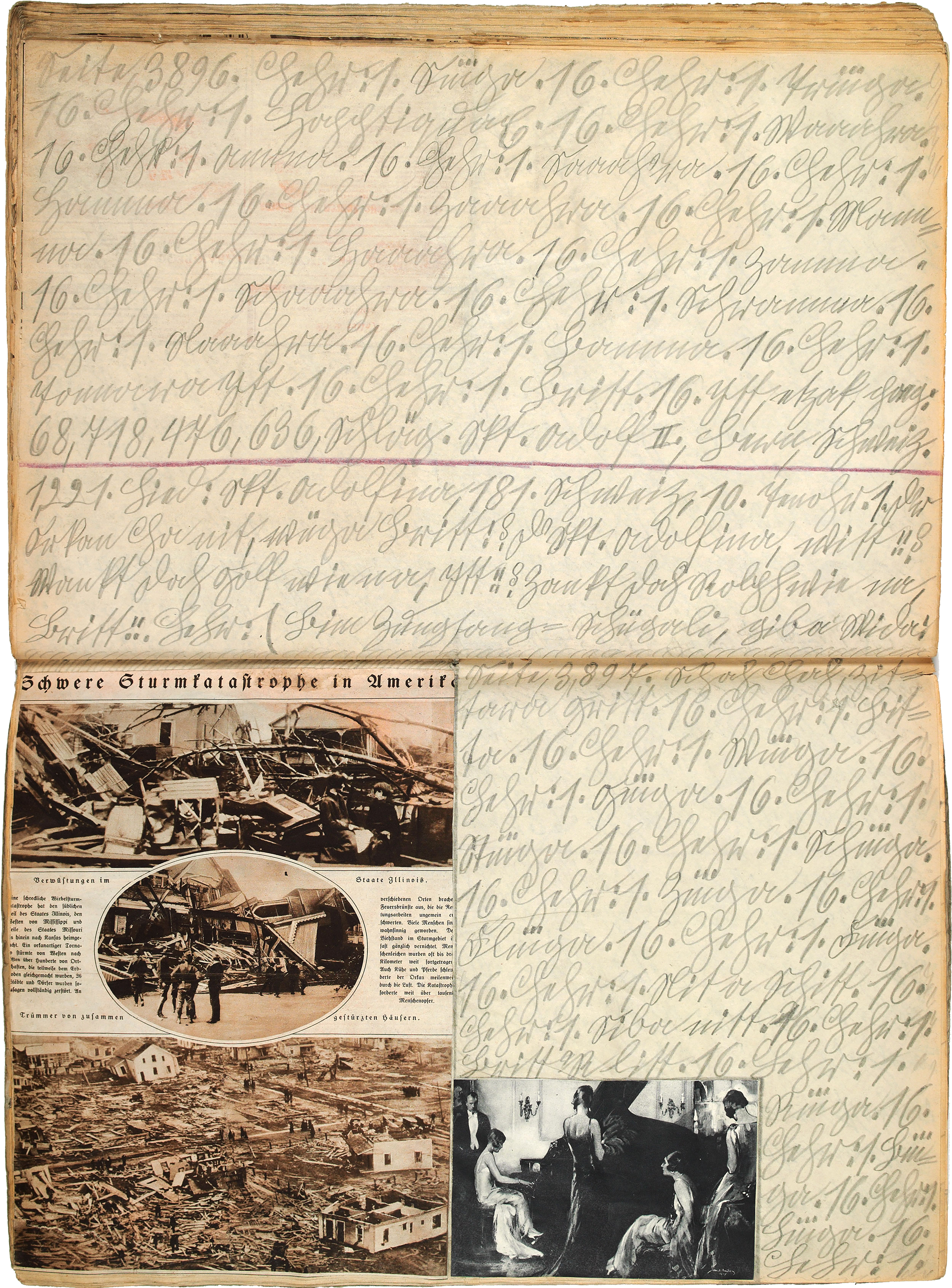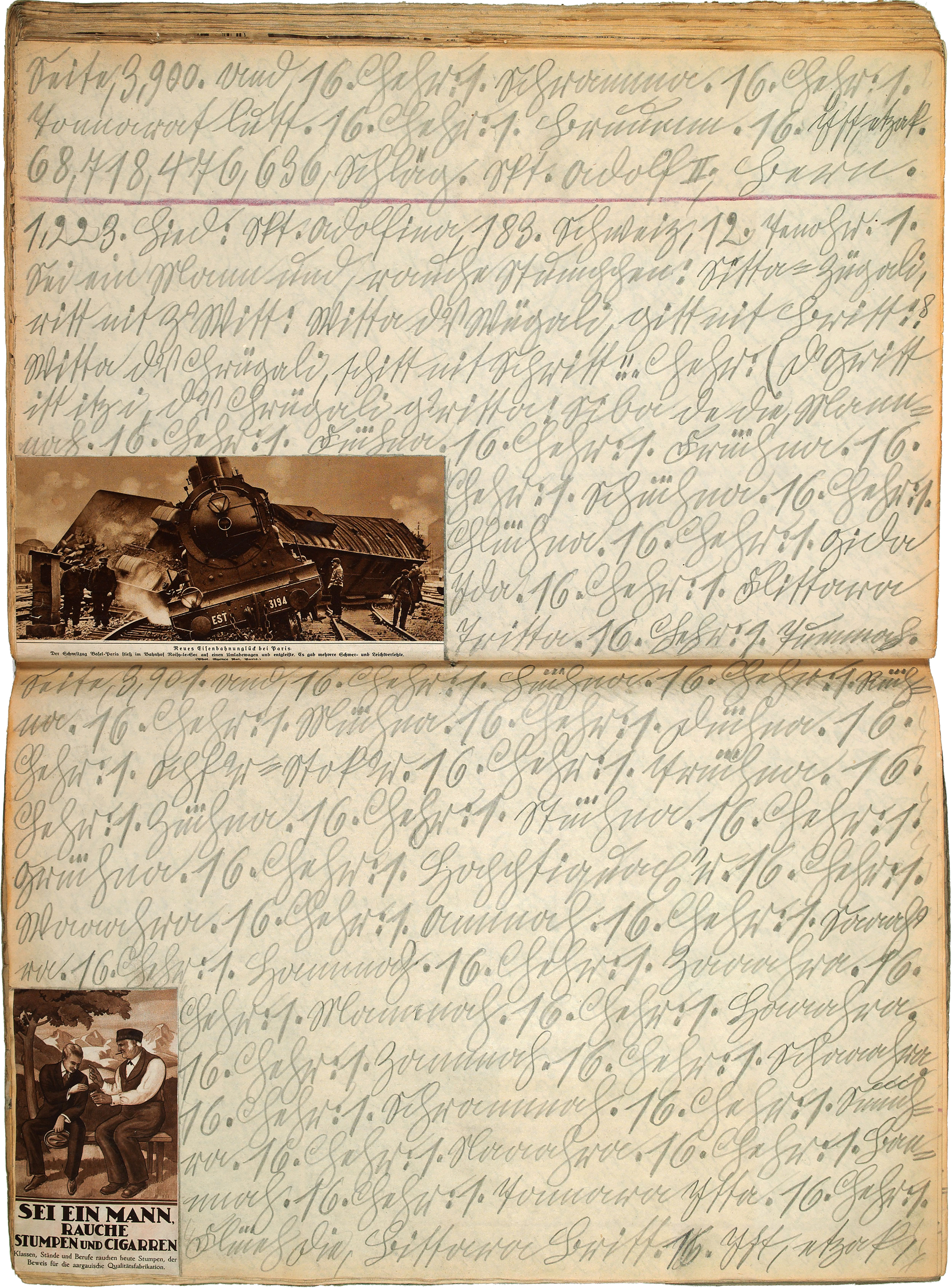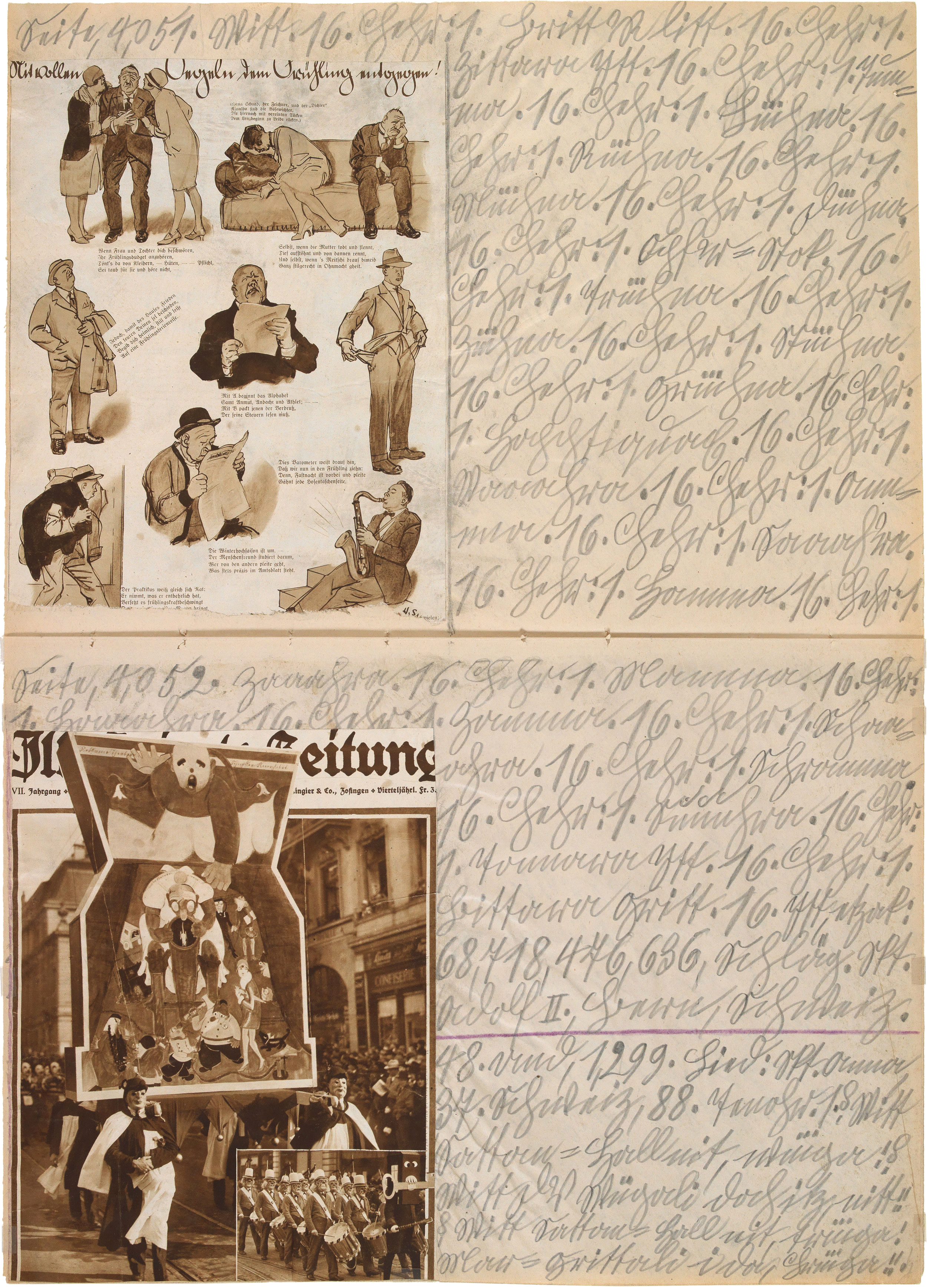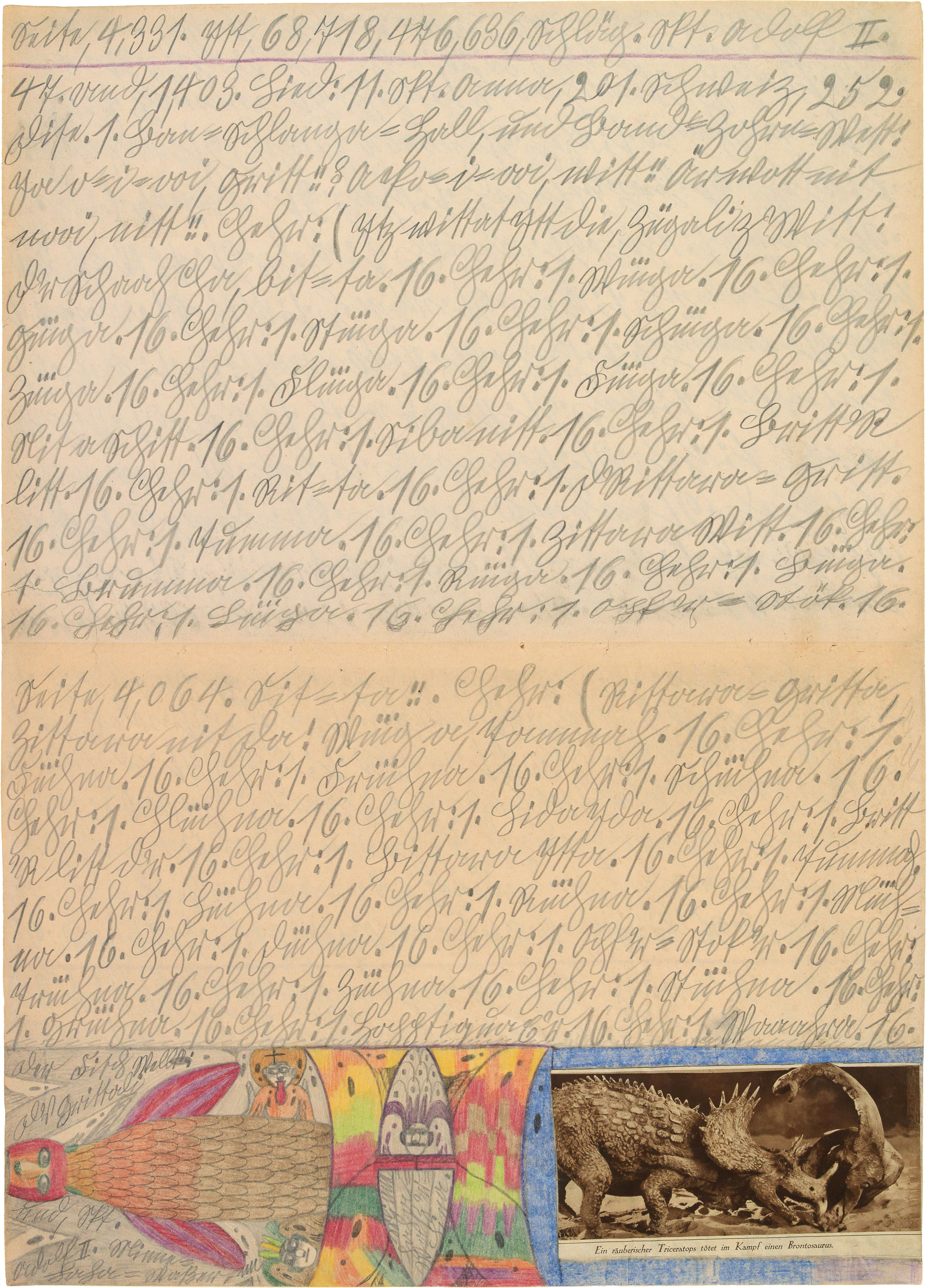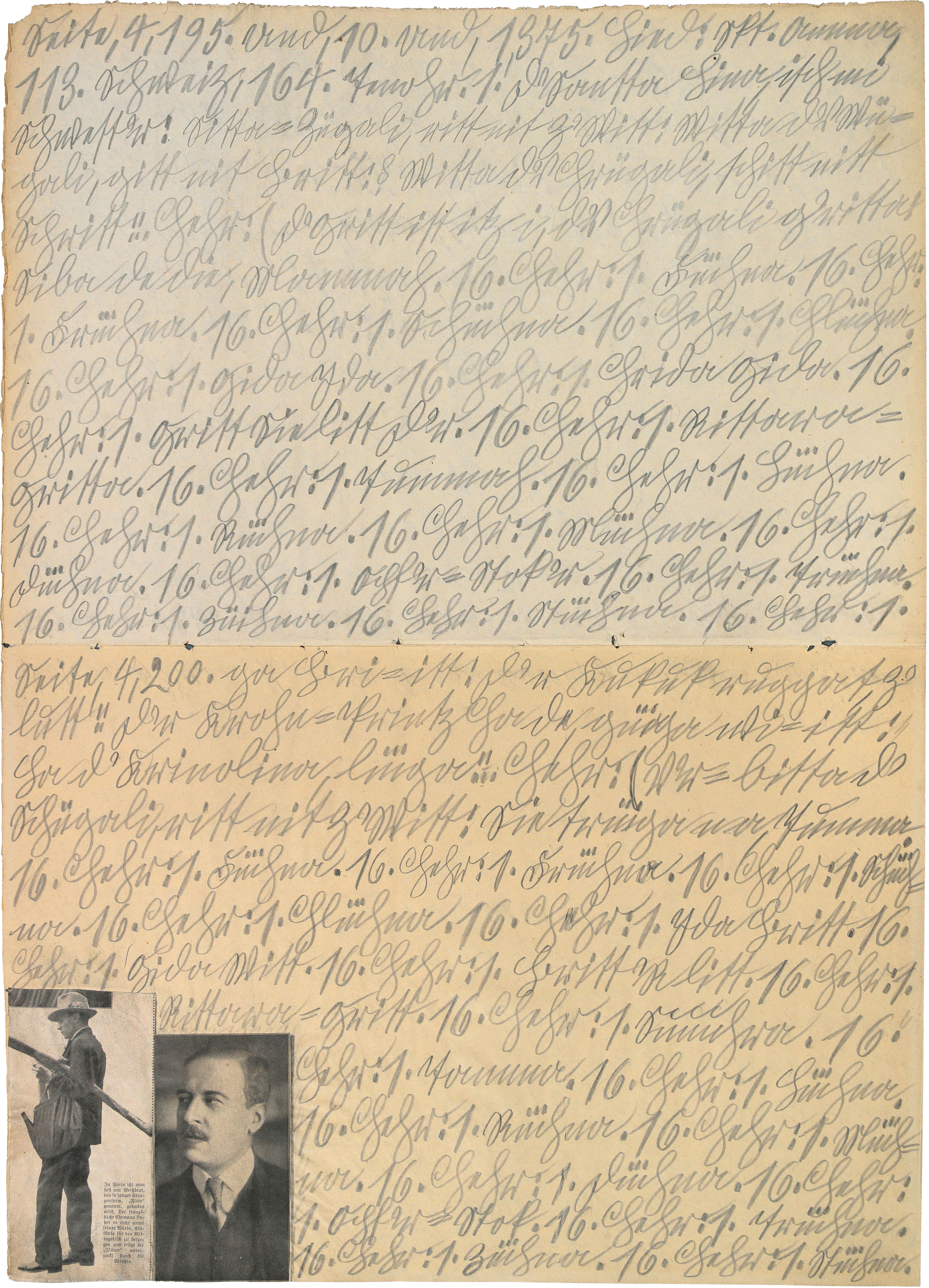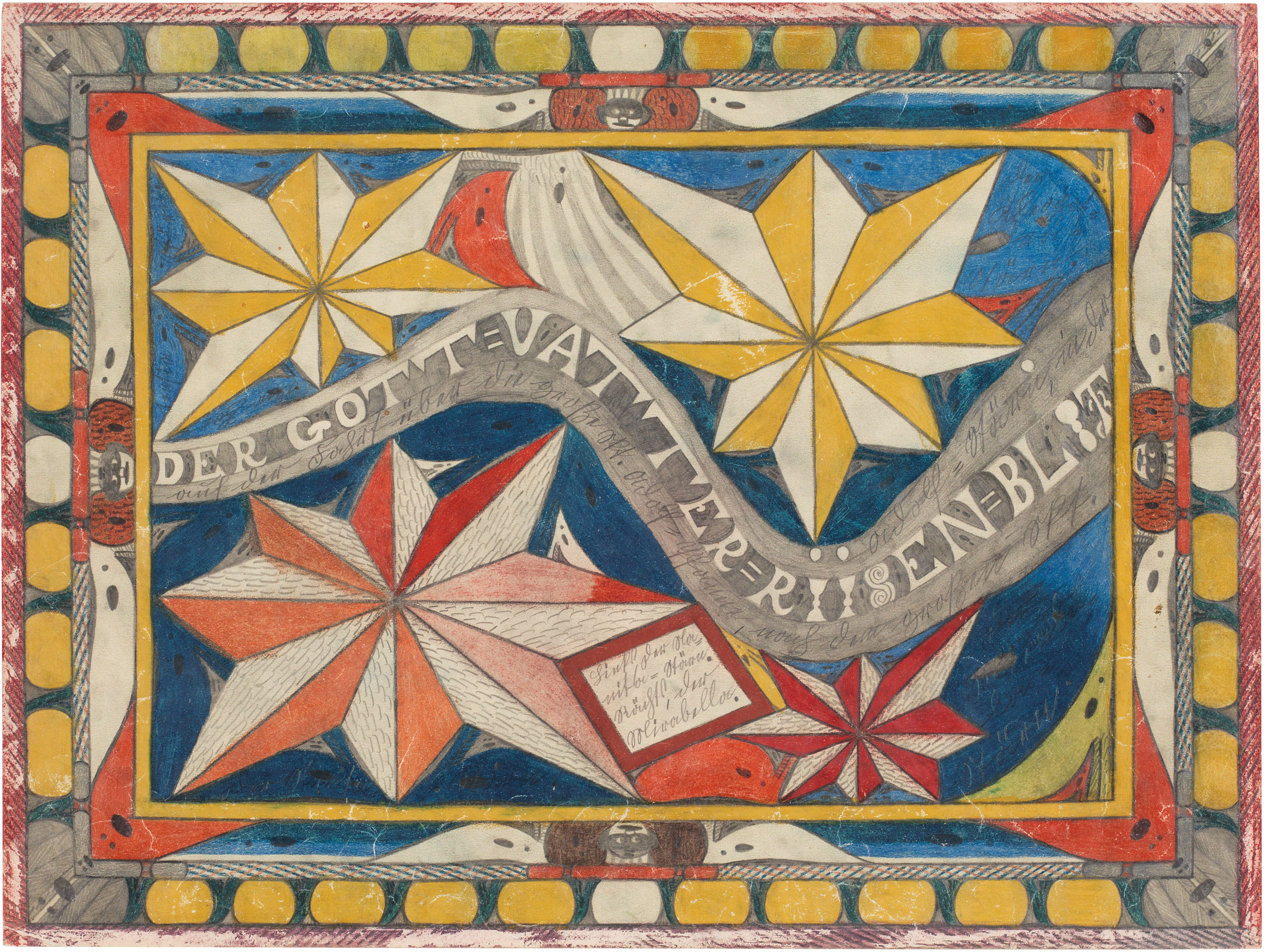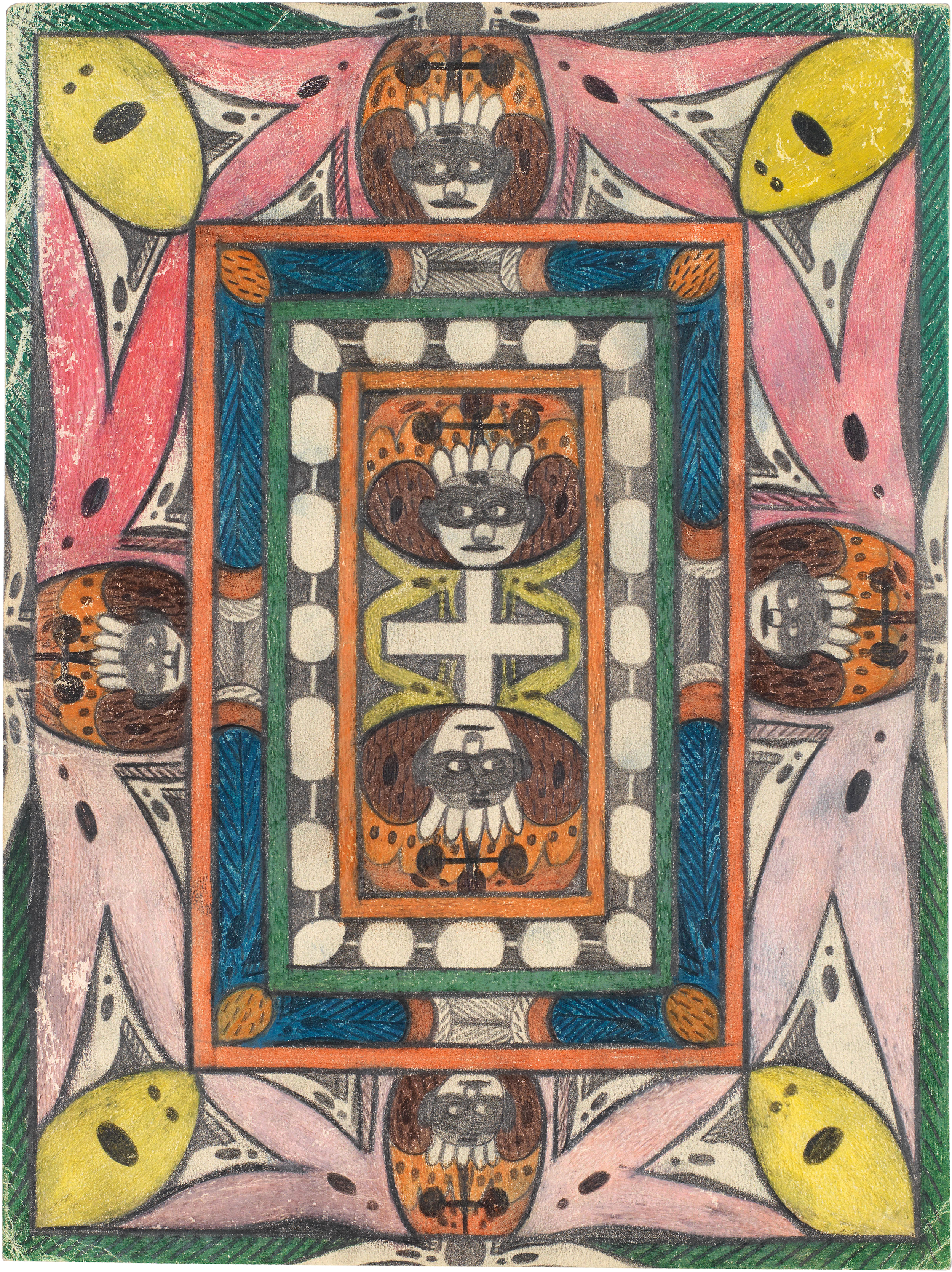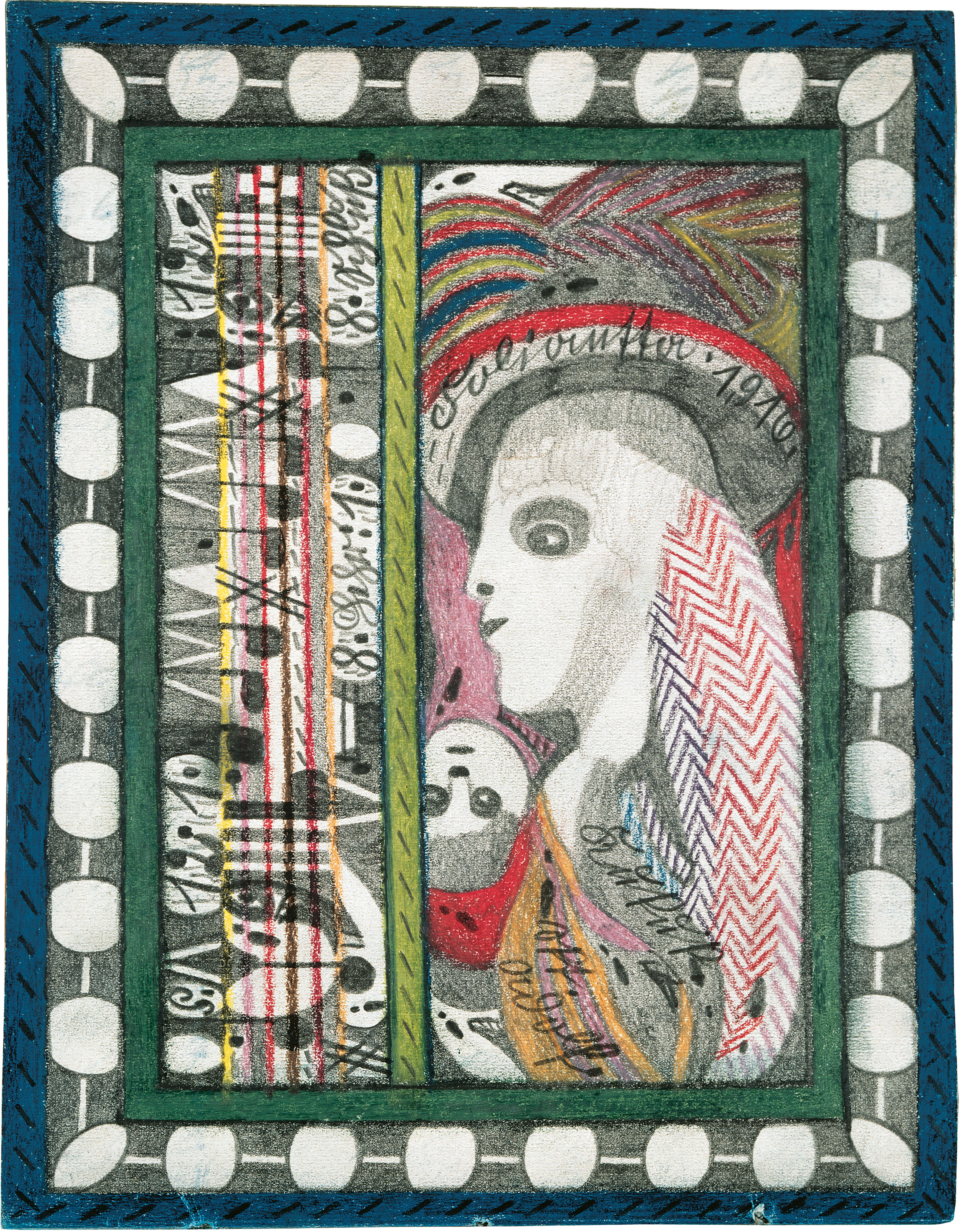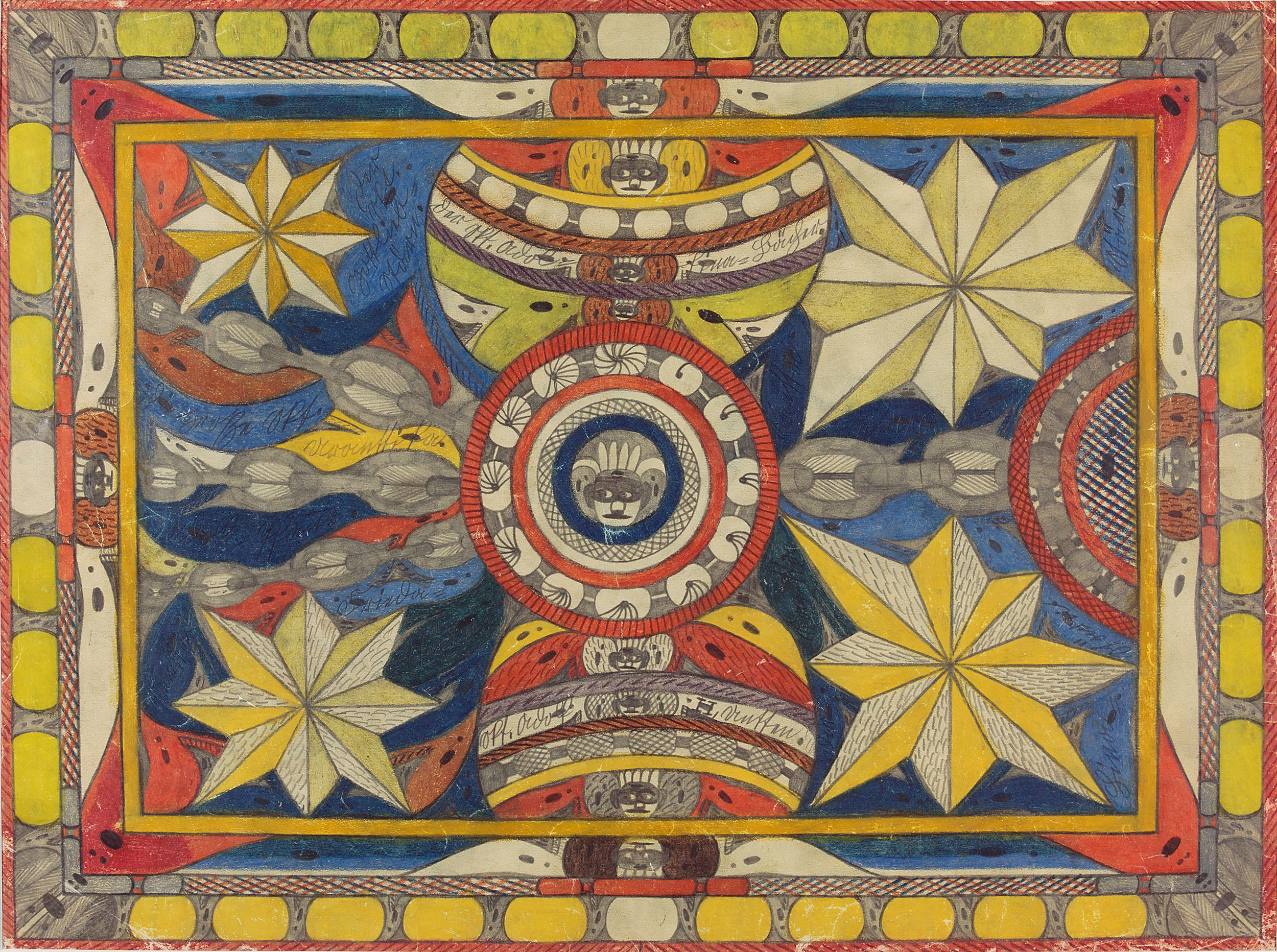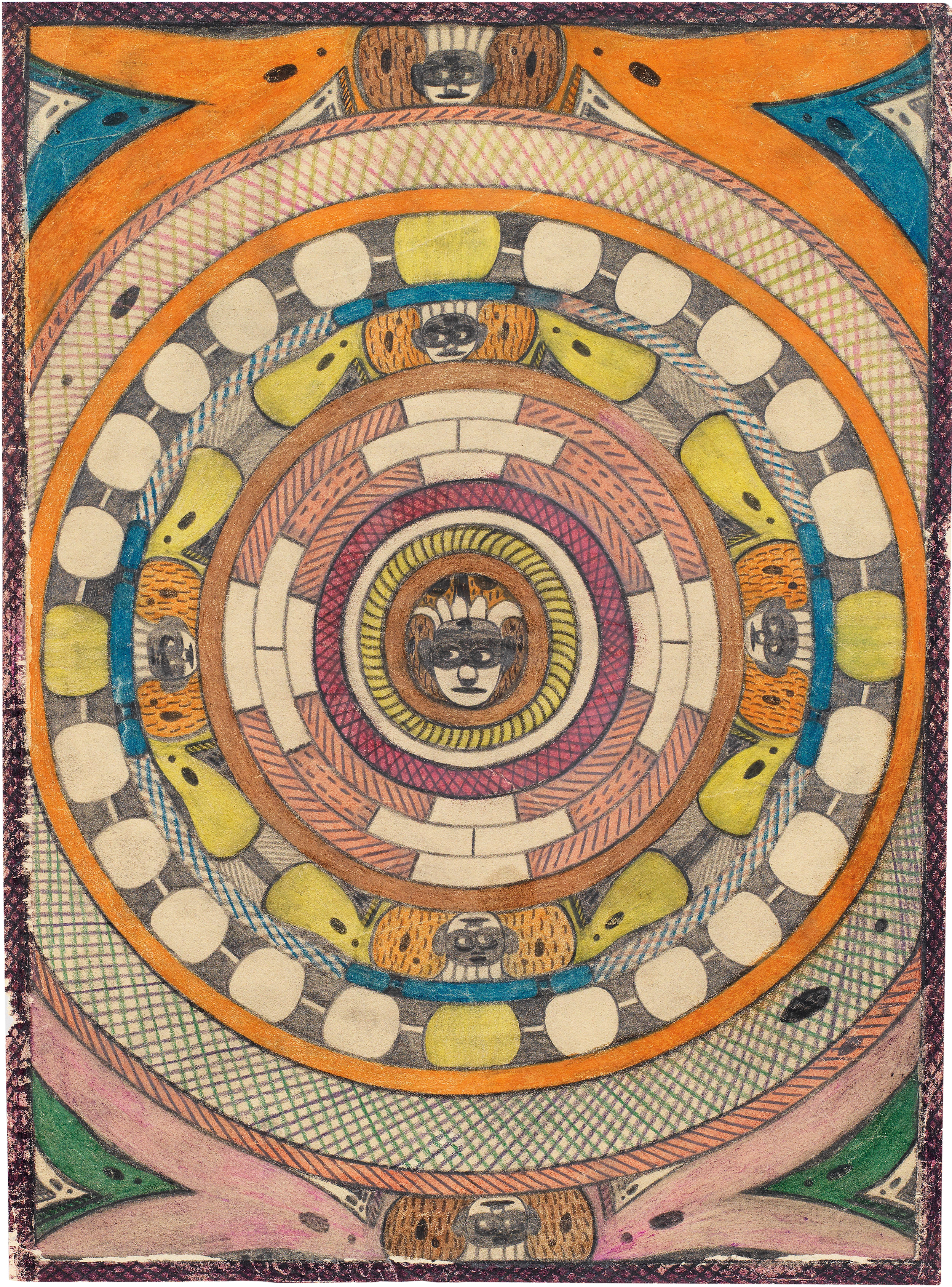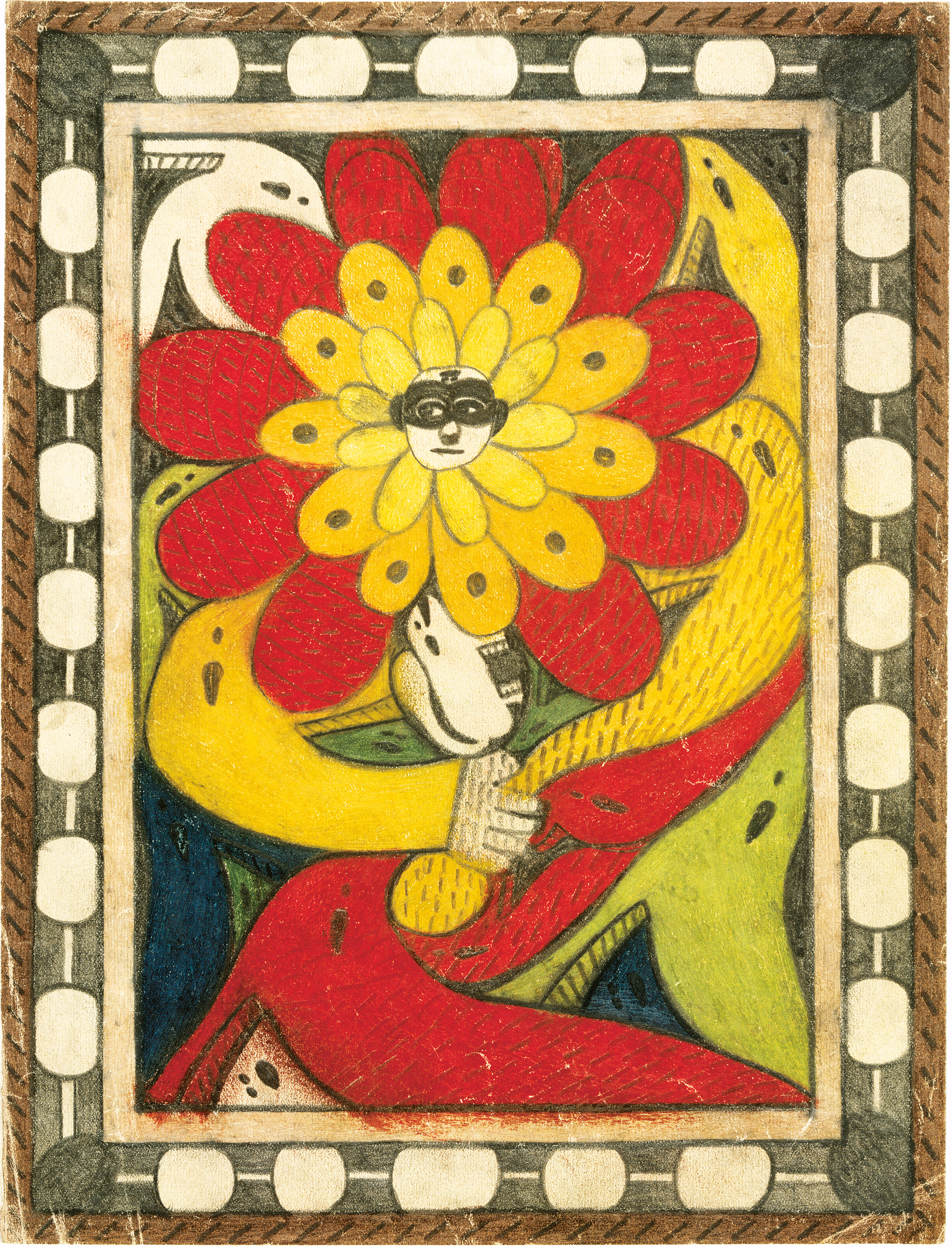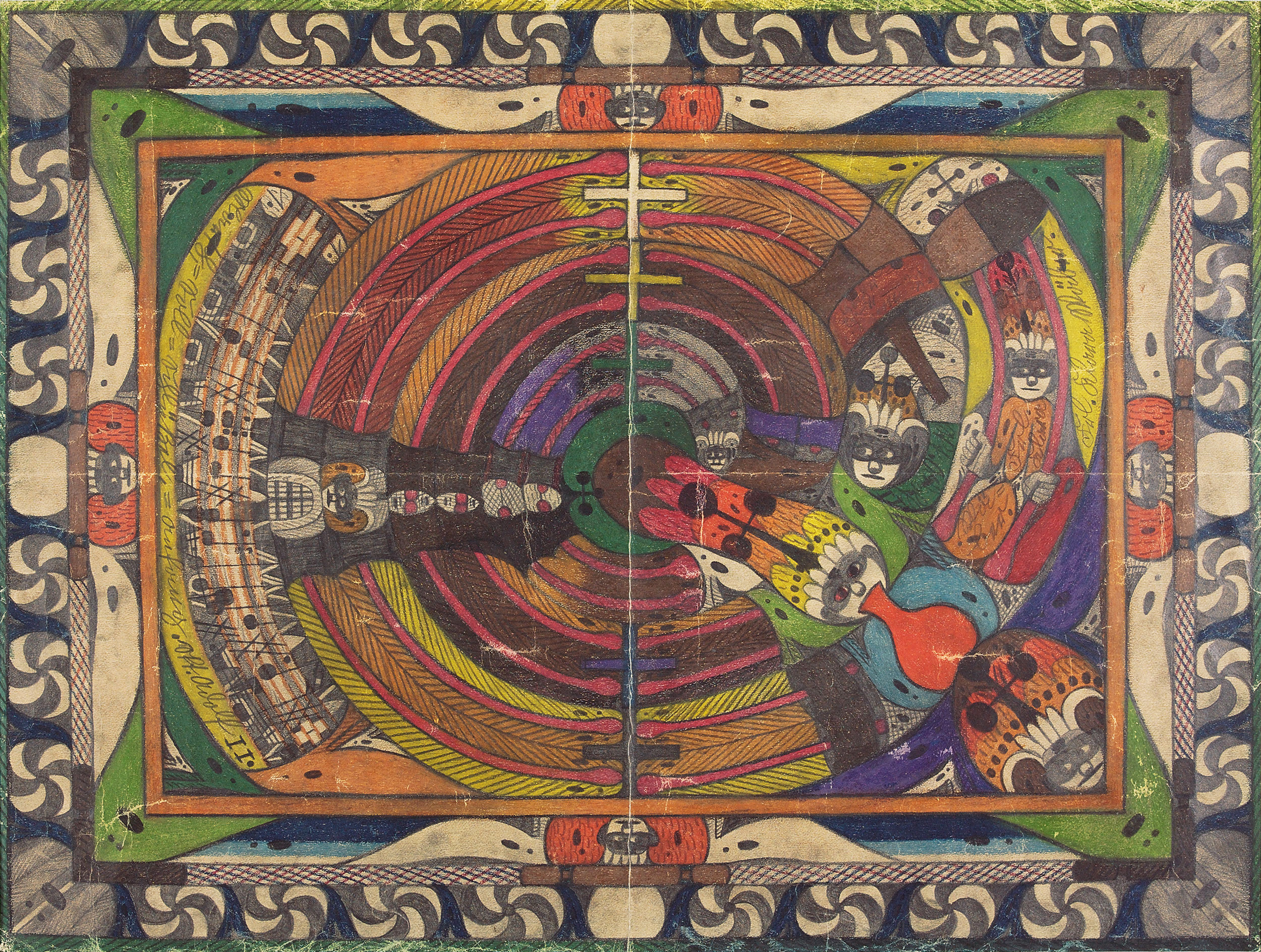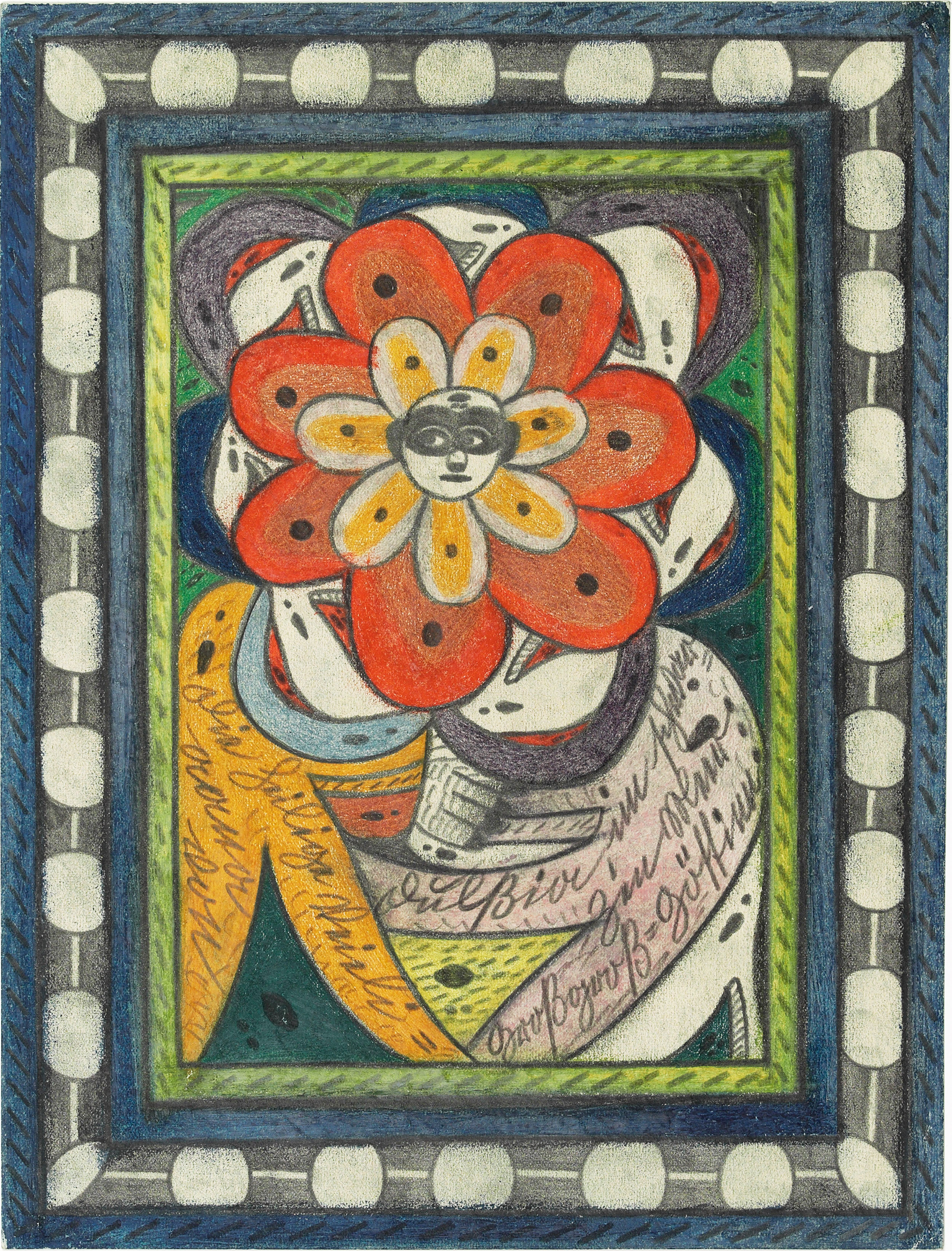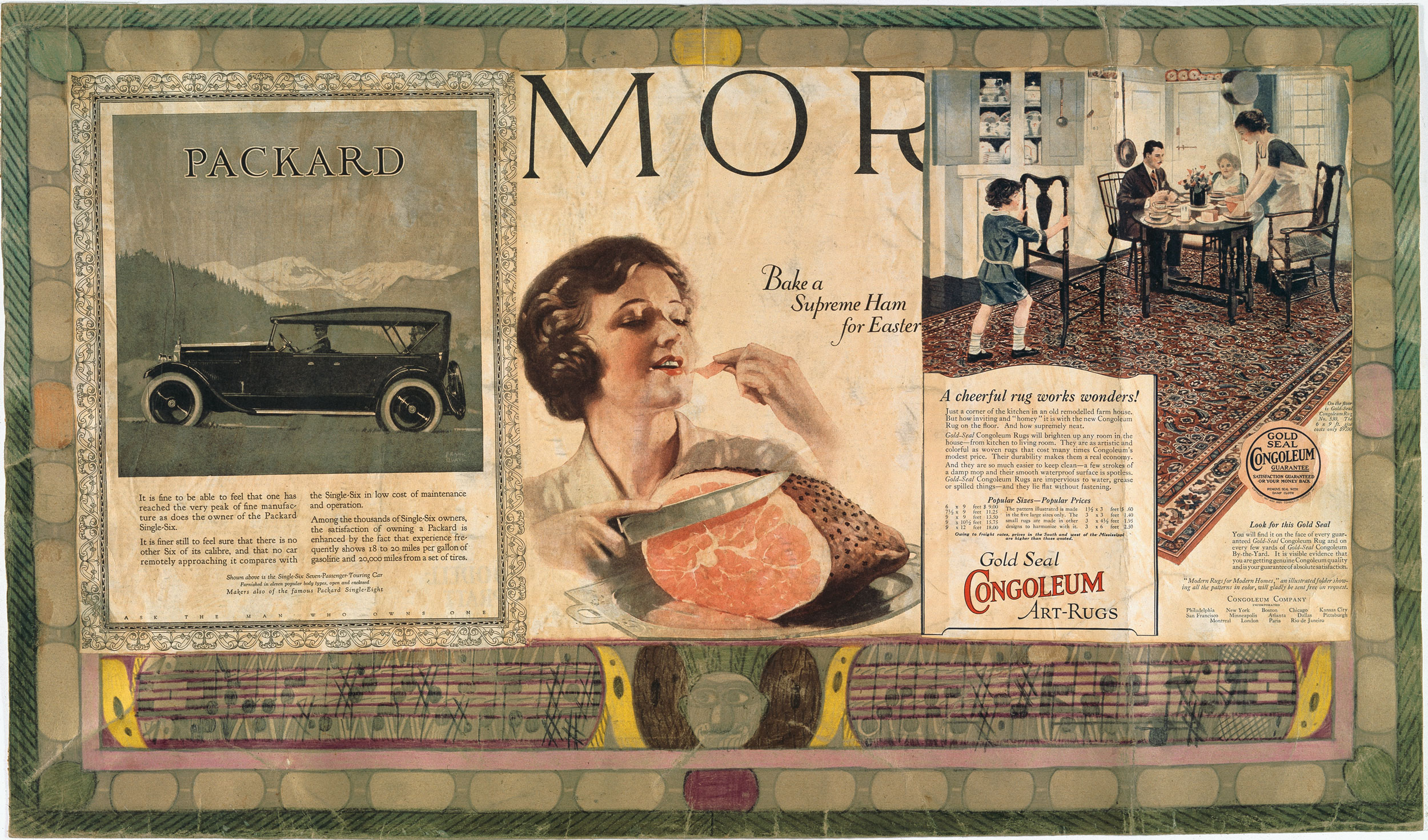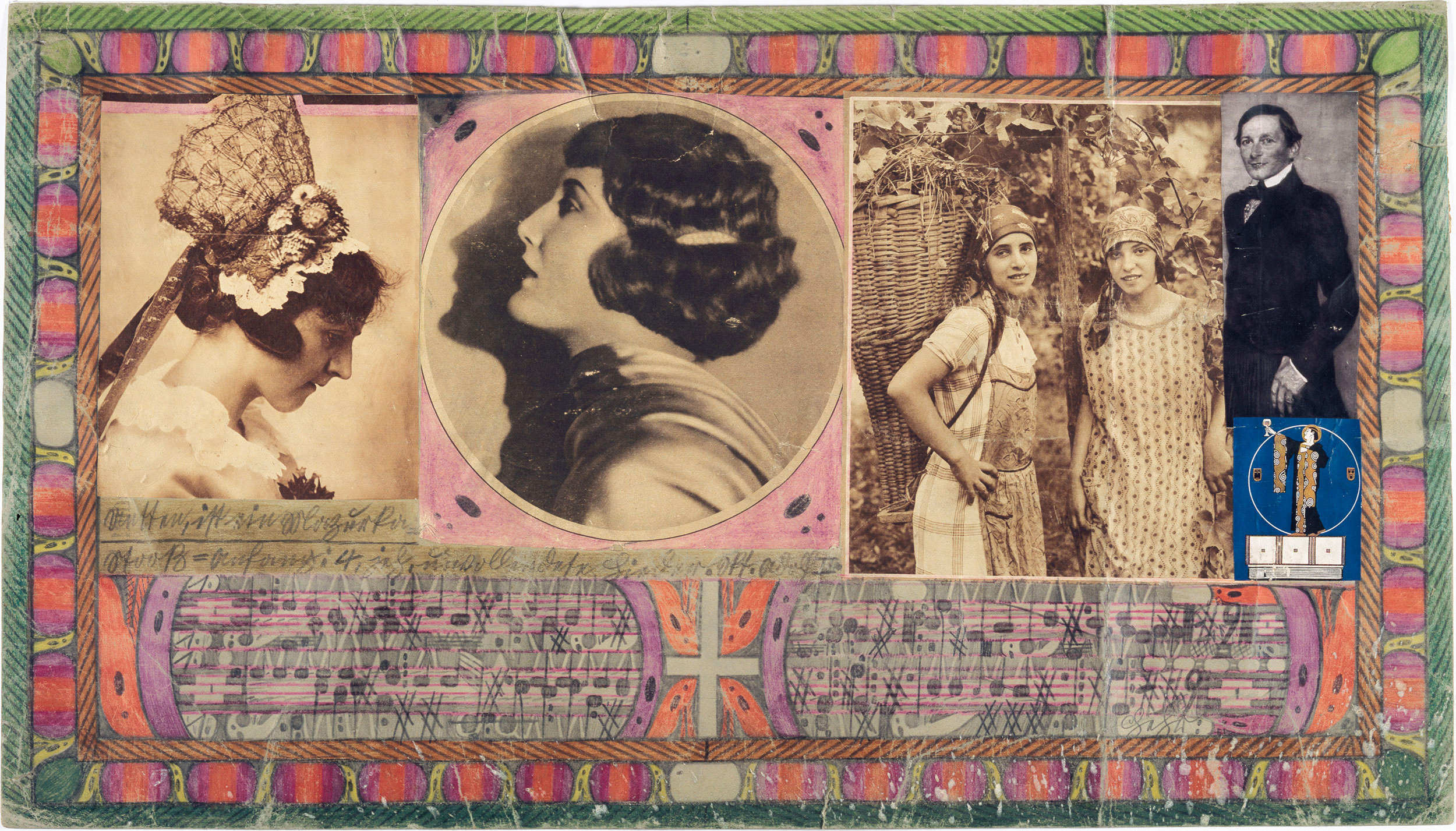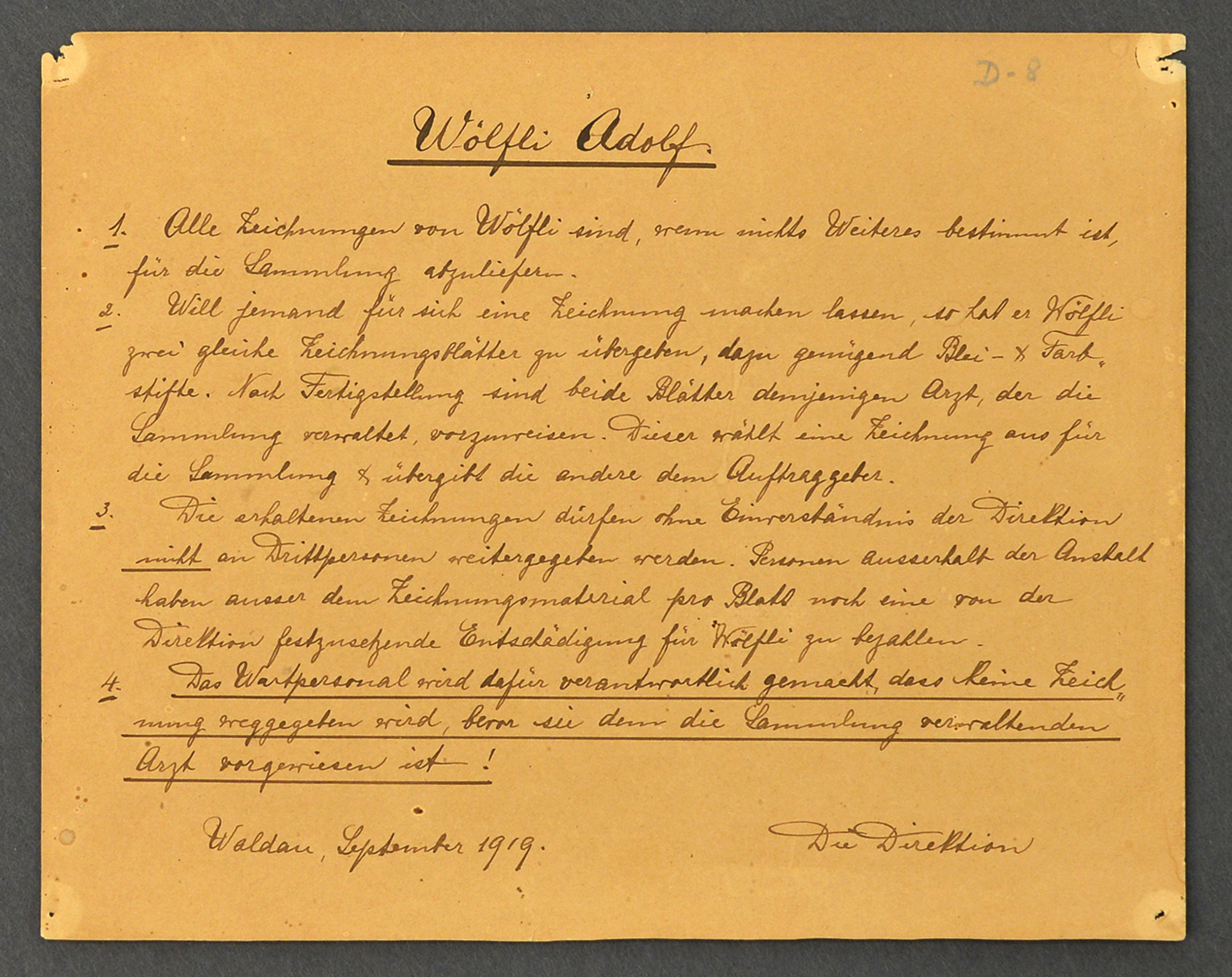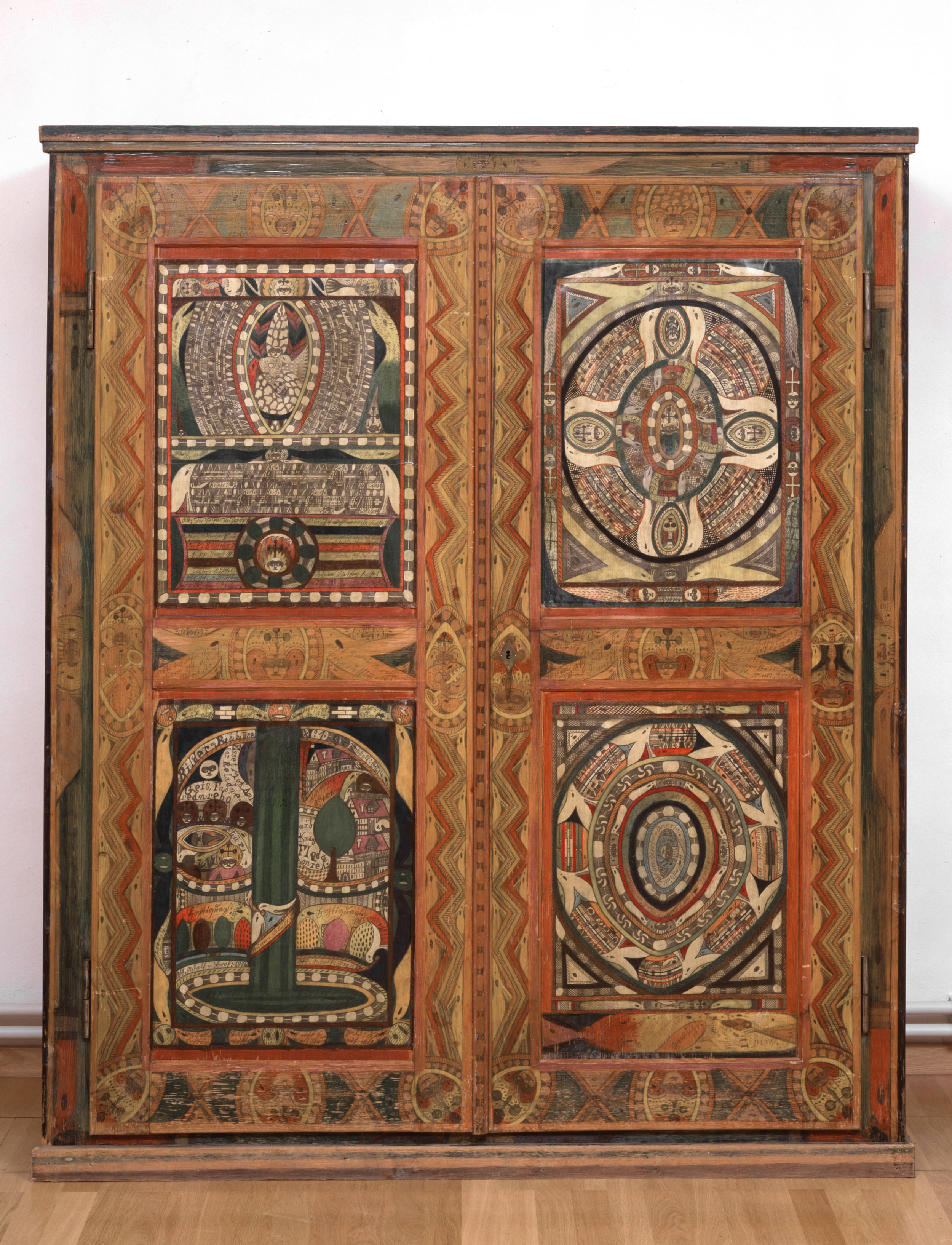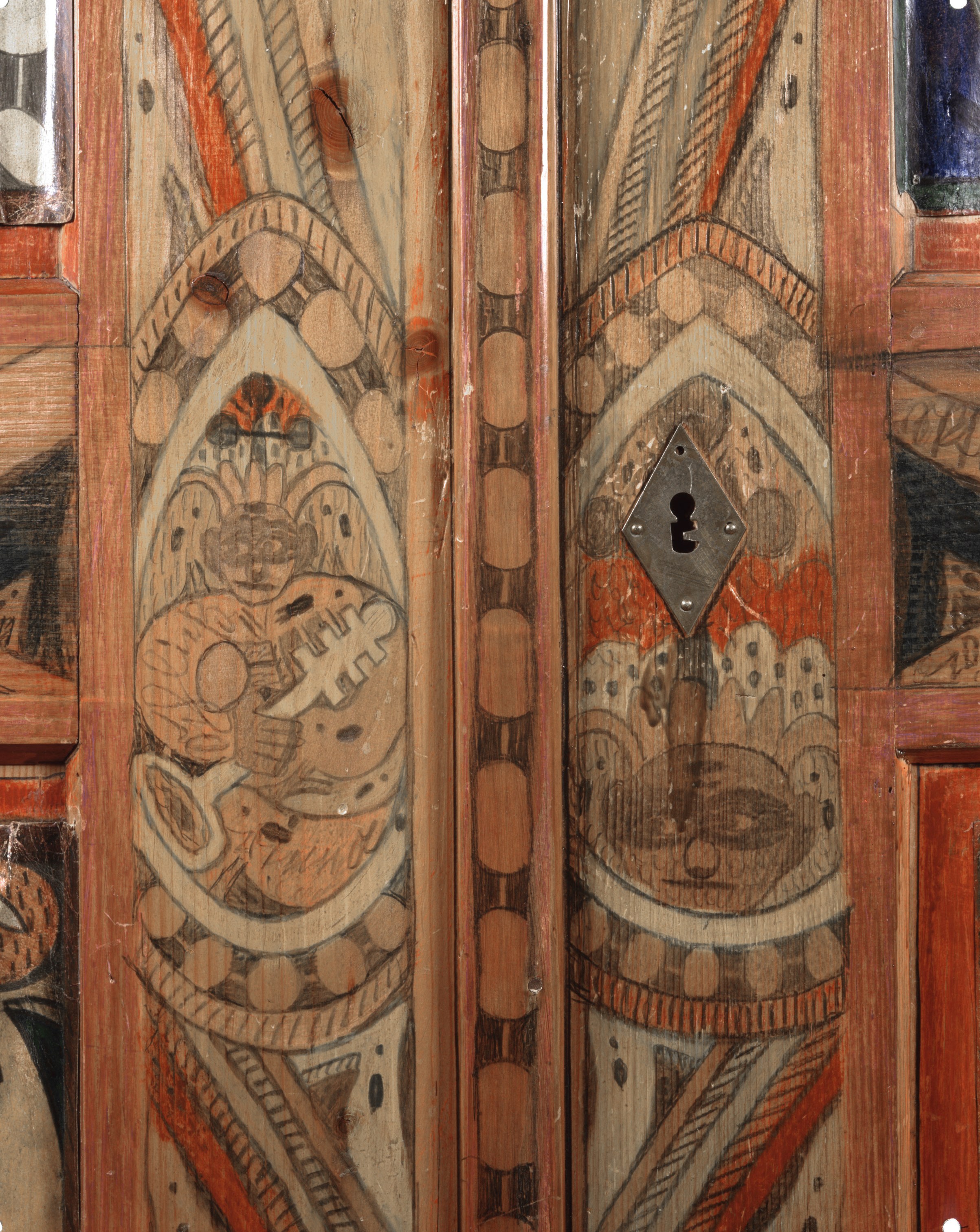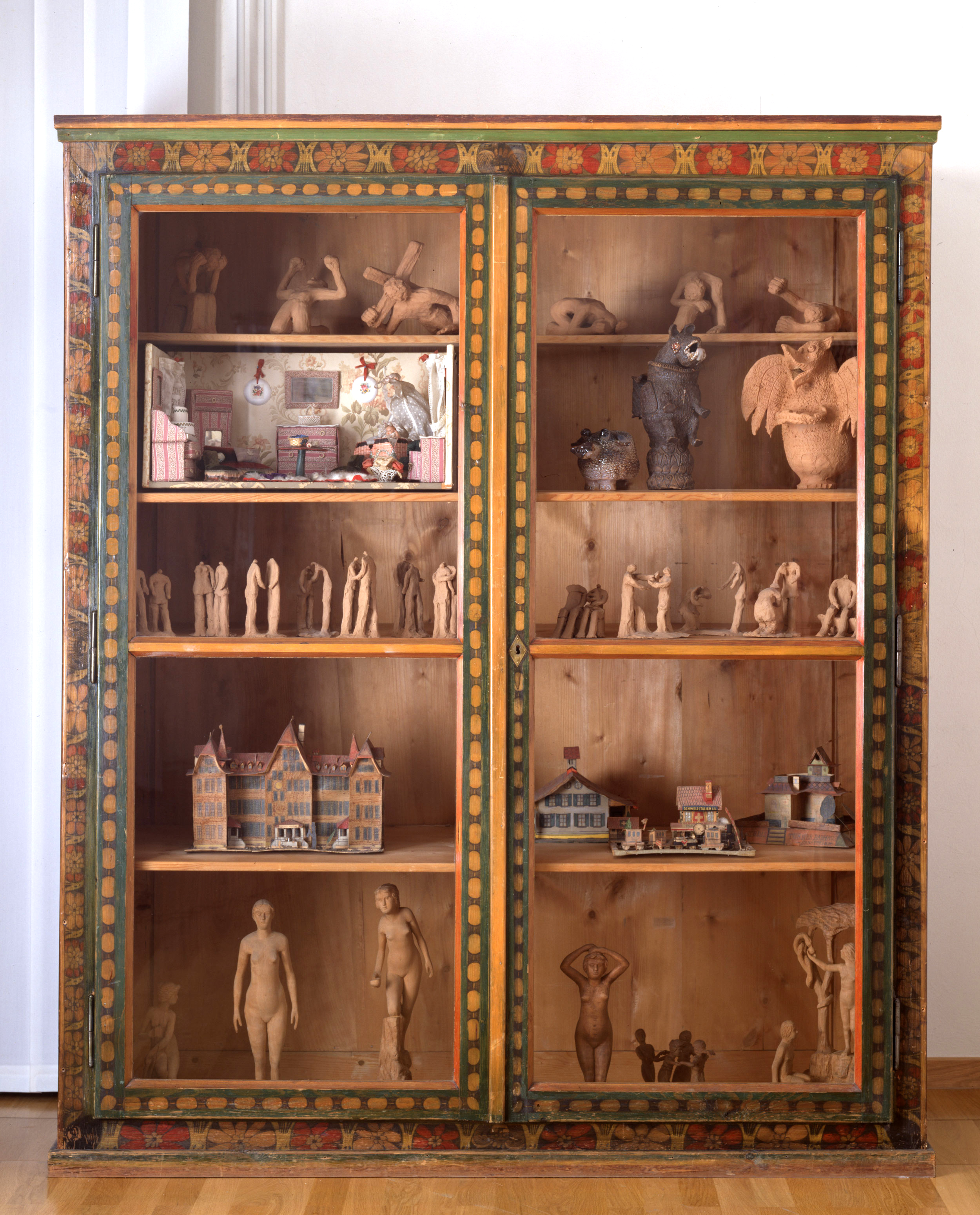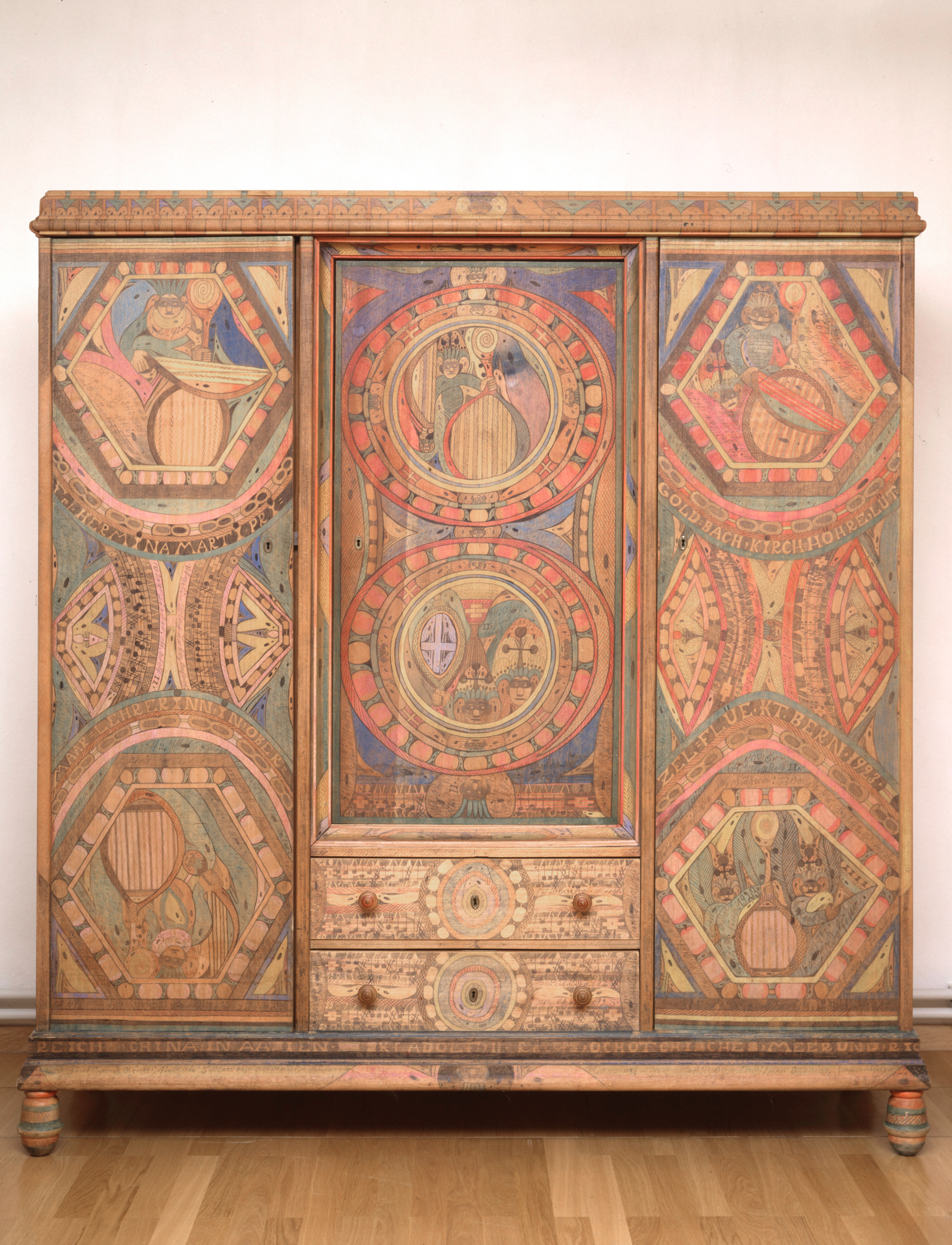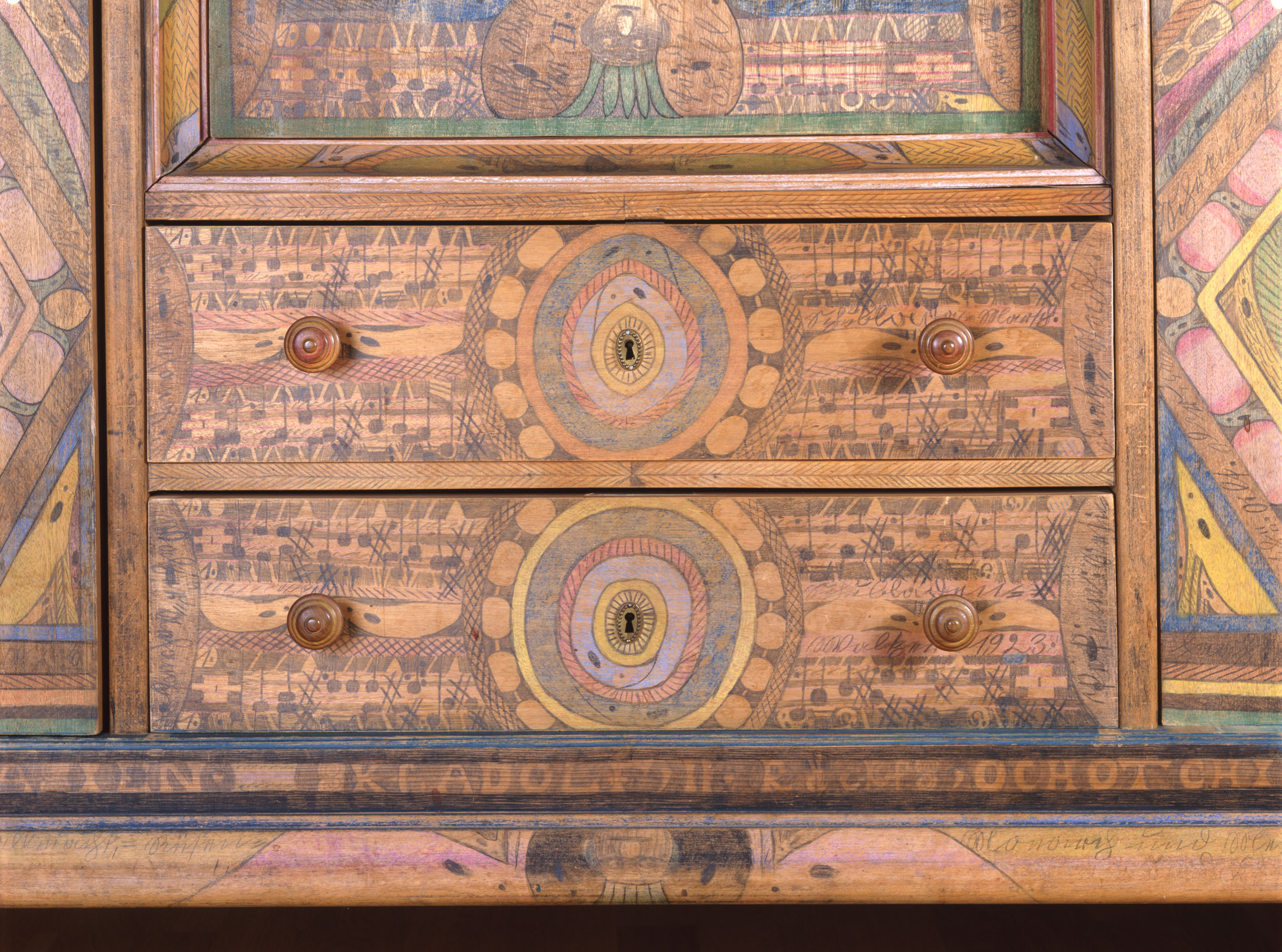Patient Records, October 19, 1902
“He has drawn very industriously for the entire summer and used up his pencil weekly; his drawings are very stupid stuff, a chaotic jumble of notes, words, figures, and he gives to the individual pieces fantastic names such as: ‘Trumpetstrands,’ ‘Lower Abyss,’ etc.”
Finely drawn and graphically visionary, these early works form a distinctive group in their own right. They also laid the groundwork on which Wölfli’s art would henceforth develop. Those formal elements and motifs that were to become important to the continuity of his output are already identifiably present. The structuring elements are lines of notation that are not yet filled with notes. The narrative scenes are embedded in a lavishly ornamental scheme interspersed with passages of text. Some compositions grow beyond the bounds of a single sheet, spreading onto two or even four. Wölfli’s tendency to work in series and his love of narrative are thus clearly apparent even here. Some of the black-and-white drawings on unprinted newsprint are signed with the words: “Adolf Wölfli, Composer of Schangnau,” and Wölfli himself described them as “musical compositions.”
Patient Records, November 1900
“Patient draws a lot of notes and composes (he says) large pieces of music.”
Around 1907 Wölfli switched to color, which was to become a defining element of the drawings embedded in his writings. The change was perhaps prompted by the young psychiatrist, Walter Morgenthaler, who first came to Waldau to do a residency there as part of his medical training in 1907. He returned as a junior doctor from 1908 to 1910, and was a senior consultant there from 1913 to 1920.
Morgenthaler followed Wölfli’s work with interest and was very supportive of it. In 1921 he published his own eyewitness account of Wölfli’s life and works and with it a monograph that has remained a pioneering work of psychopathology and art to this day. Morgenthaler gave his seminal work the programmatic title Ein Geisteskranker als Künstler (A Mental Patient as Artist). In it, he describes Wölfli as an artist and, in a departure from the standard practice of referring to psychiatric patients by their initials only, unabashedly names him by name.

